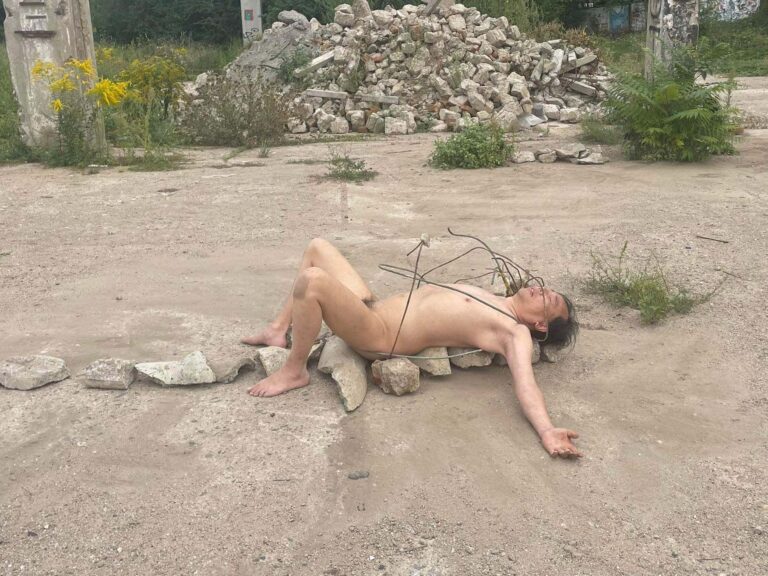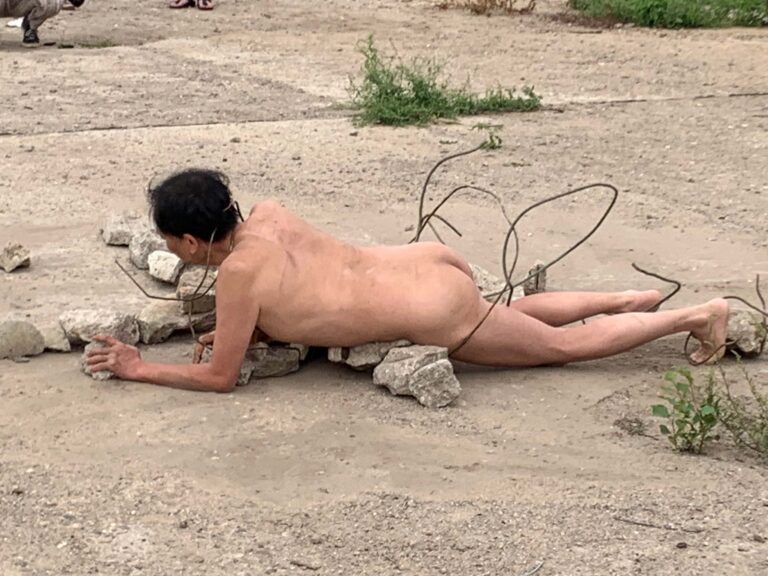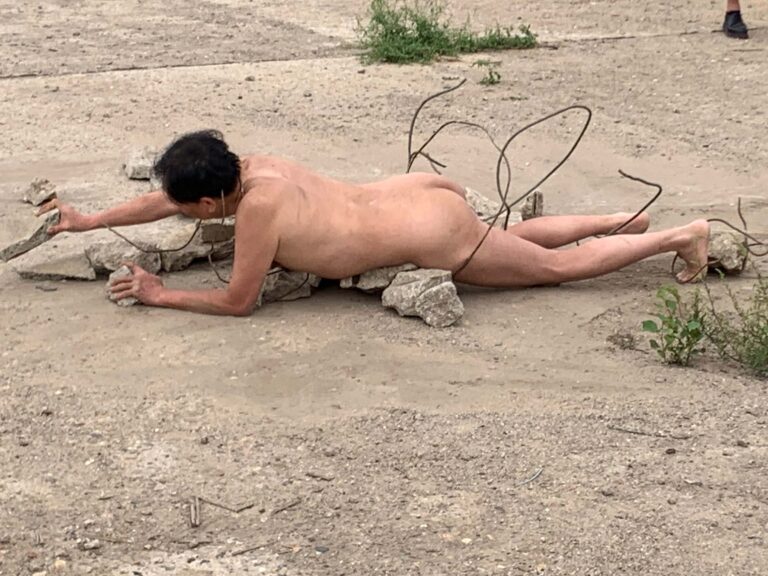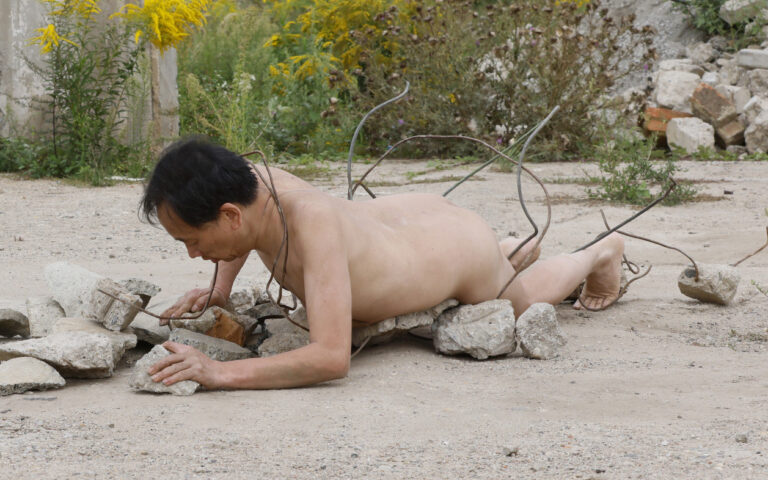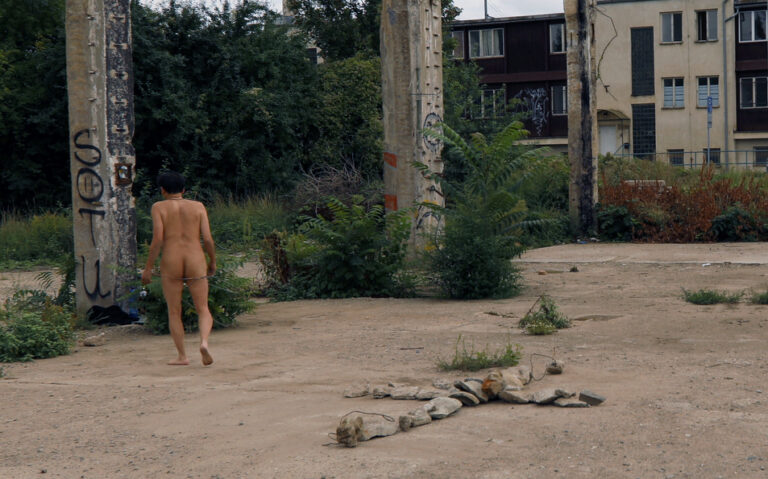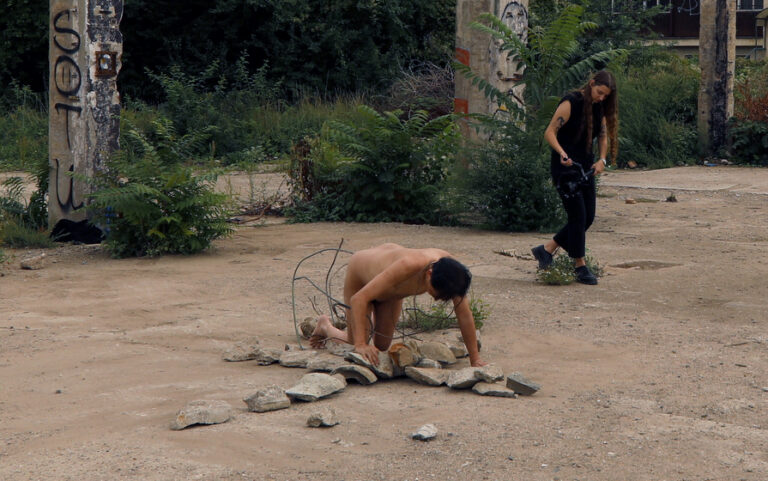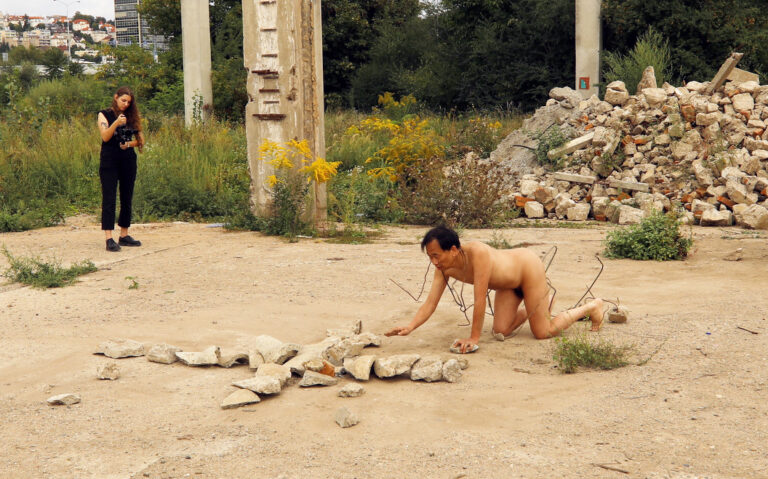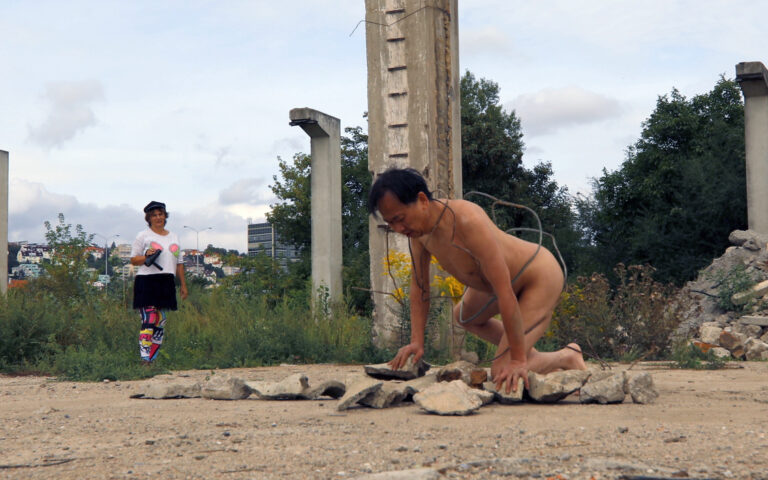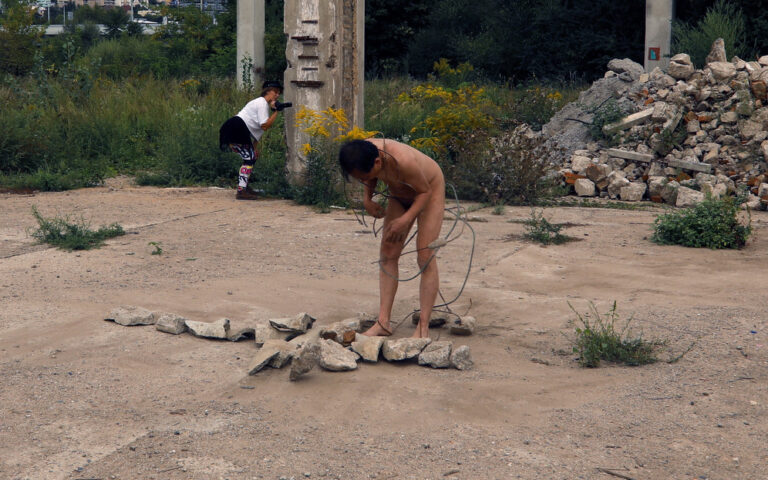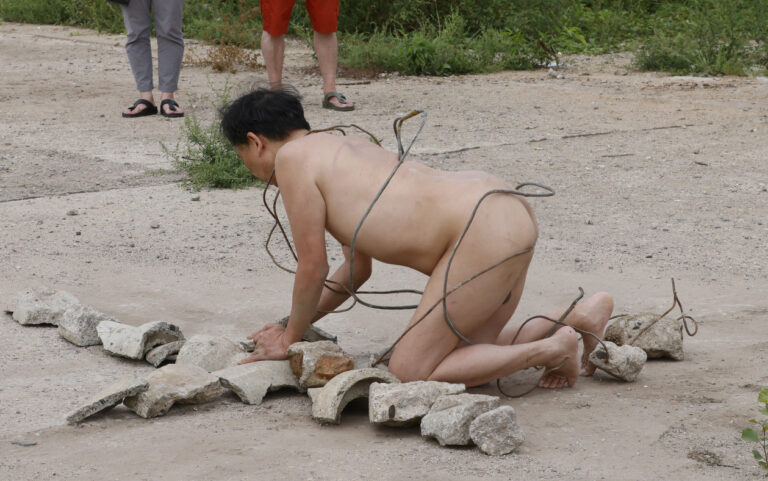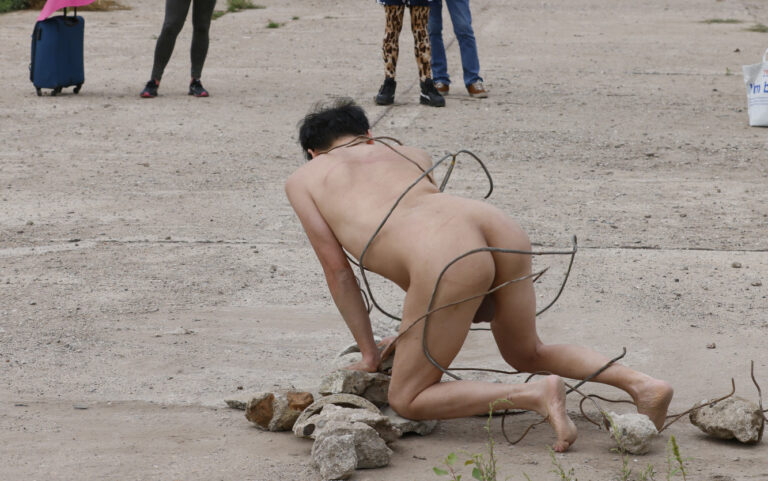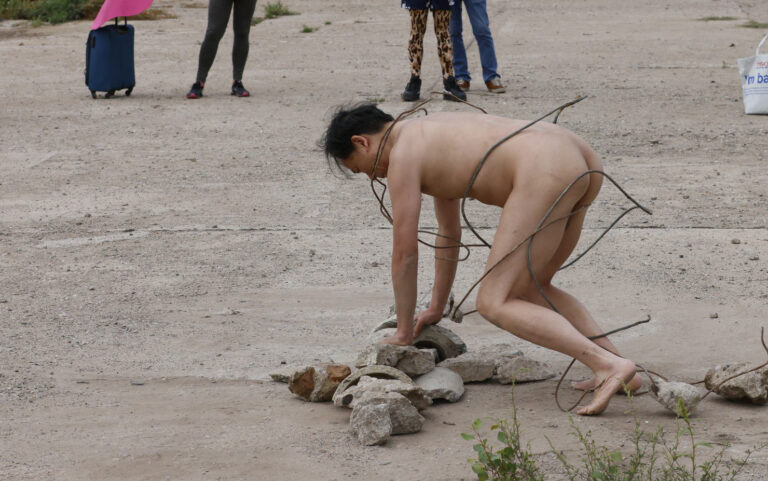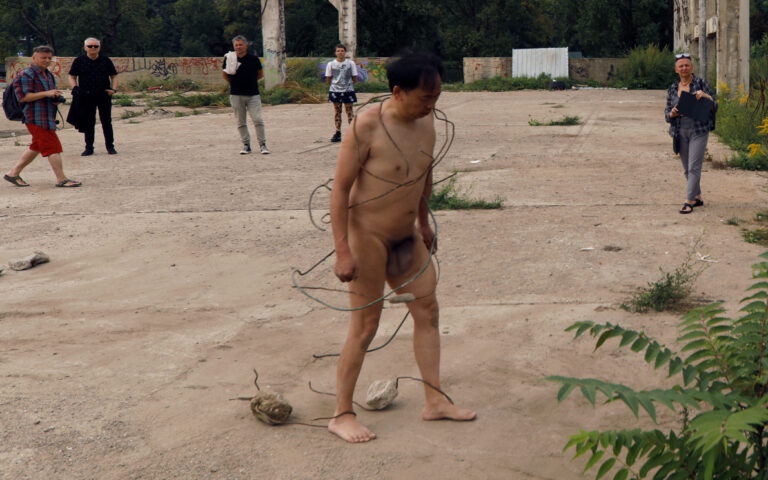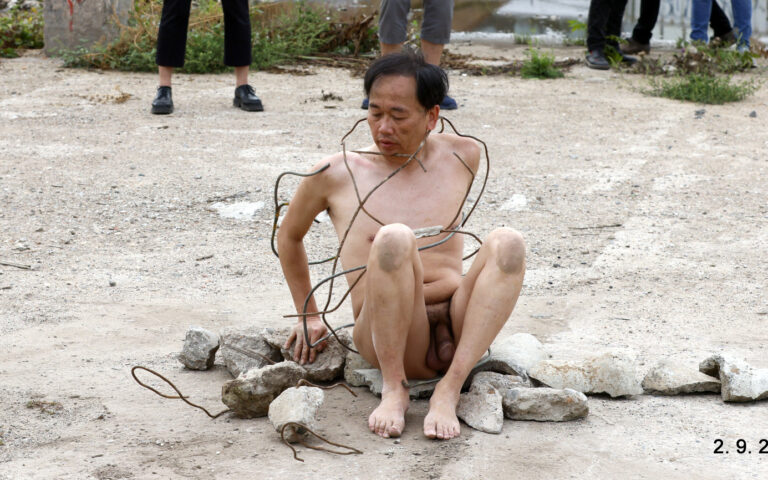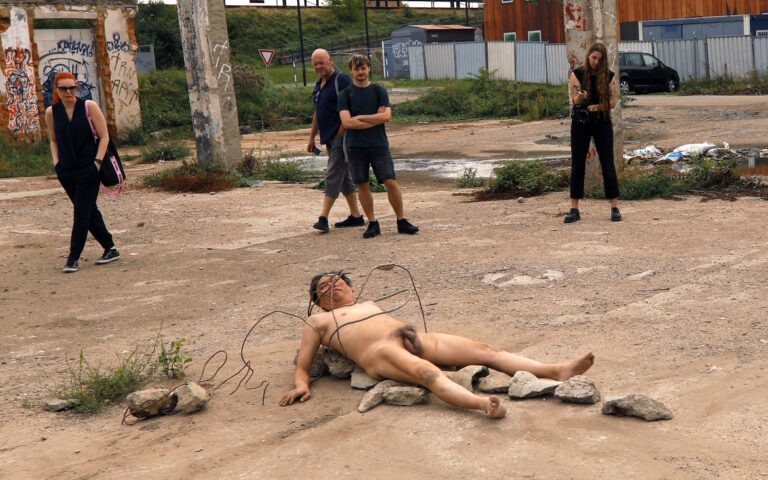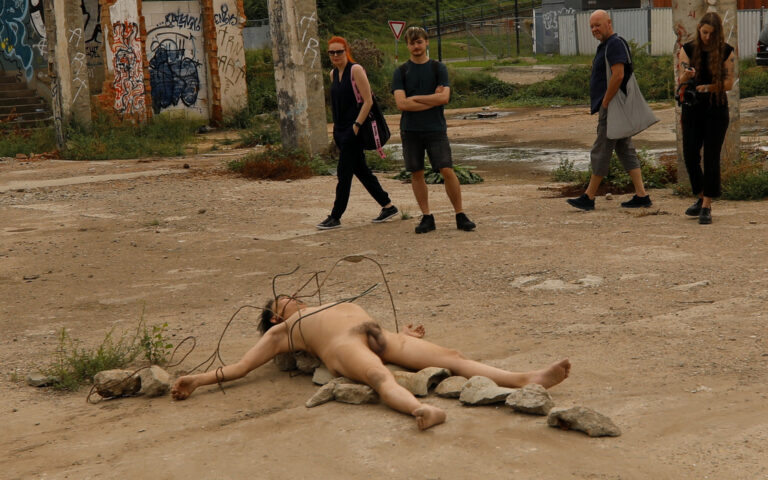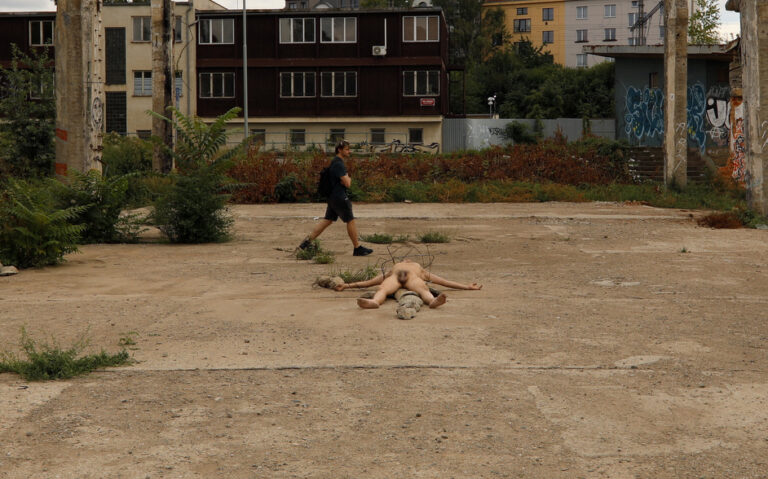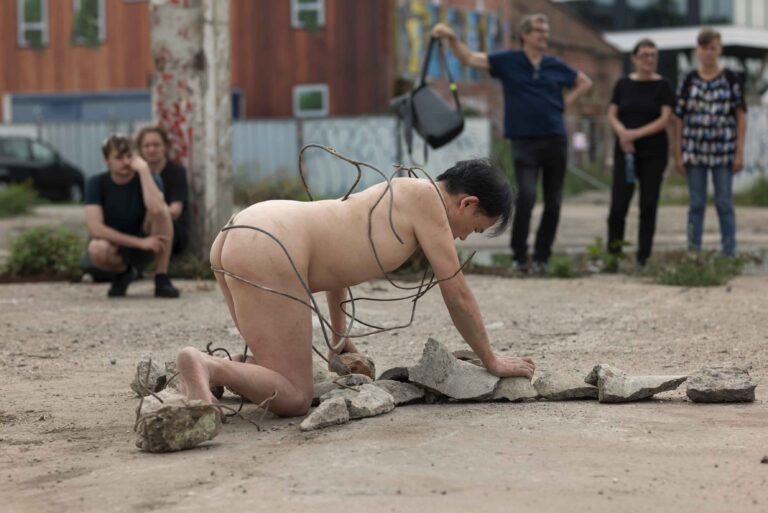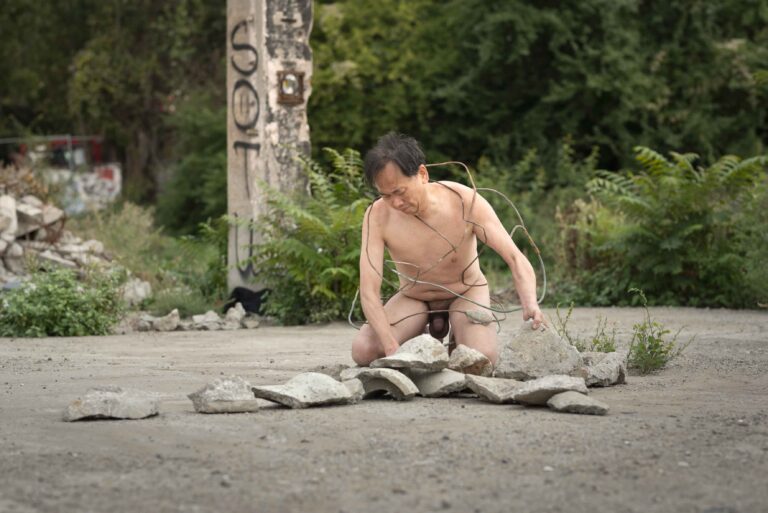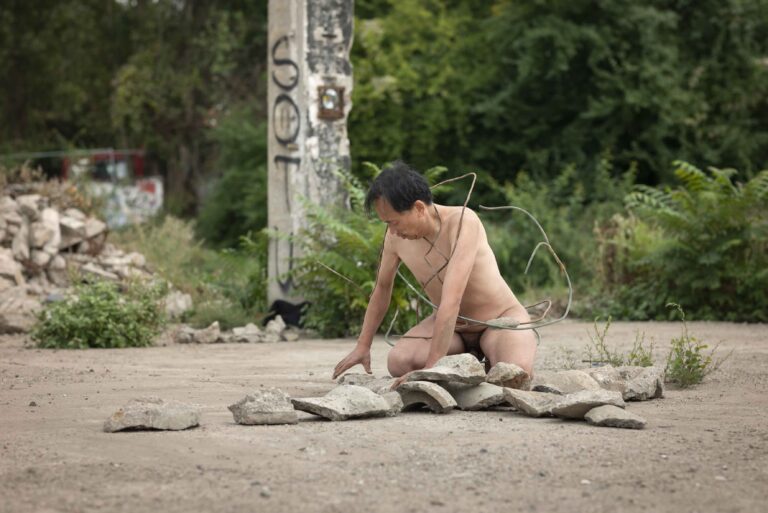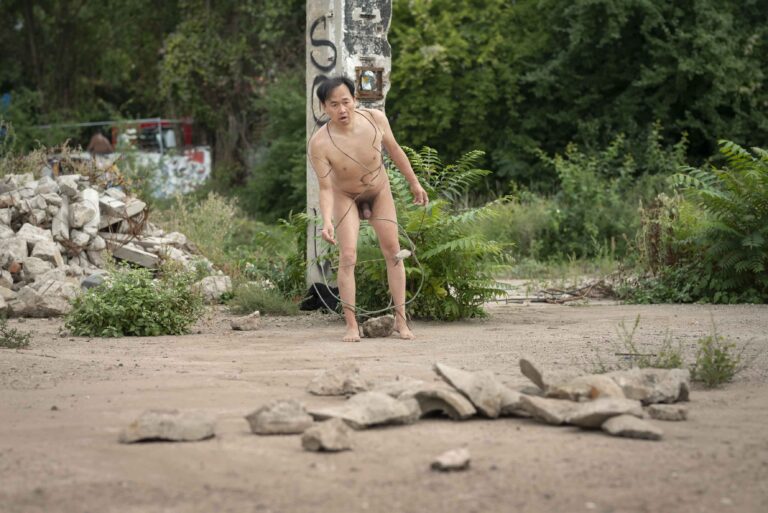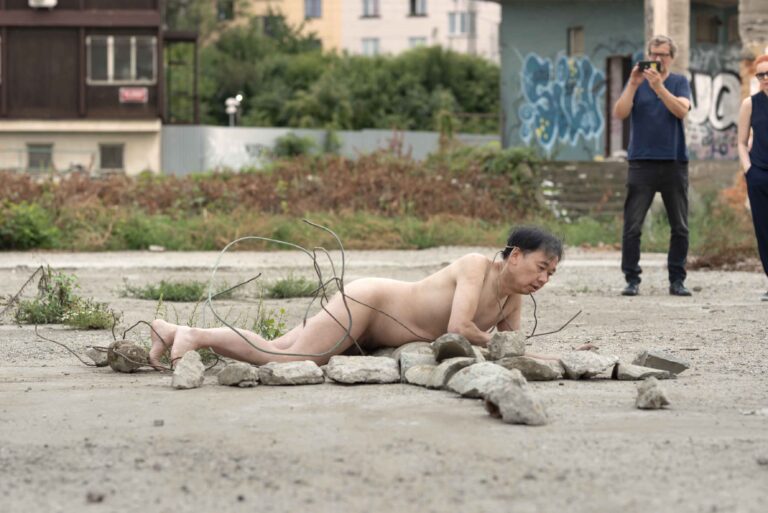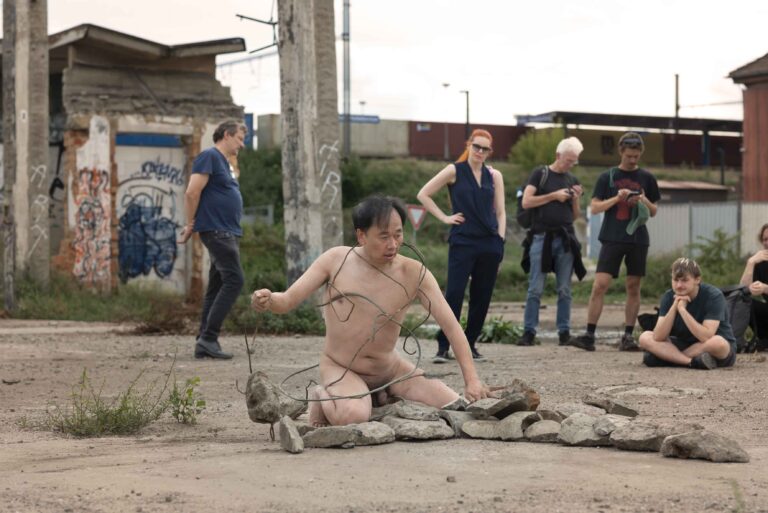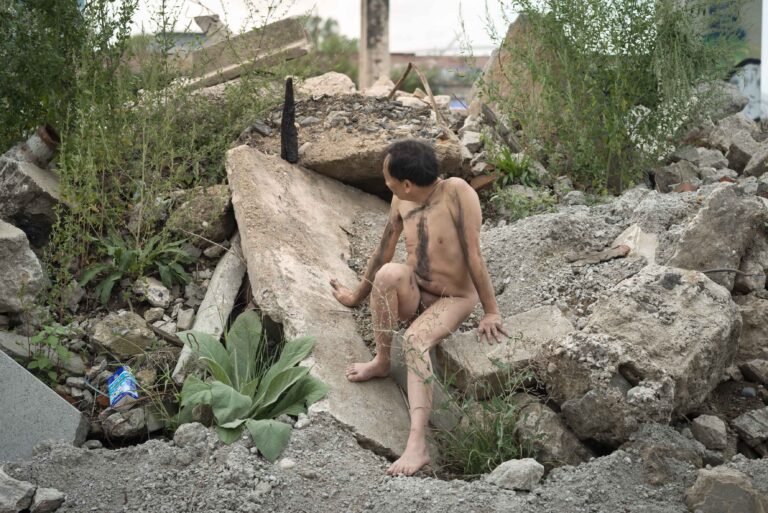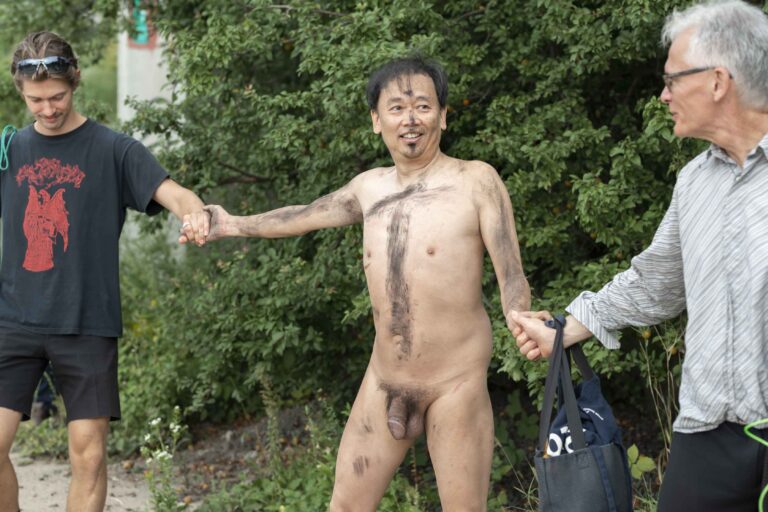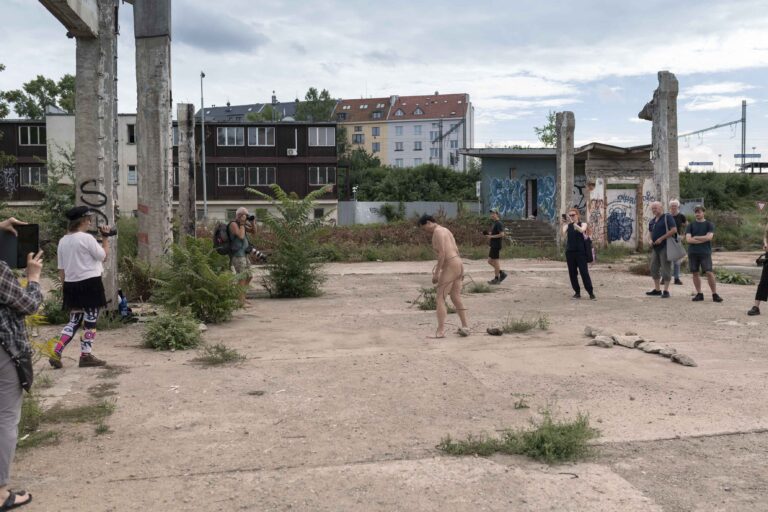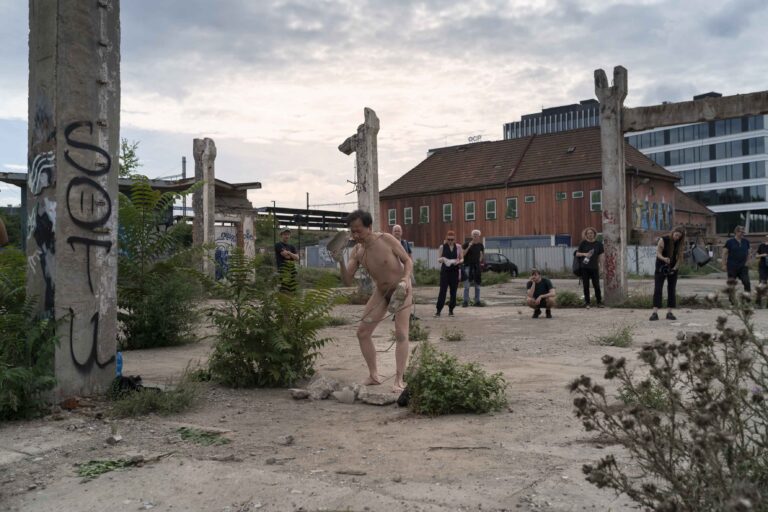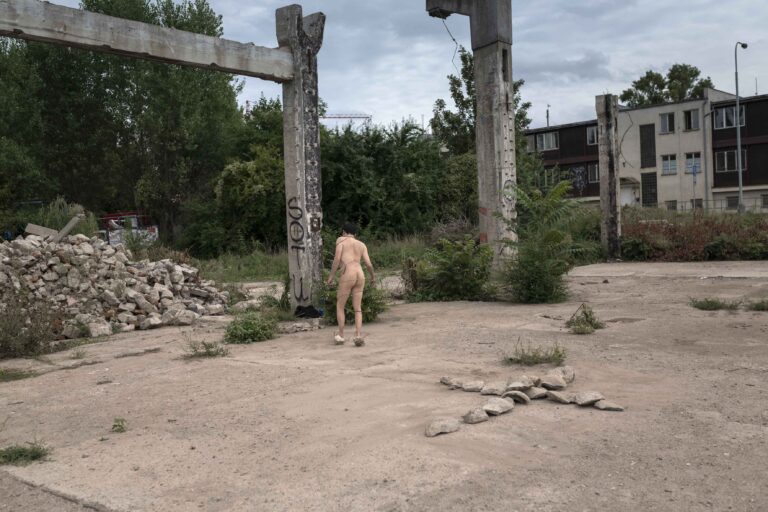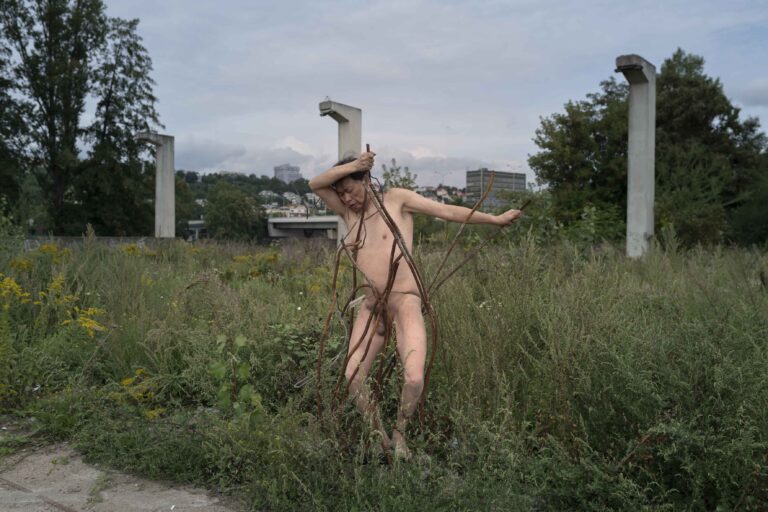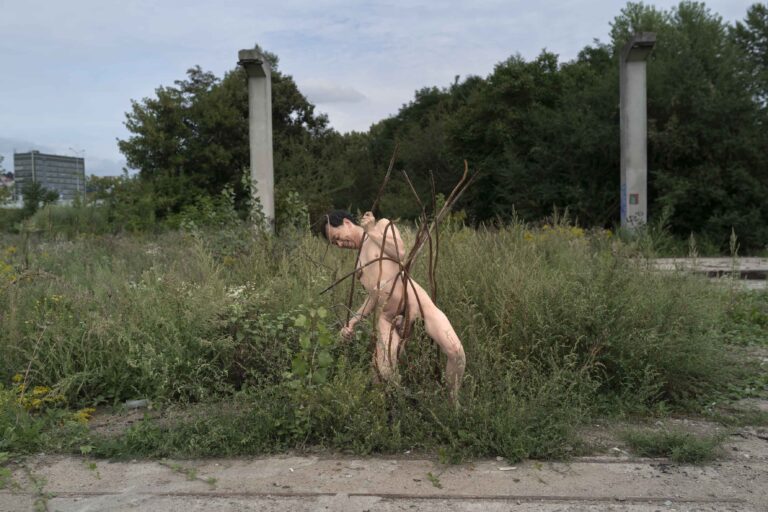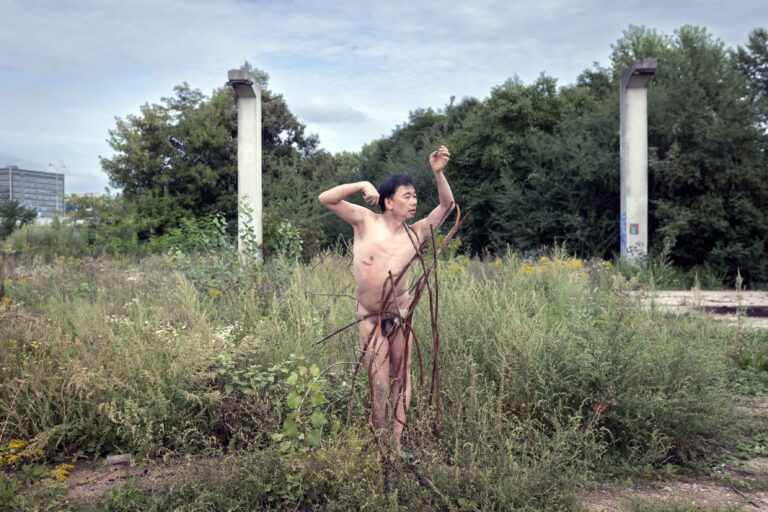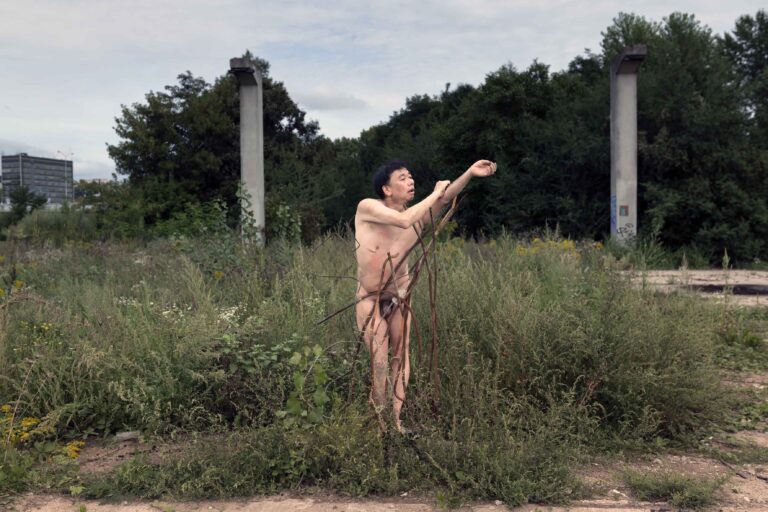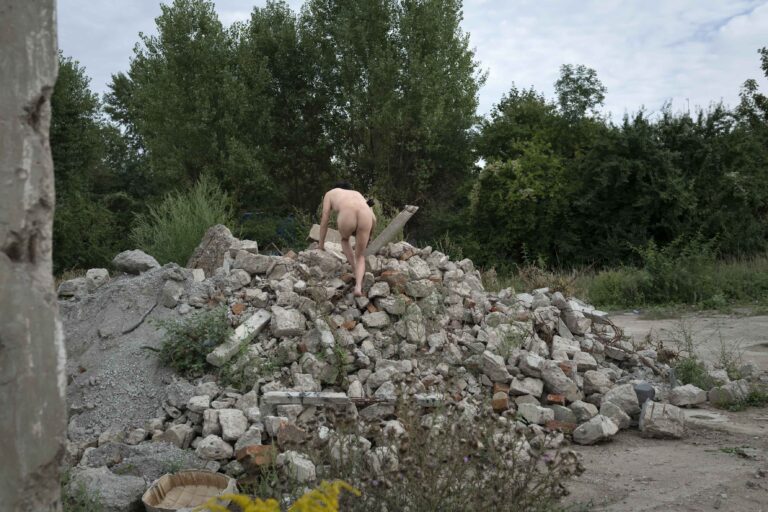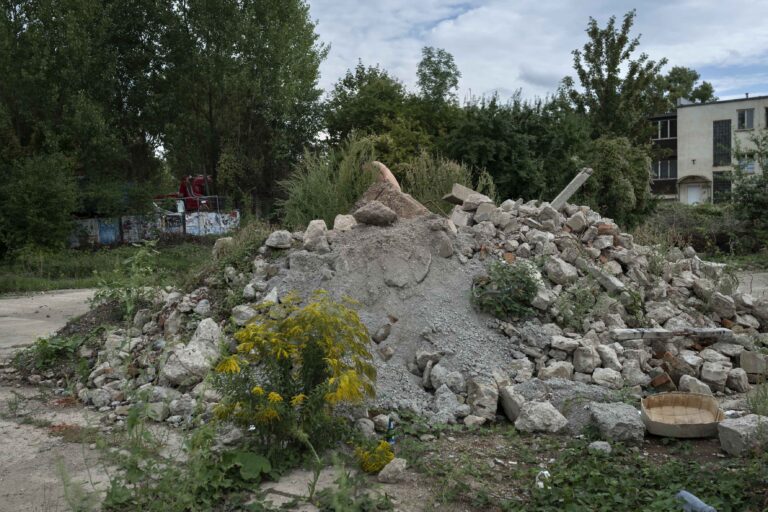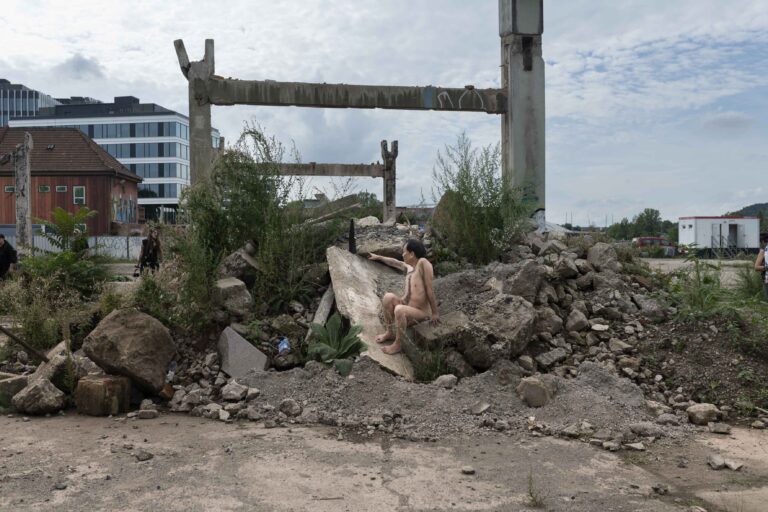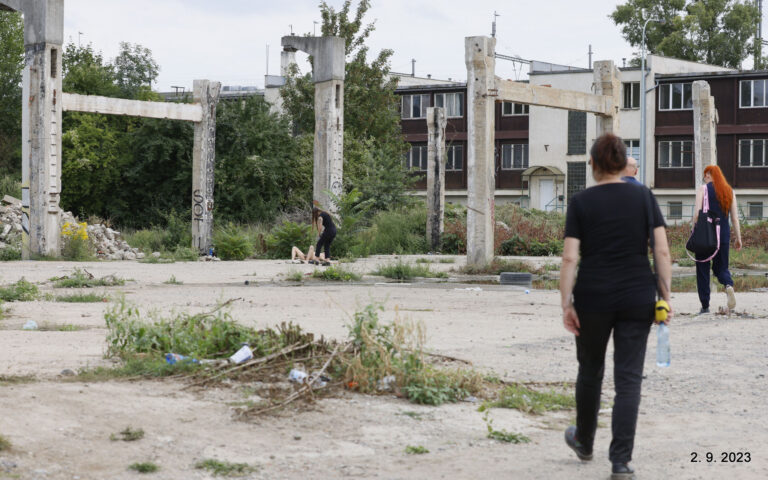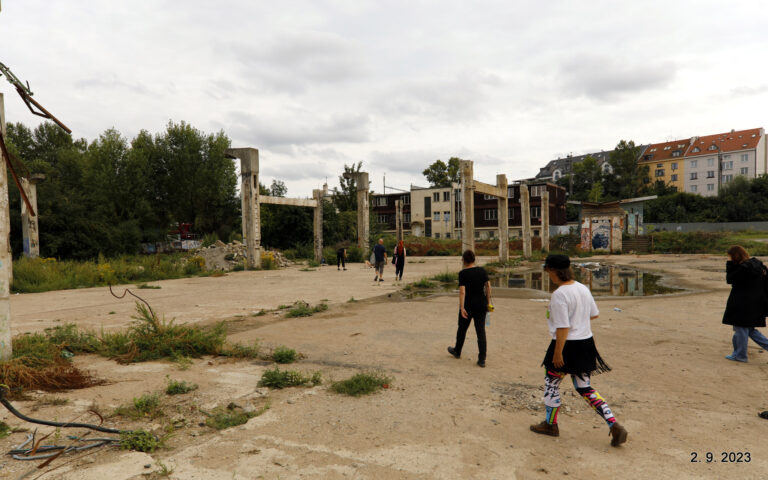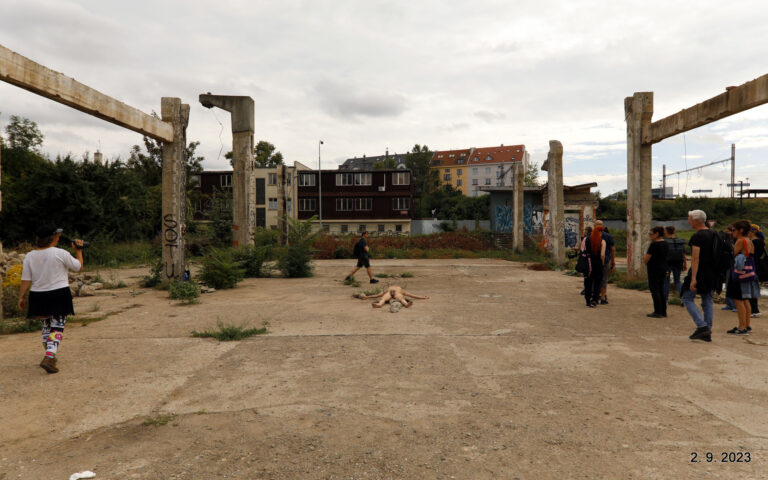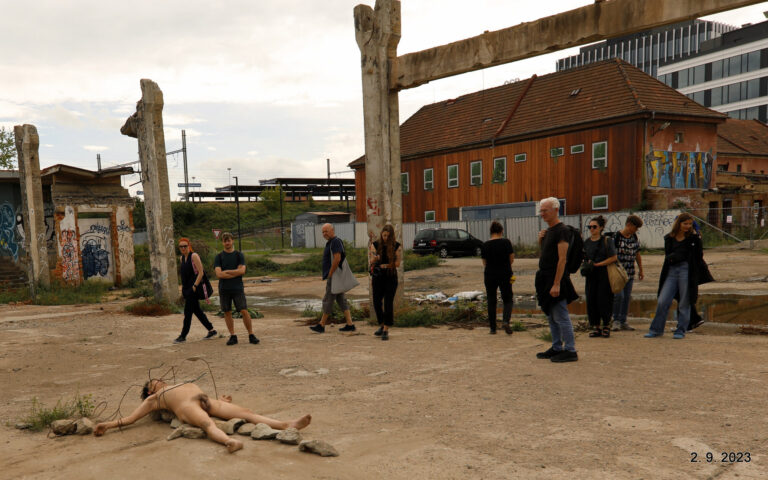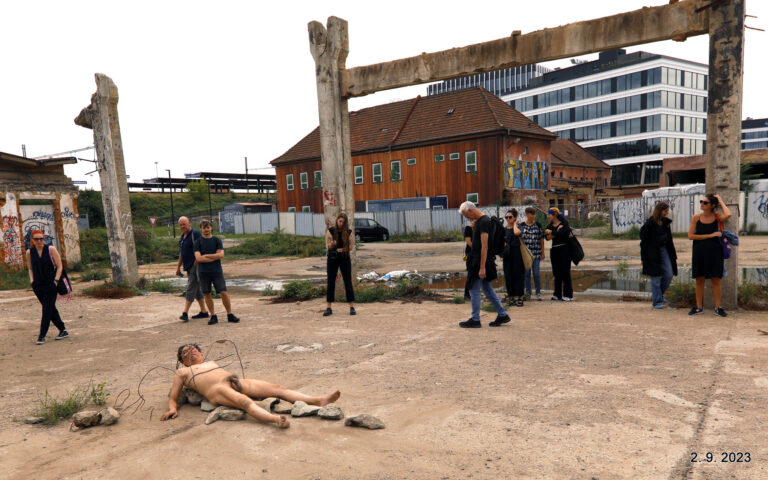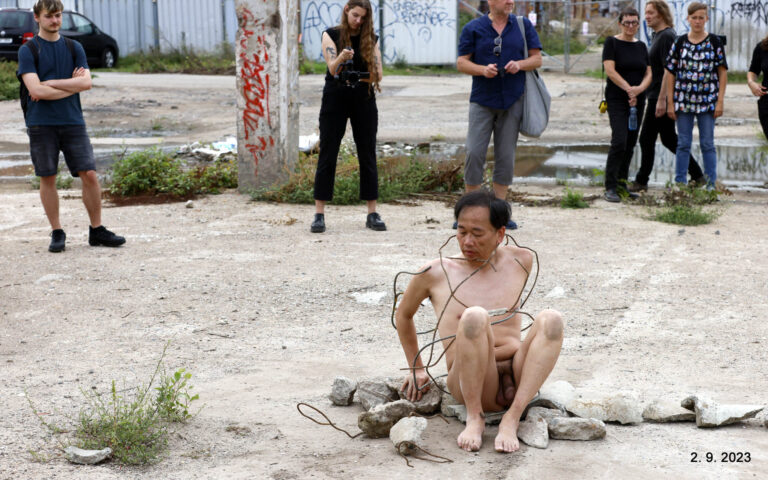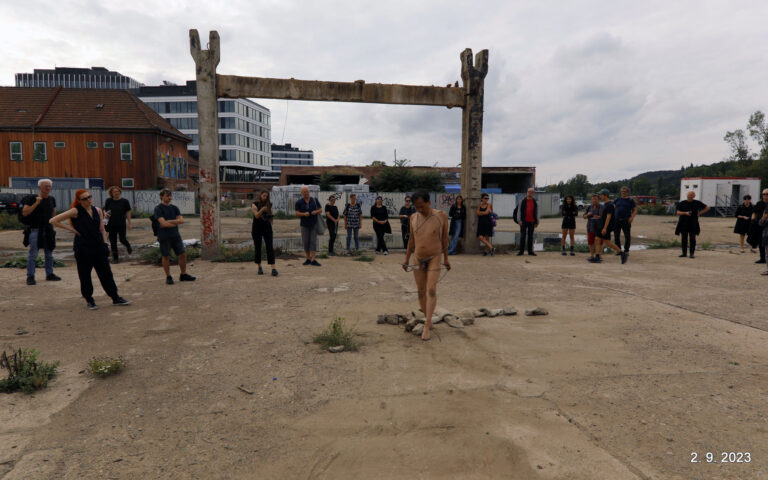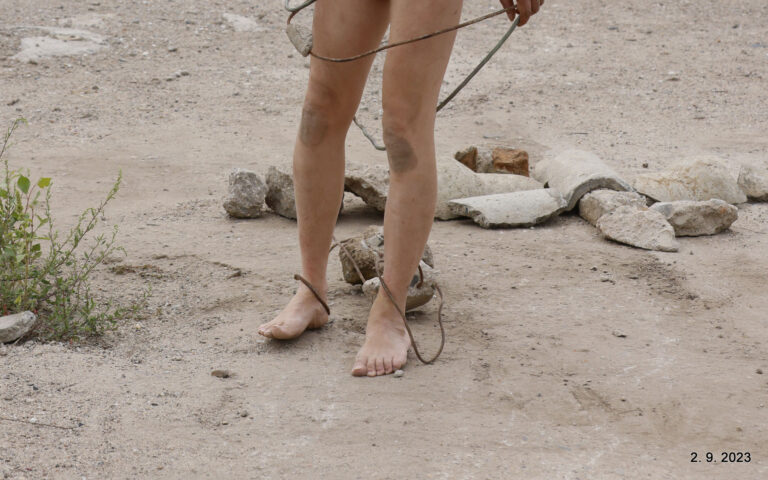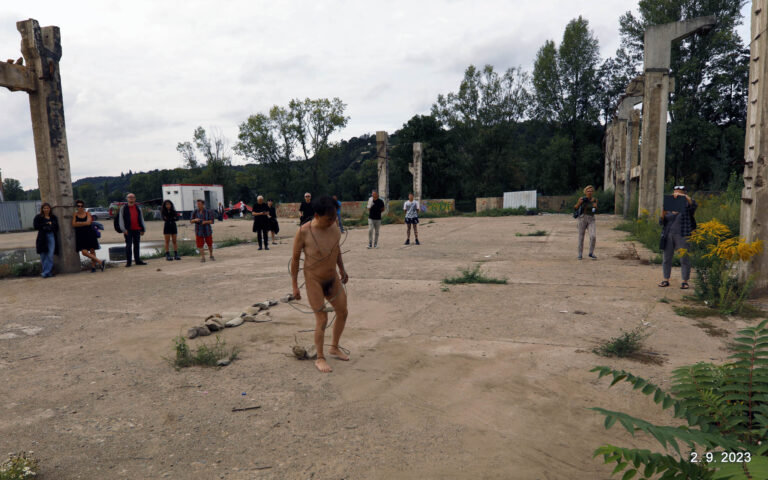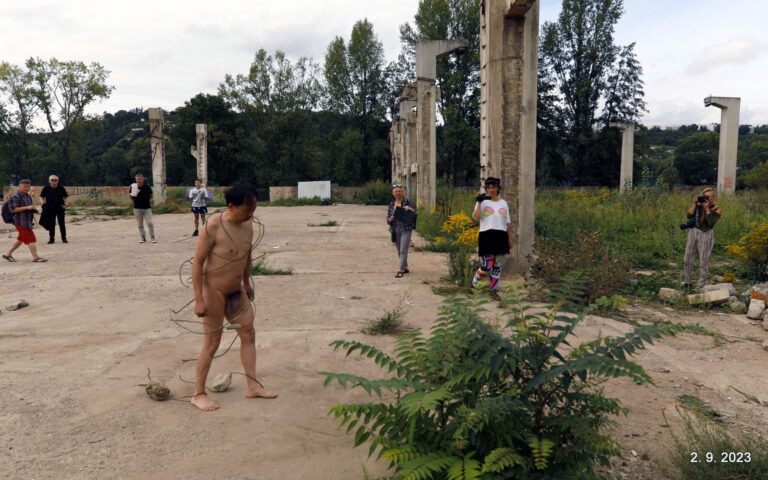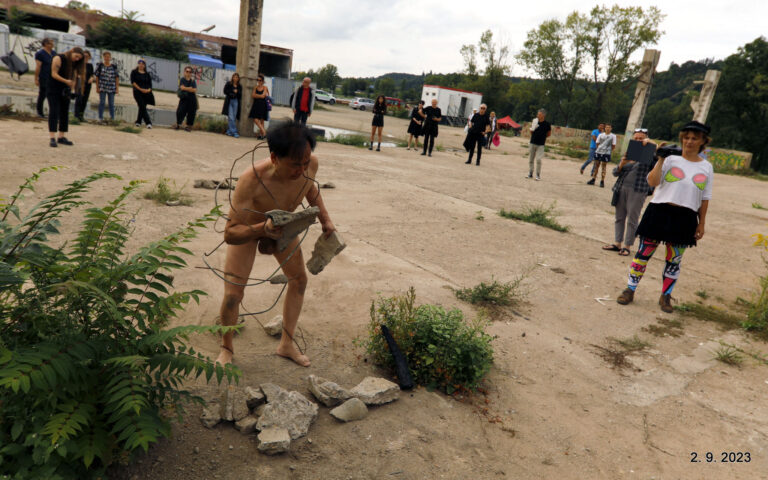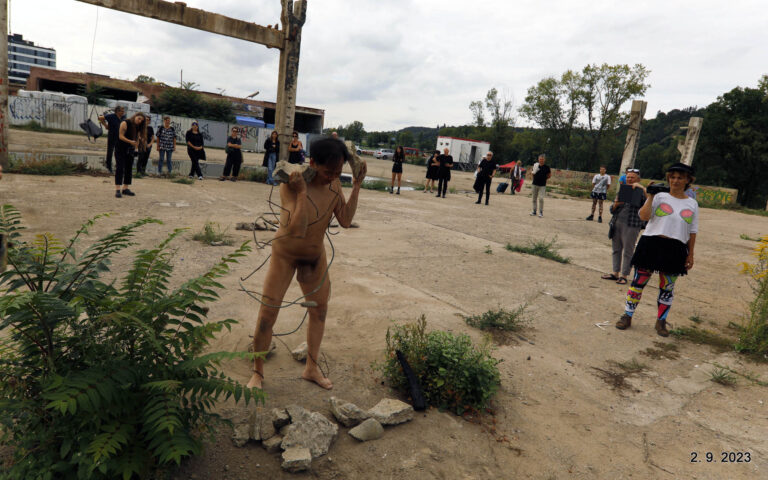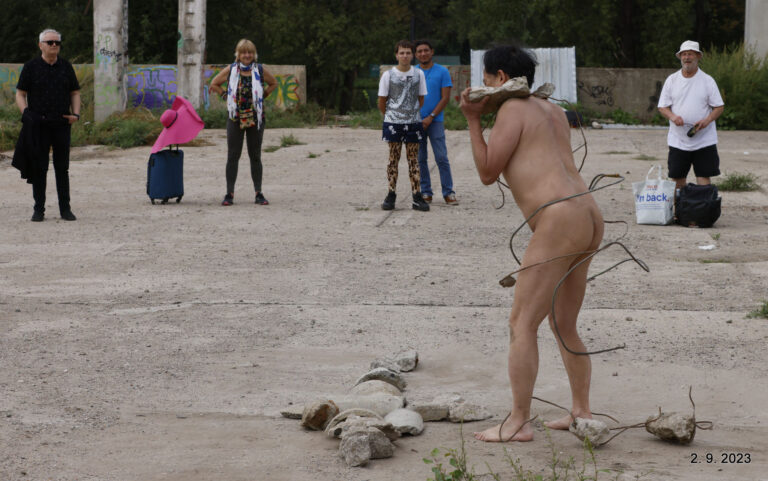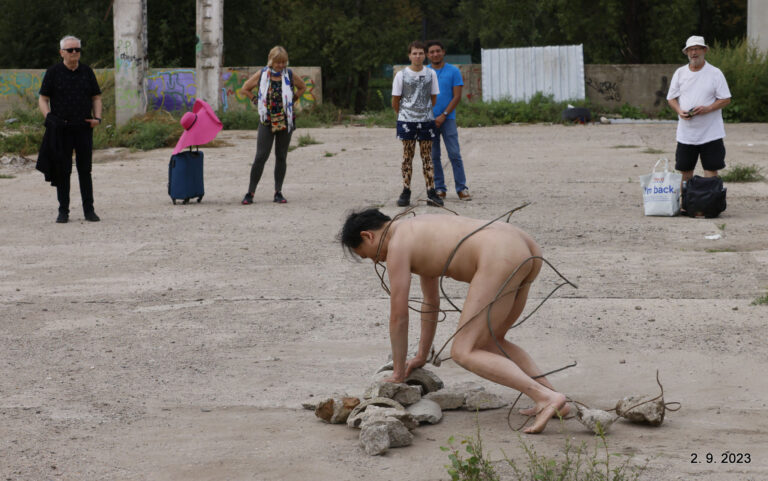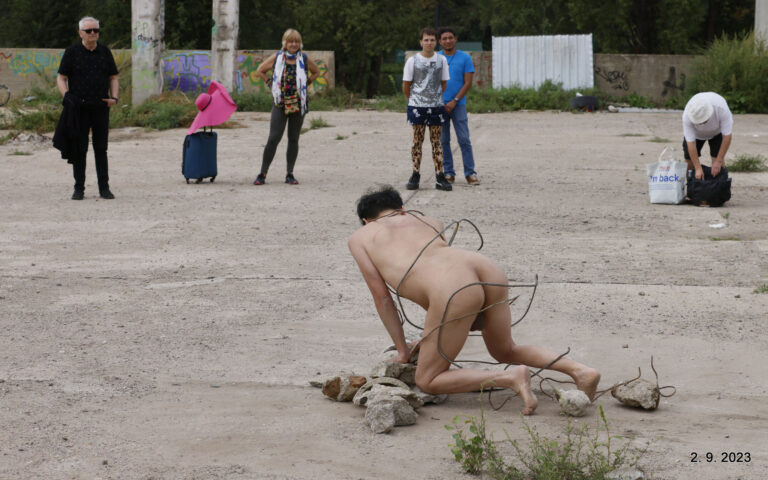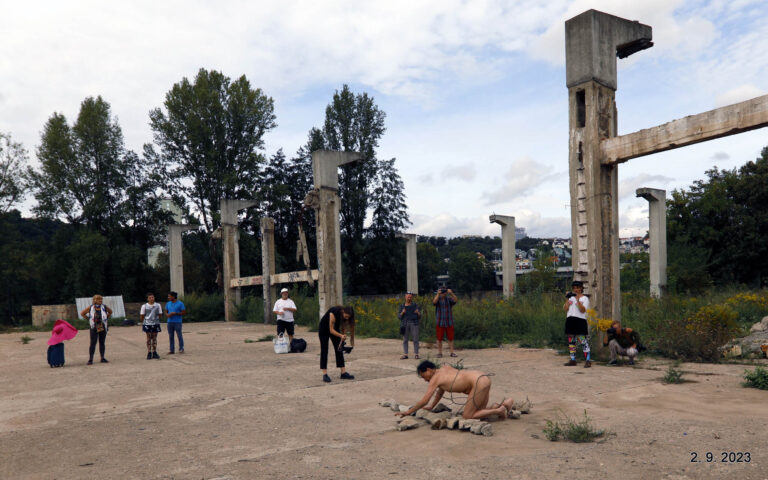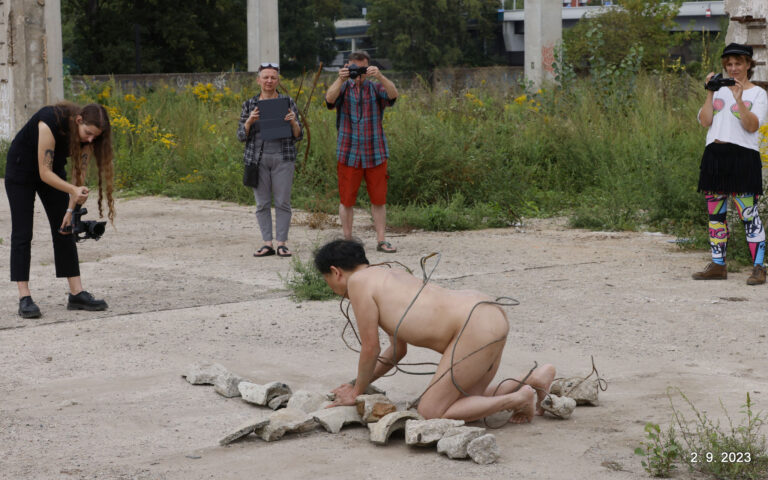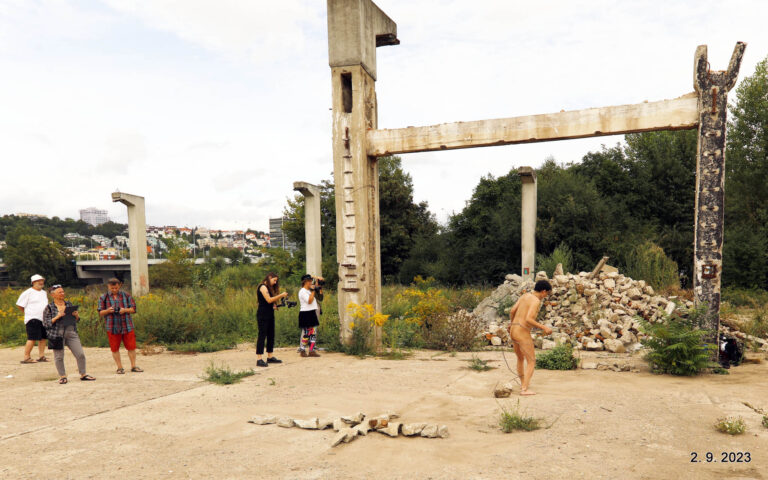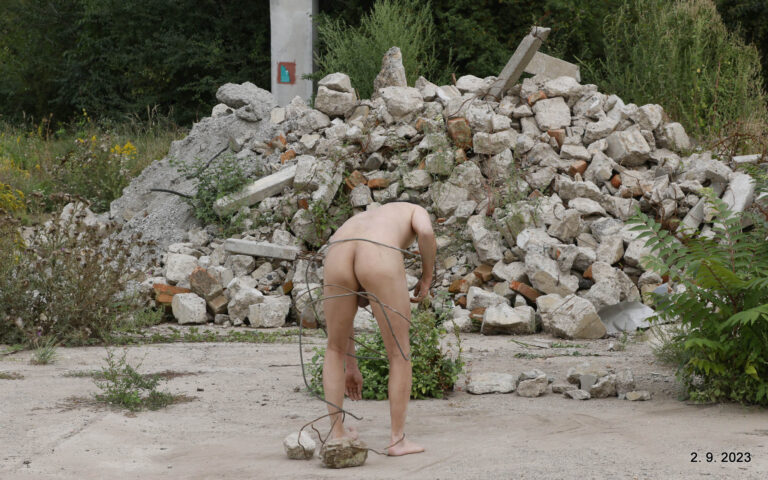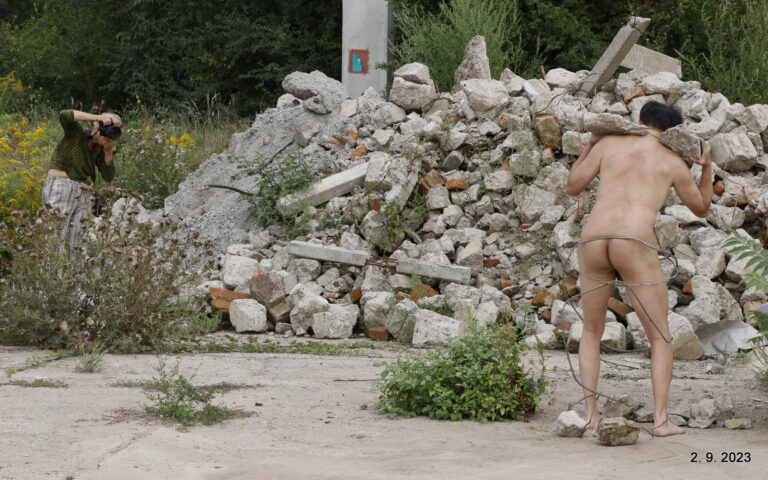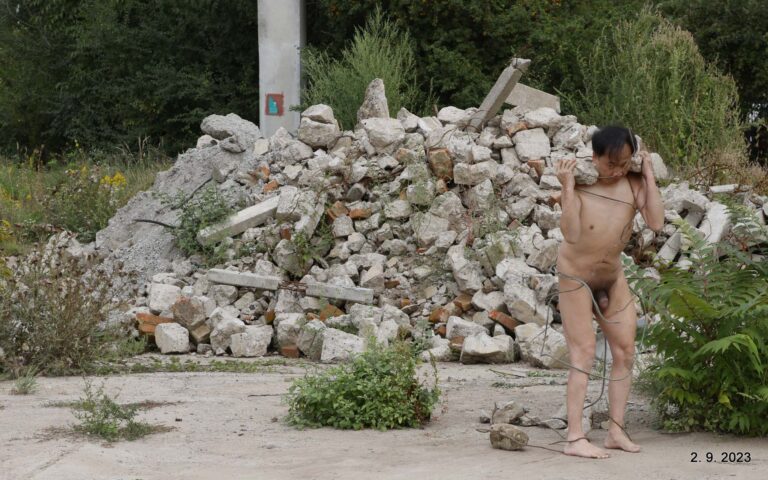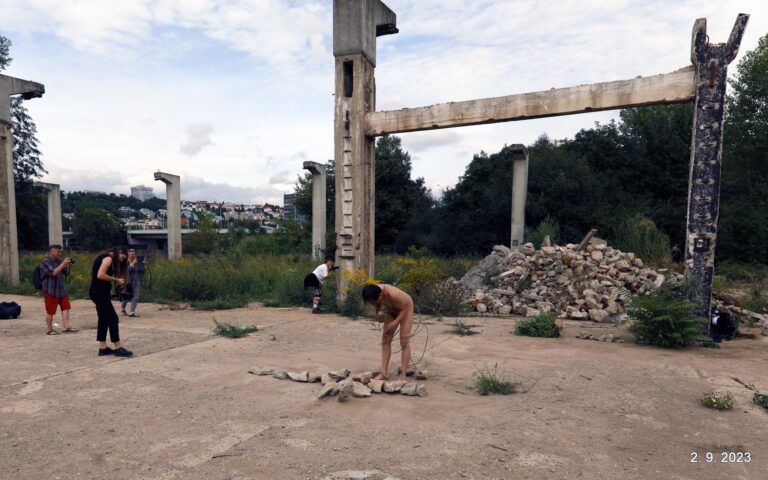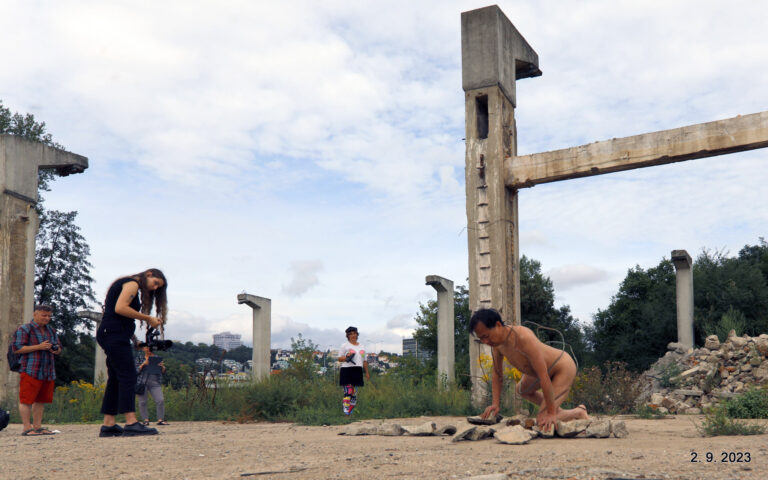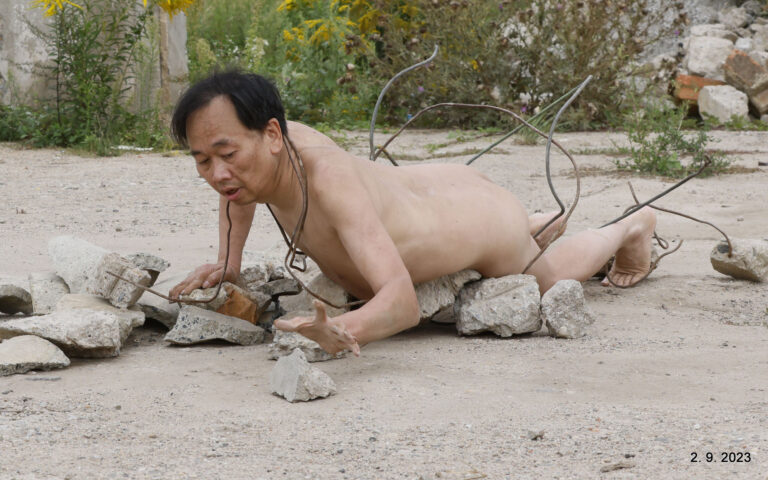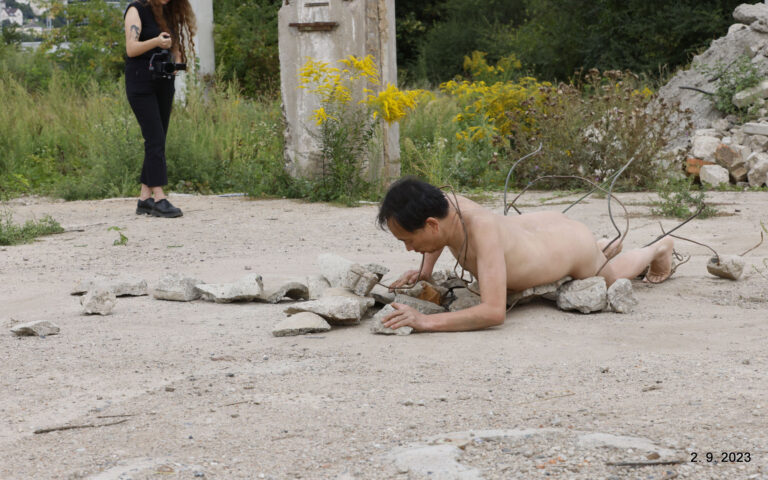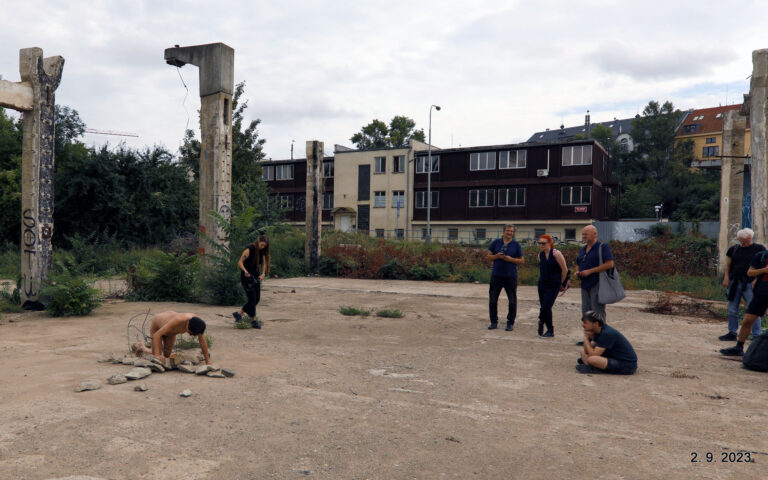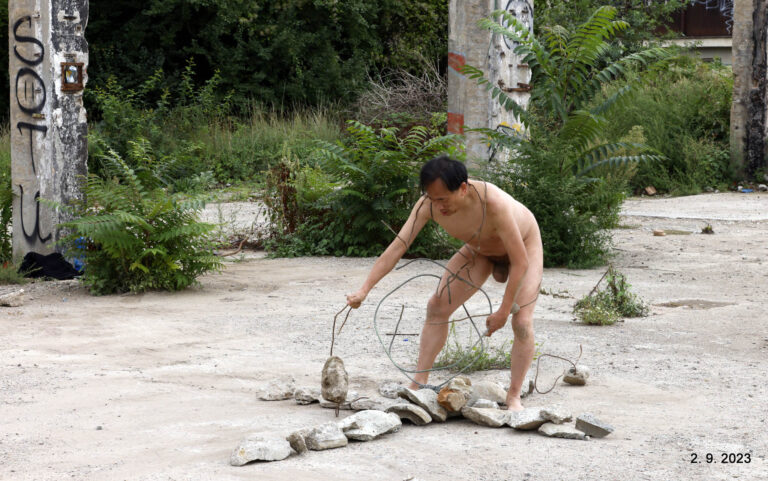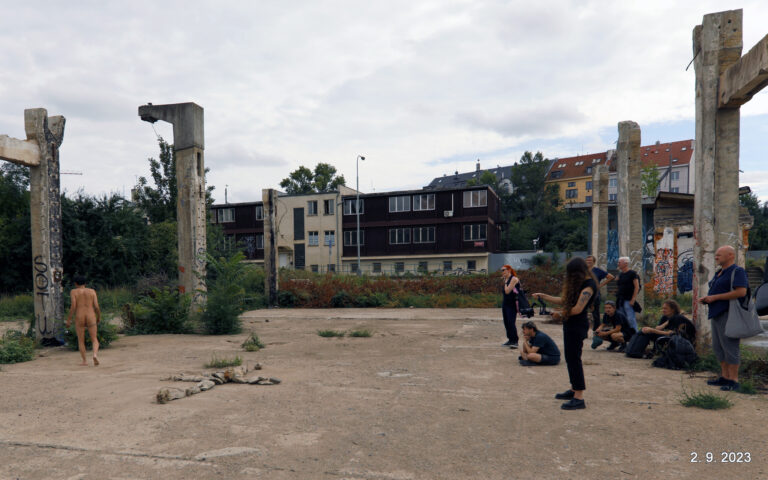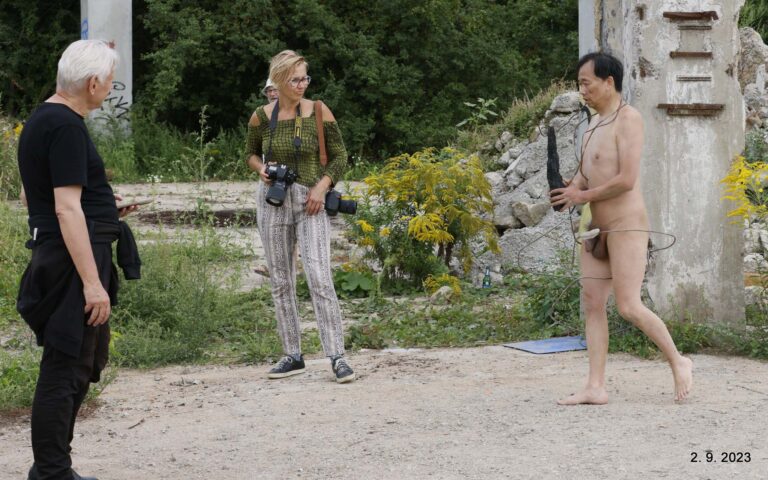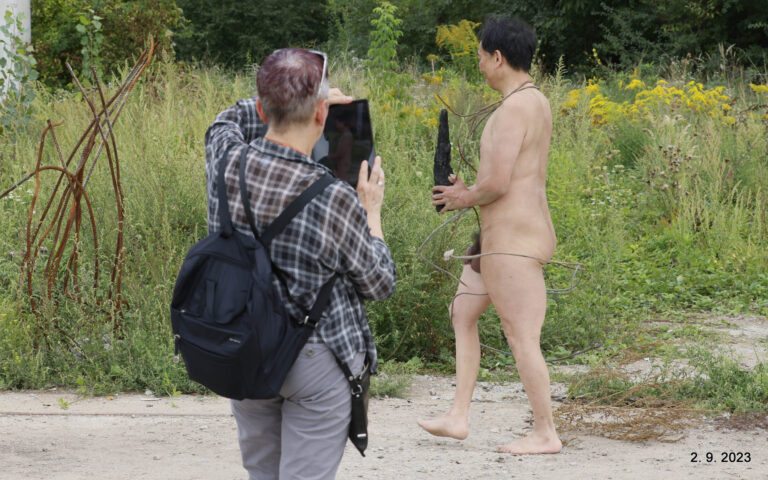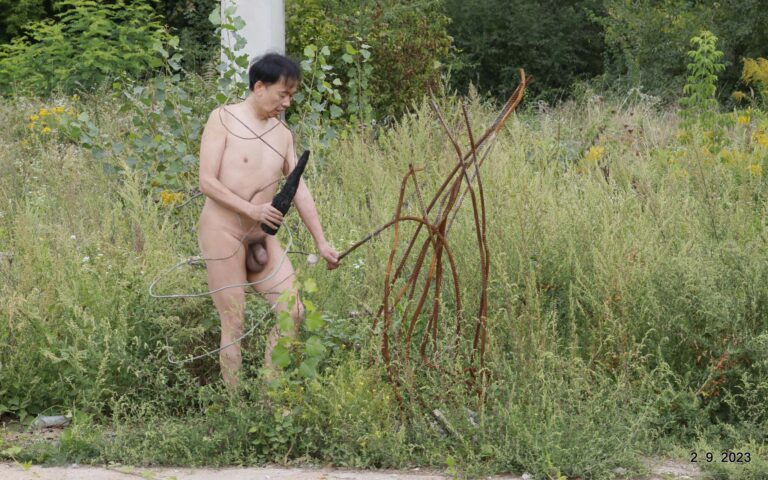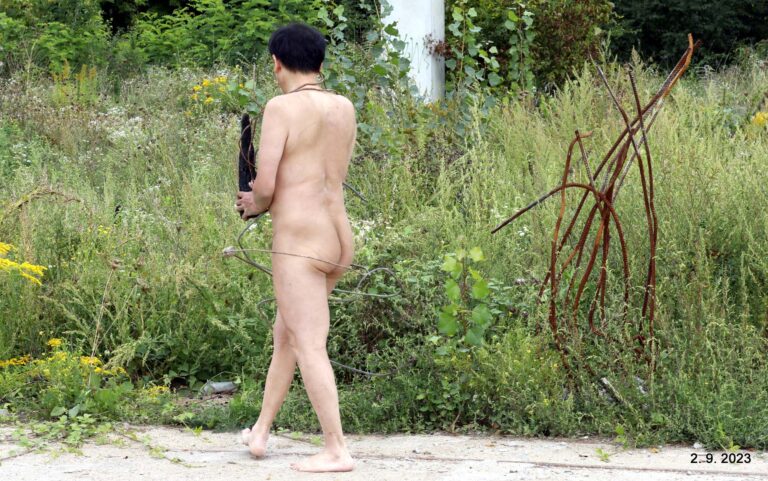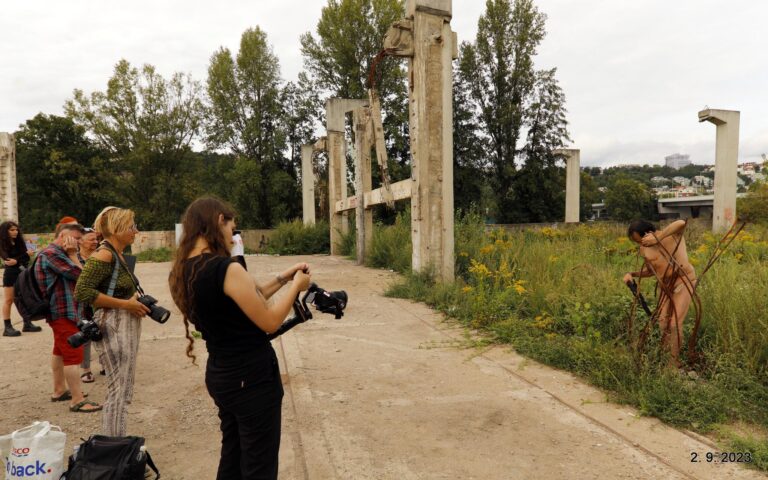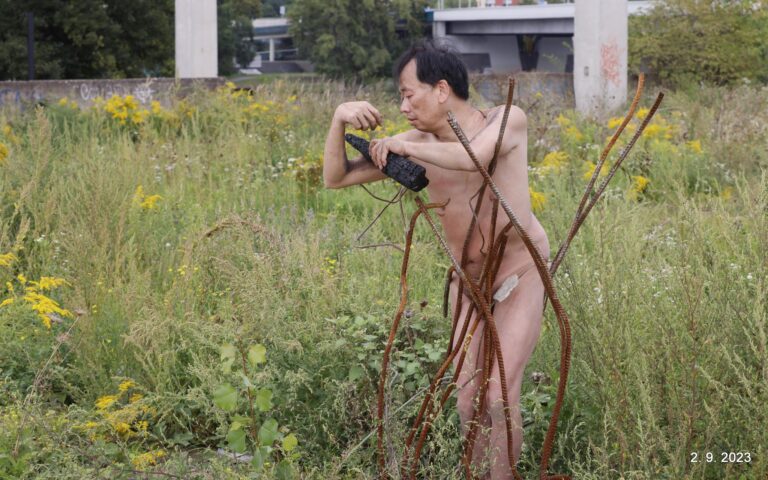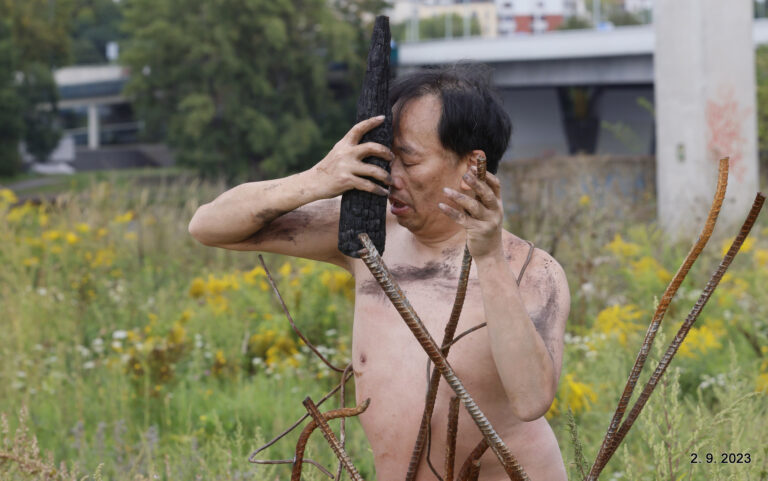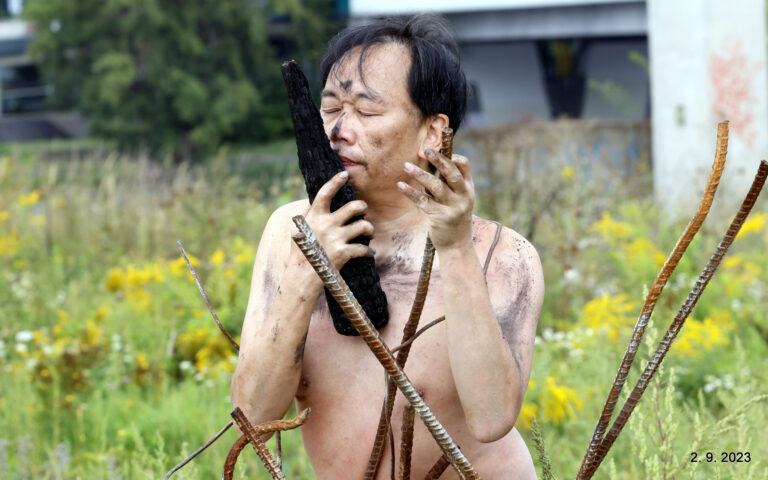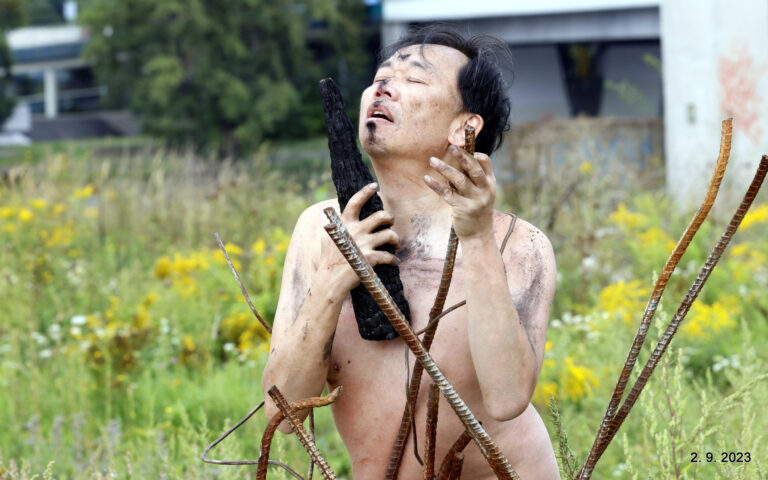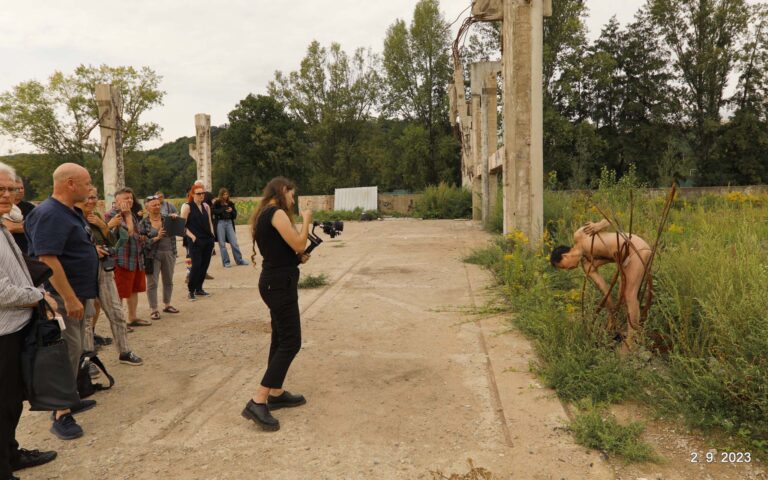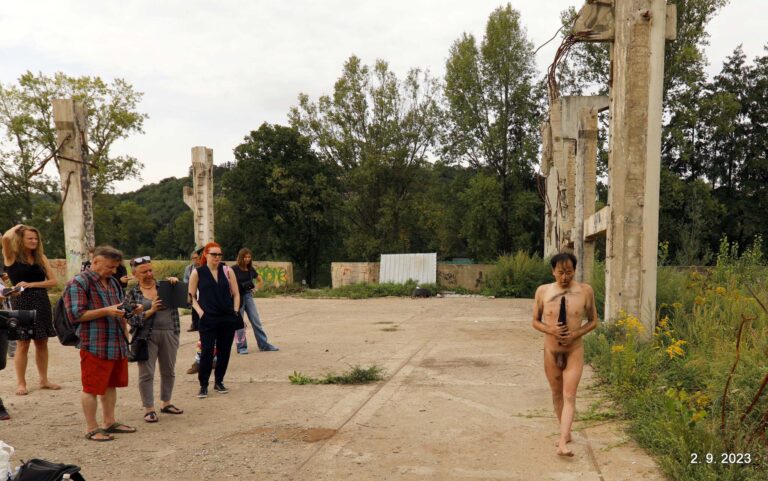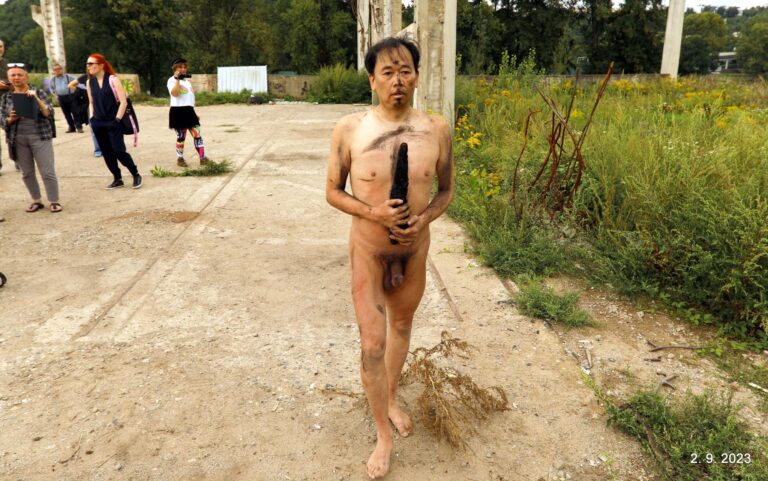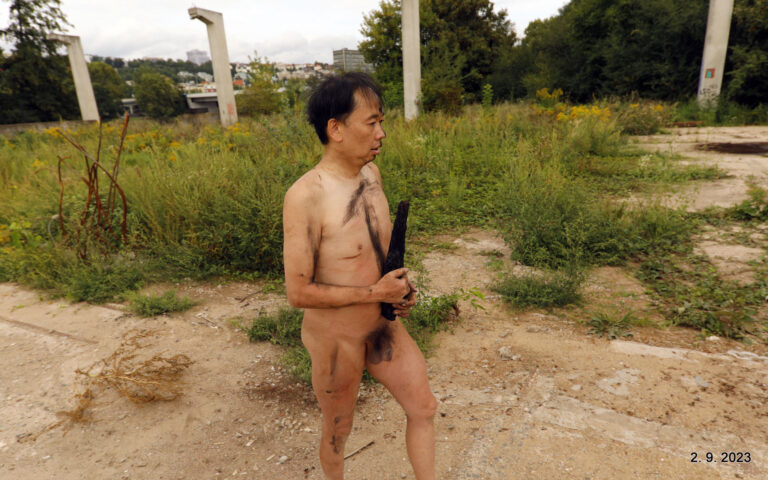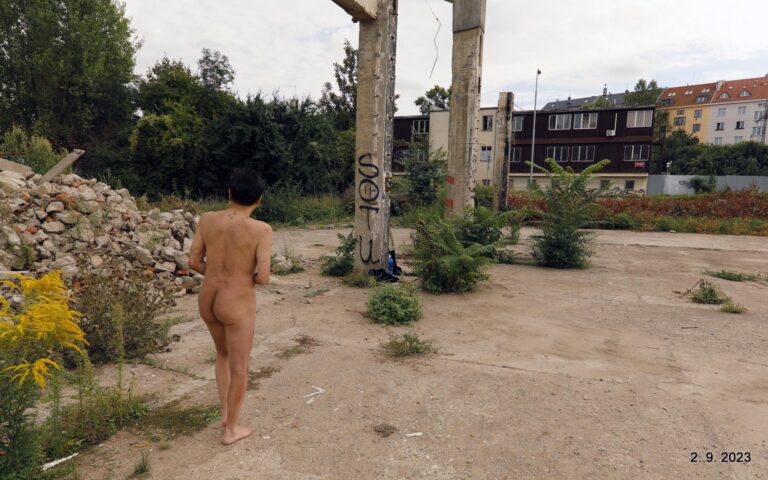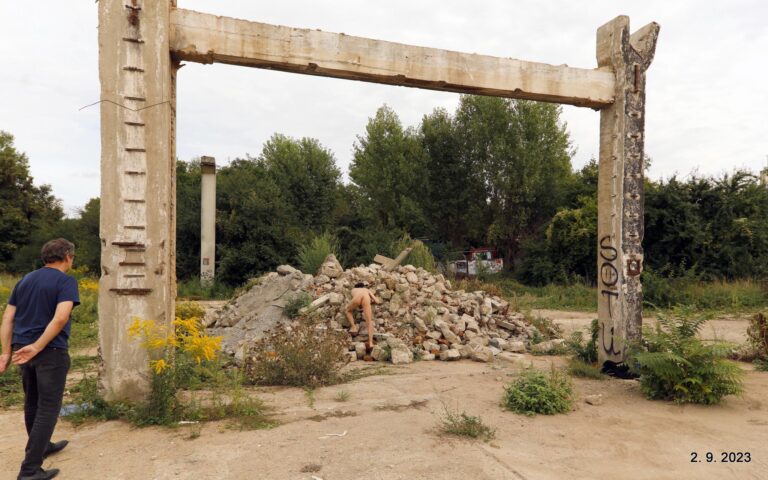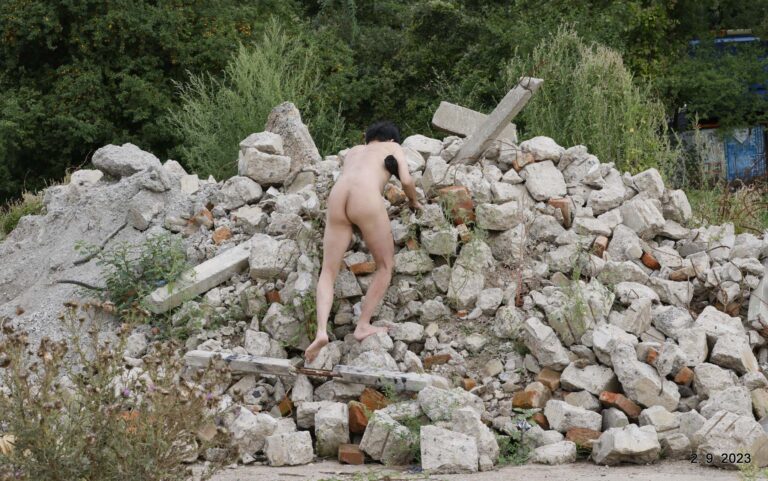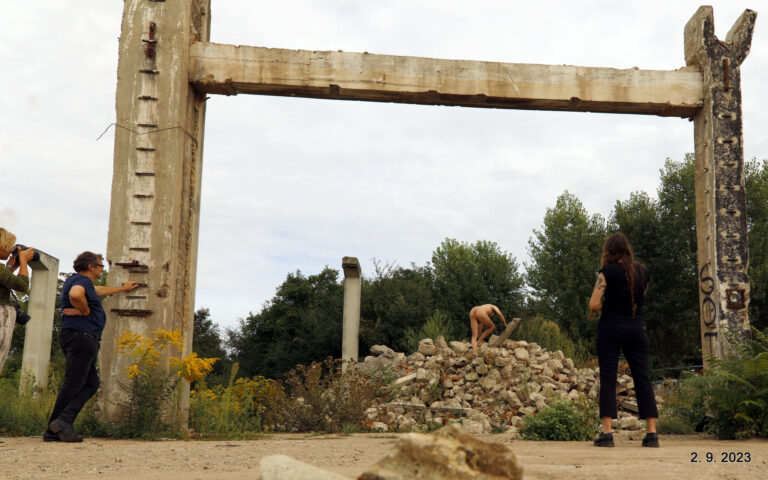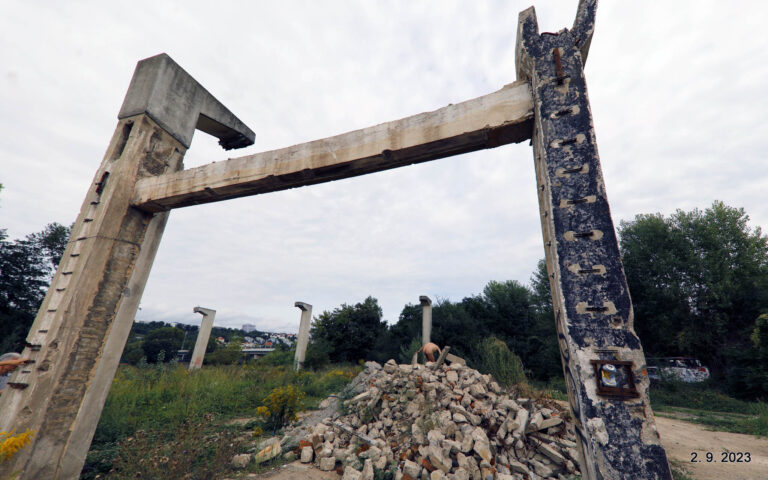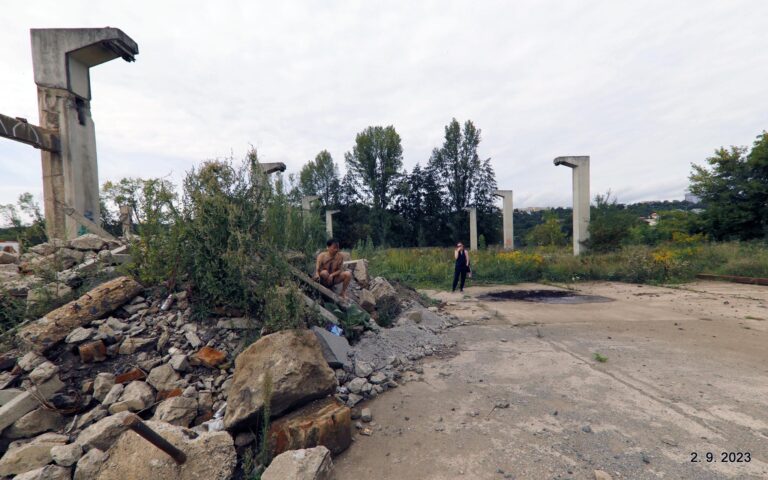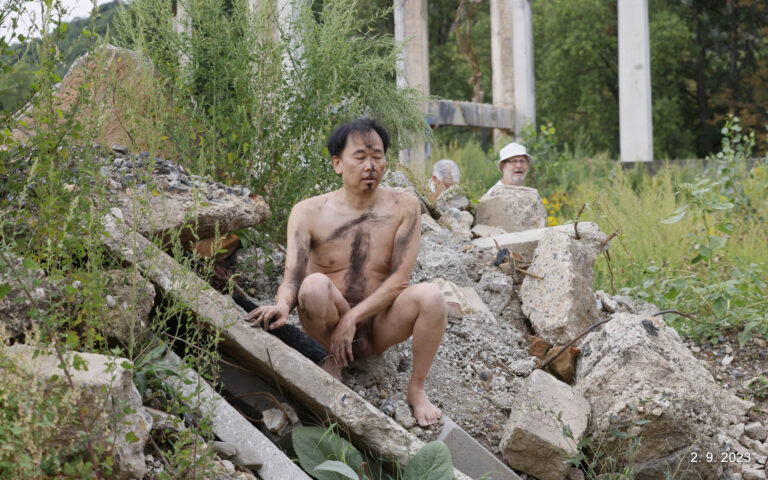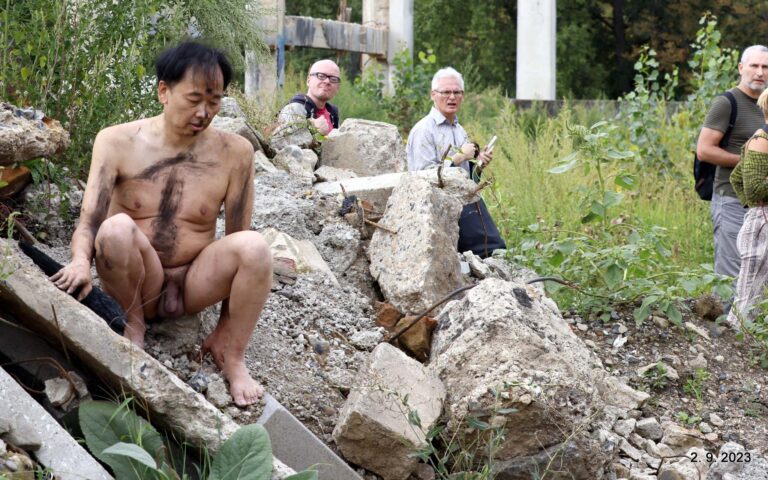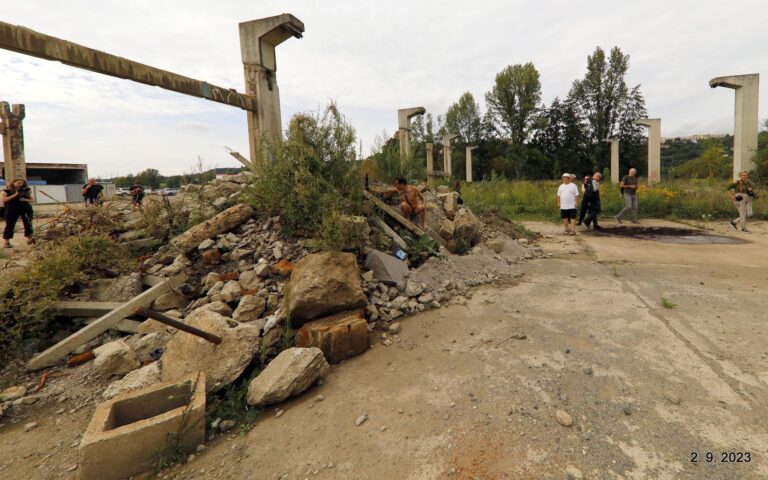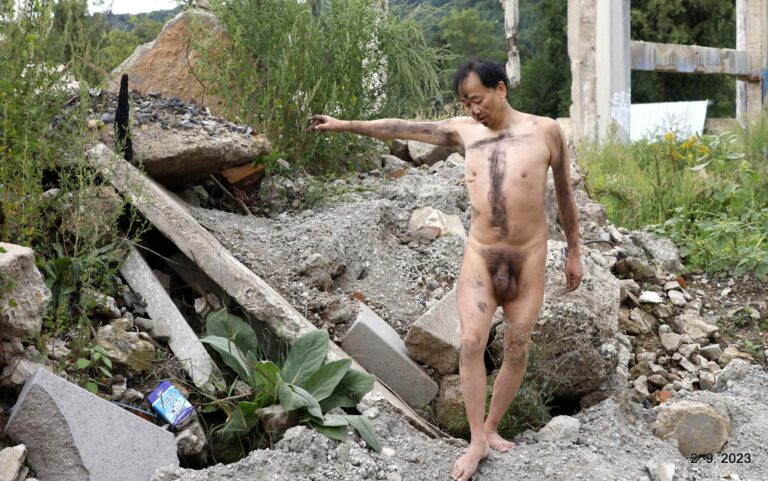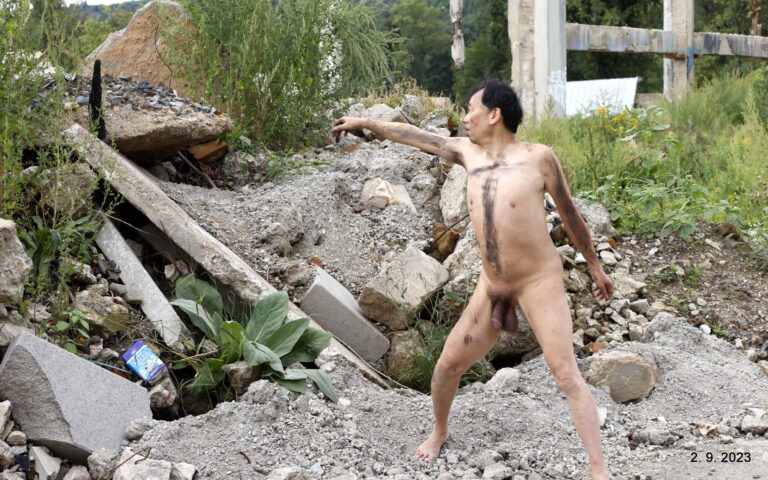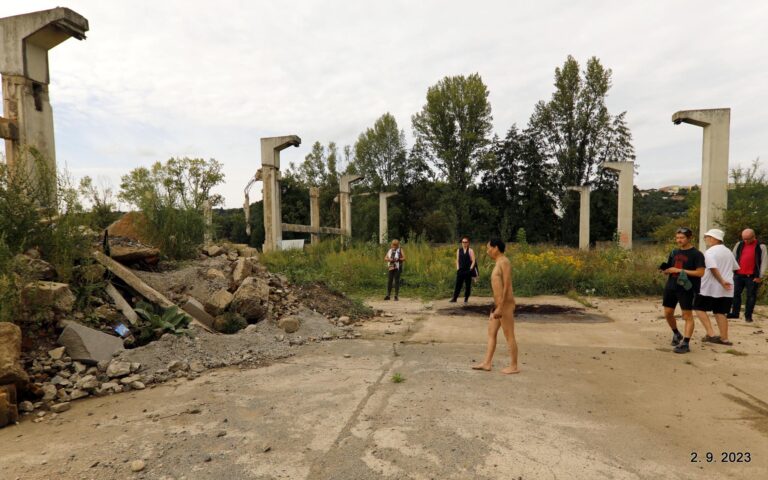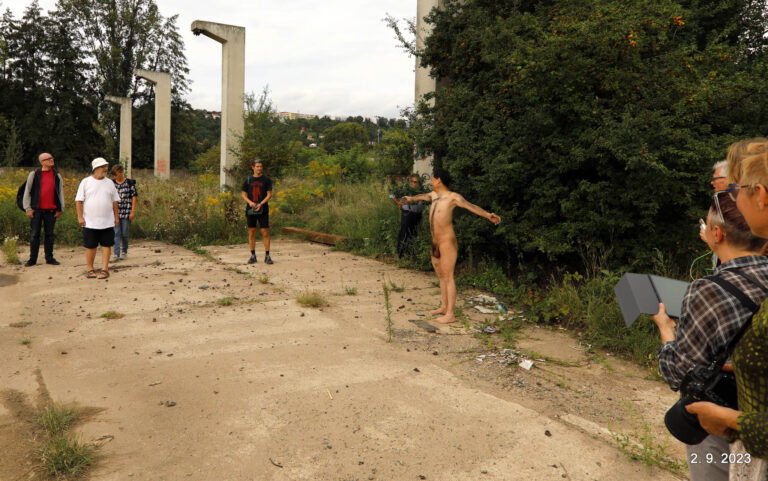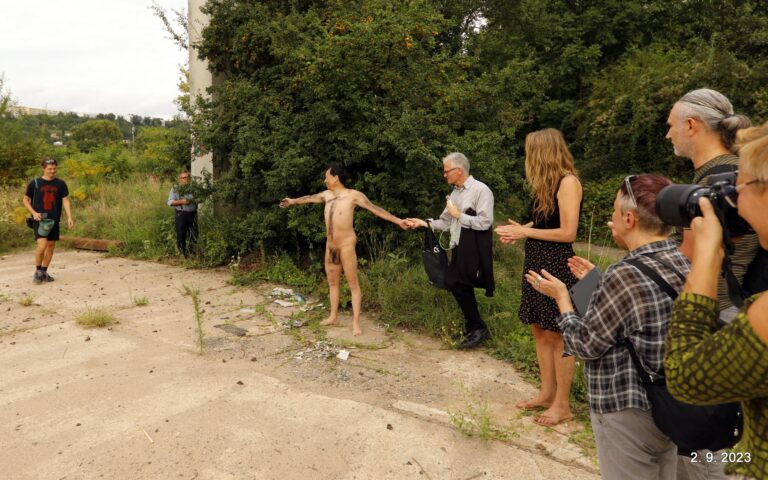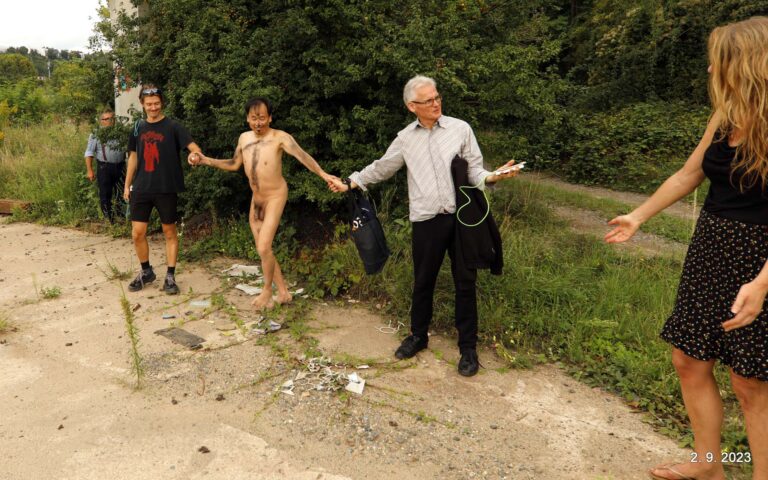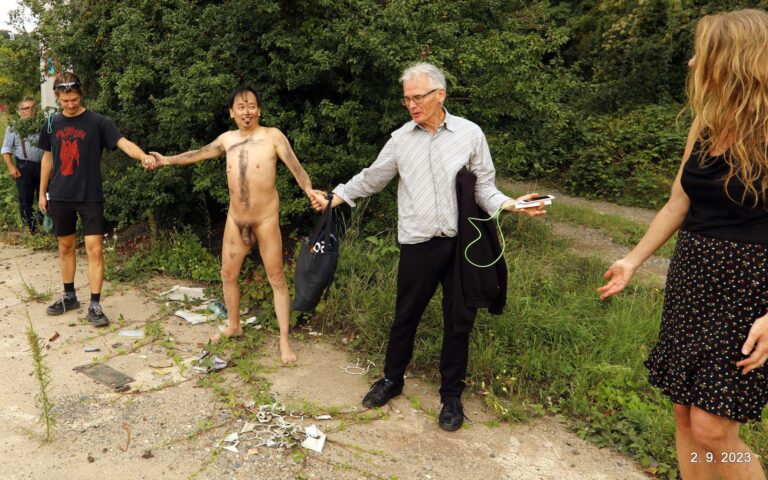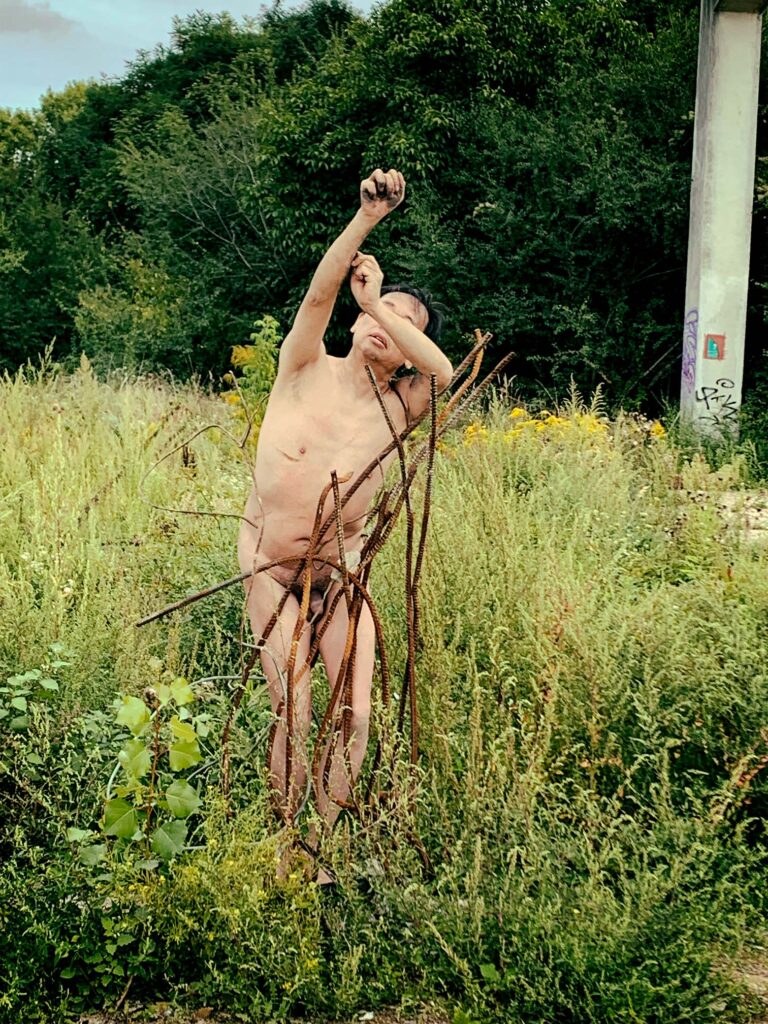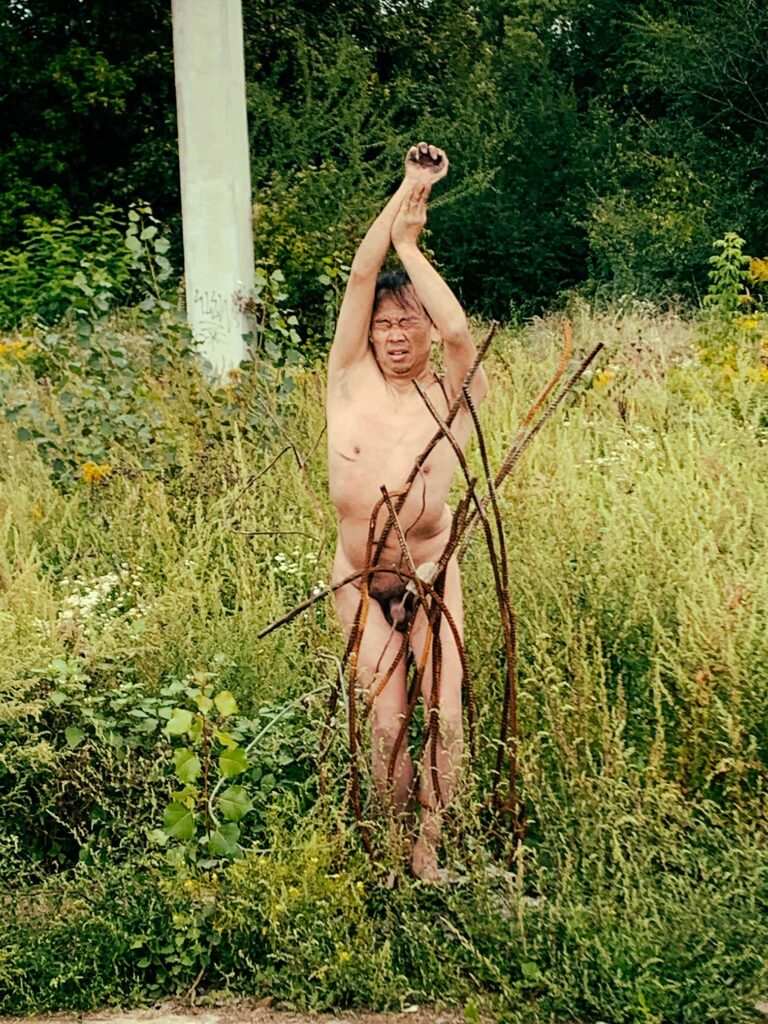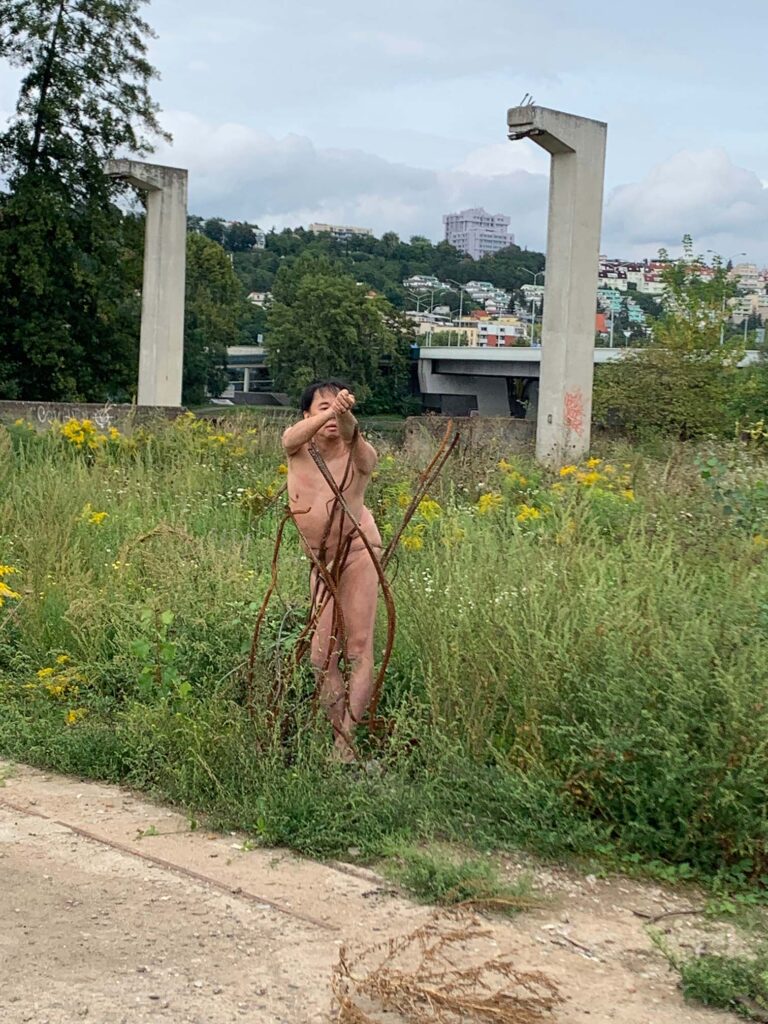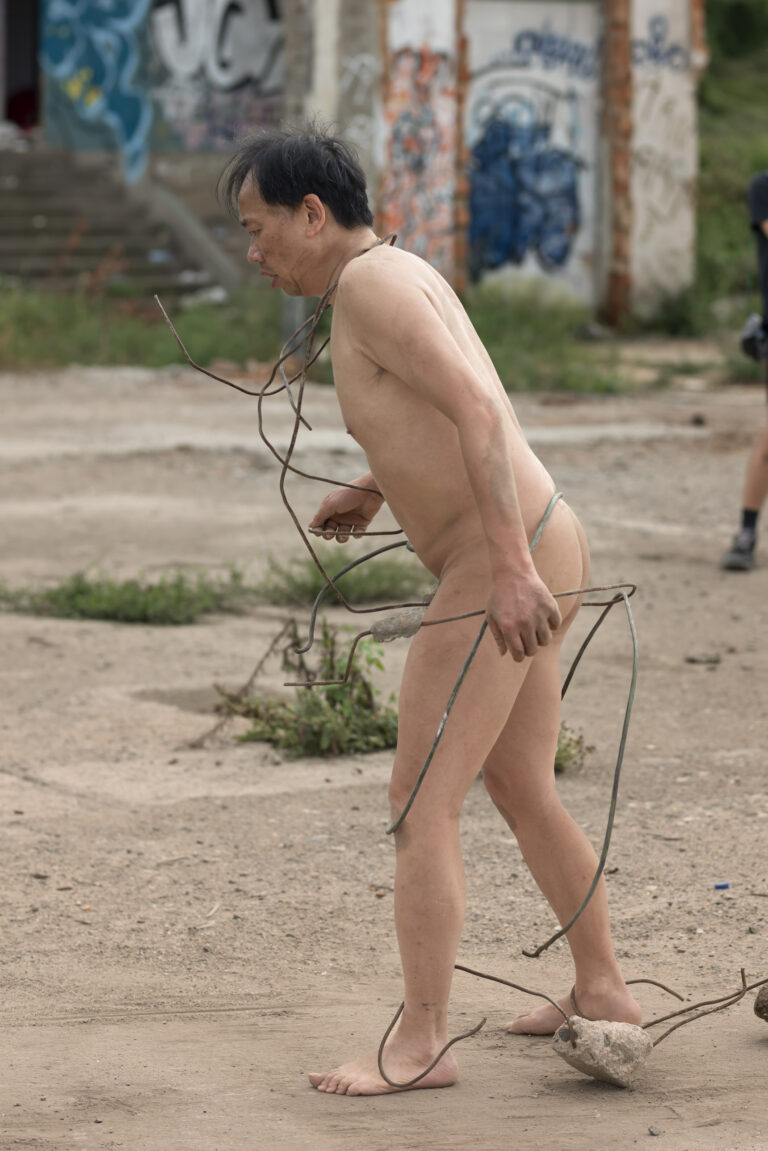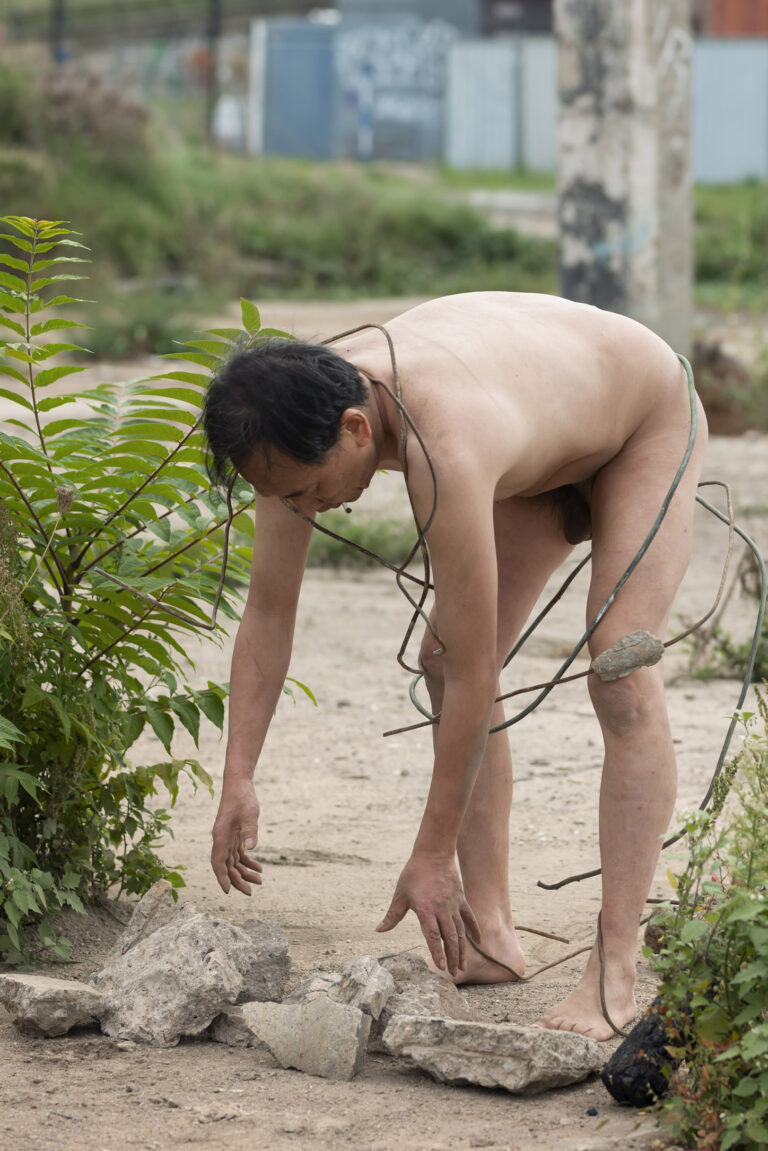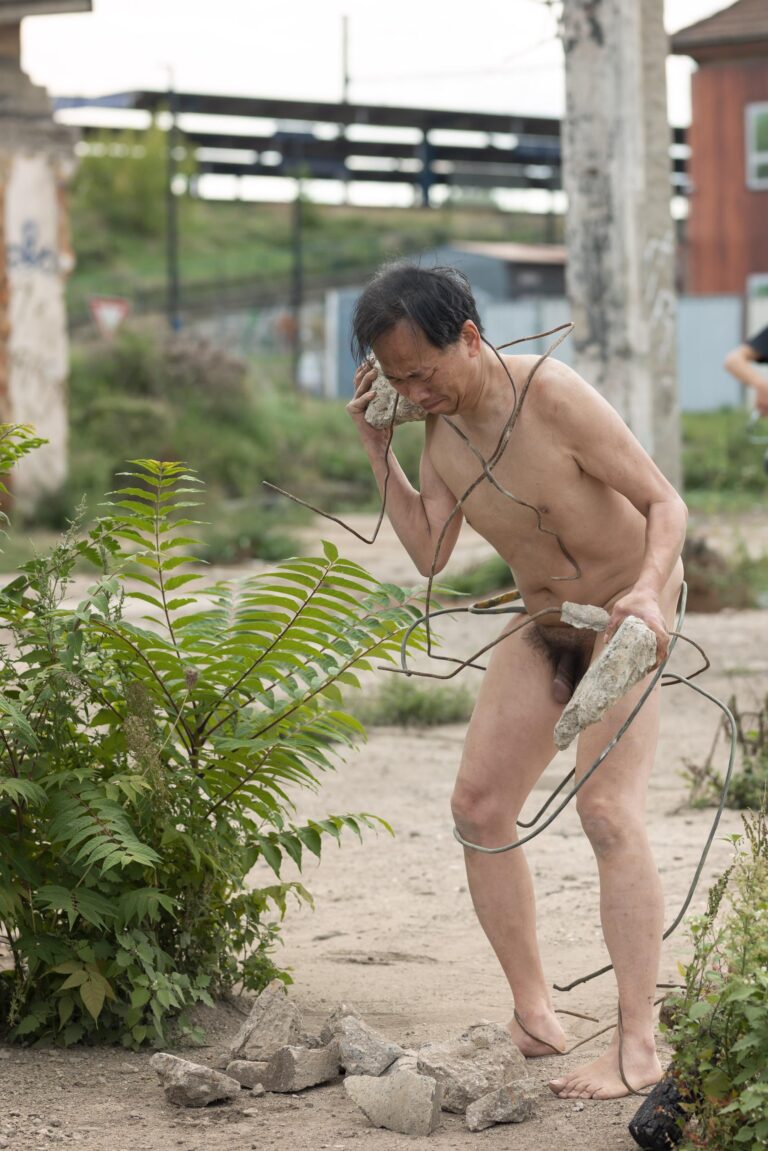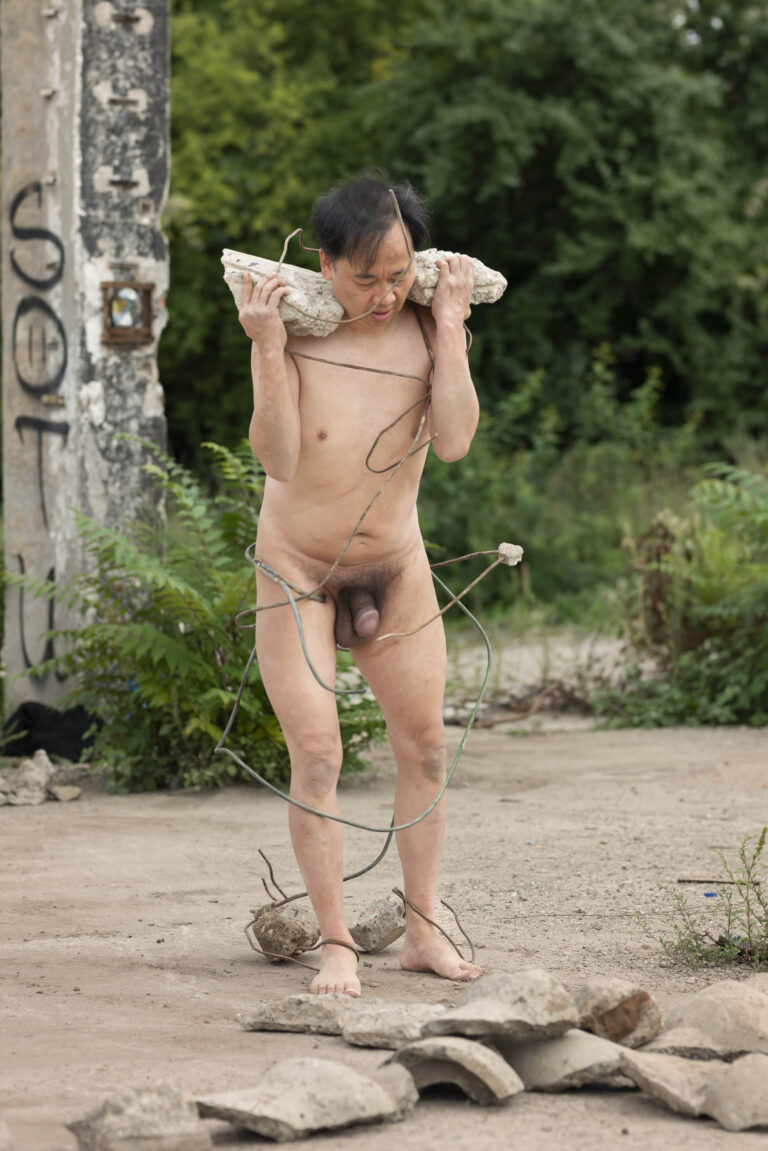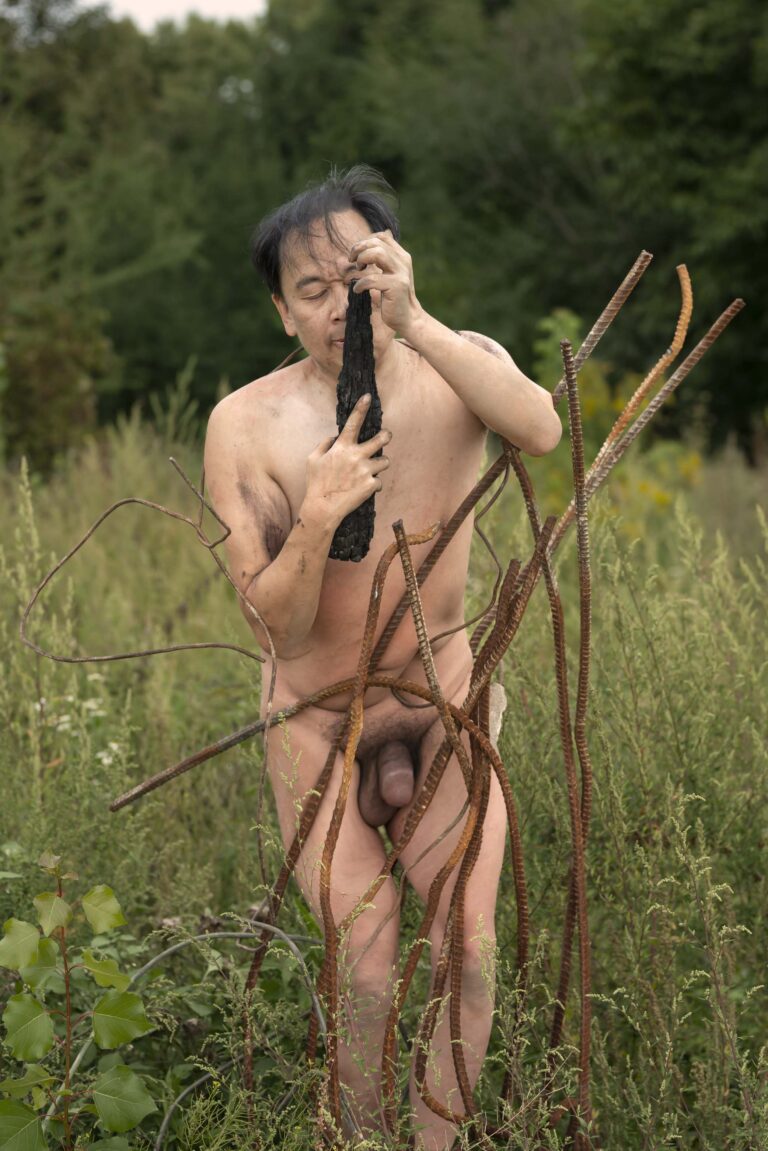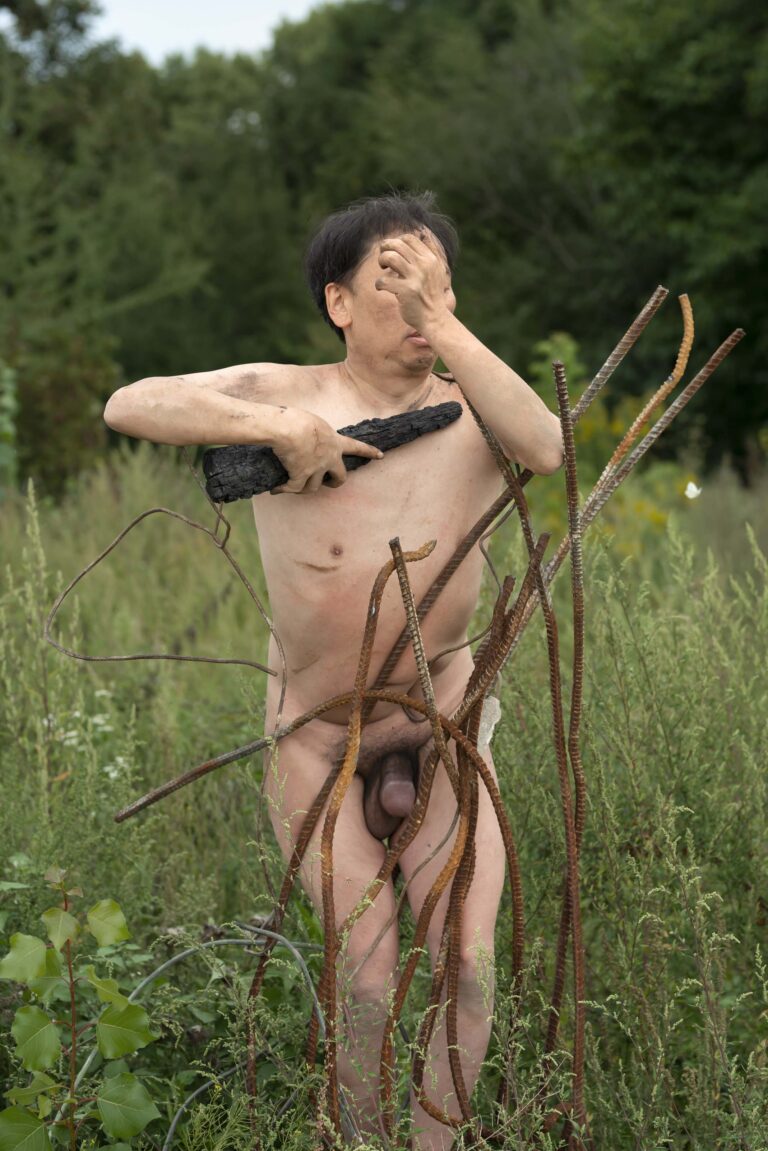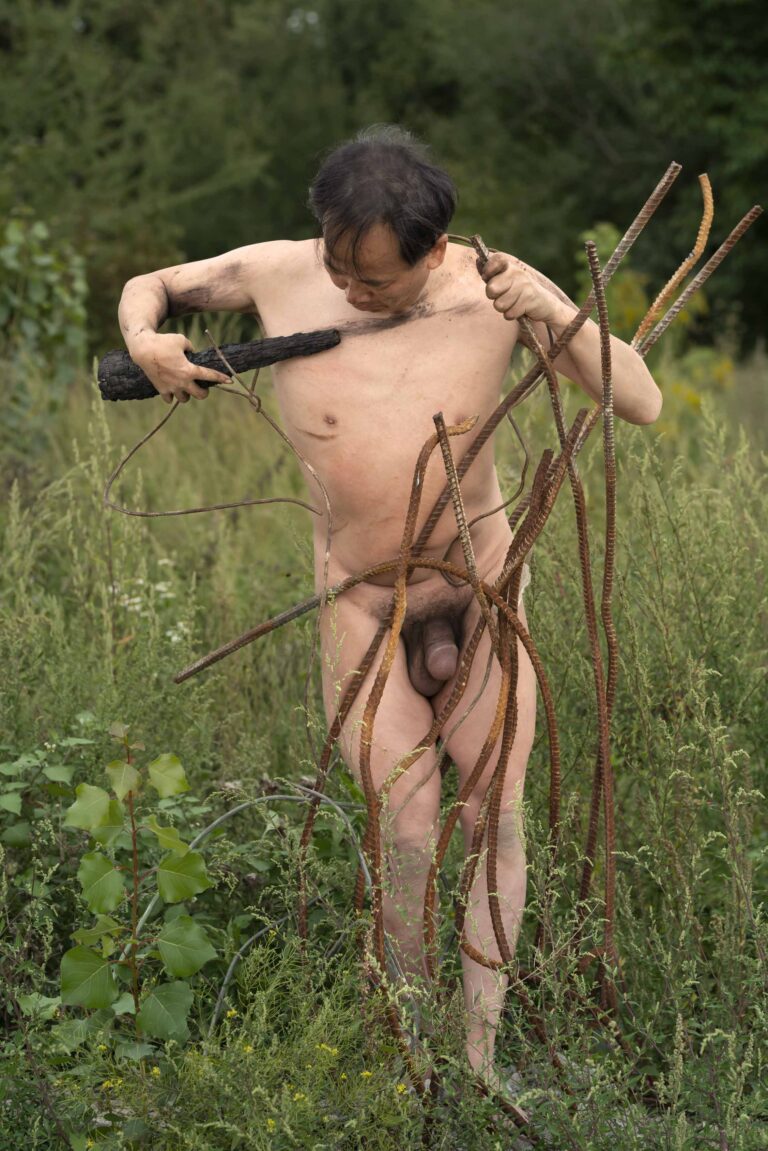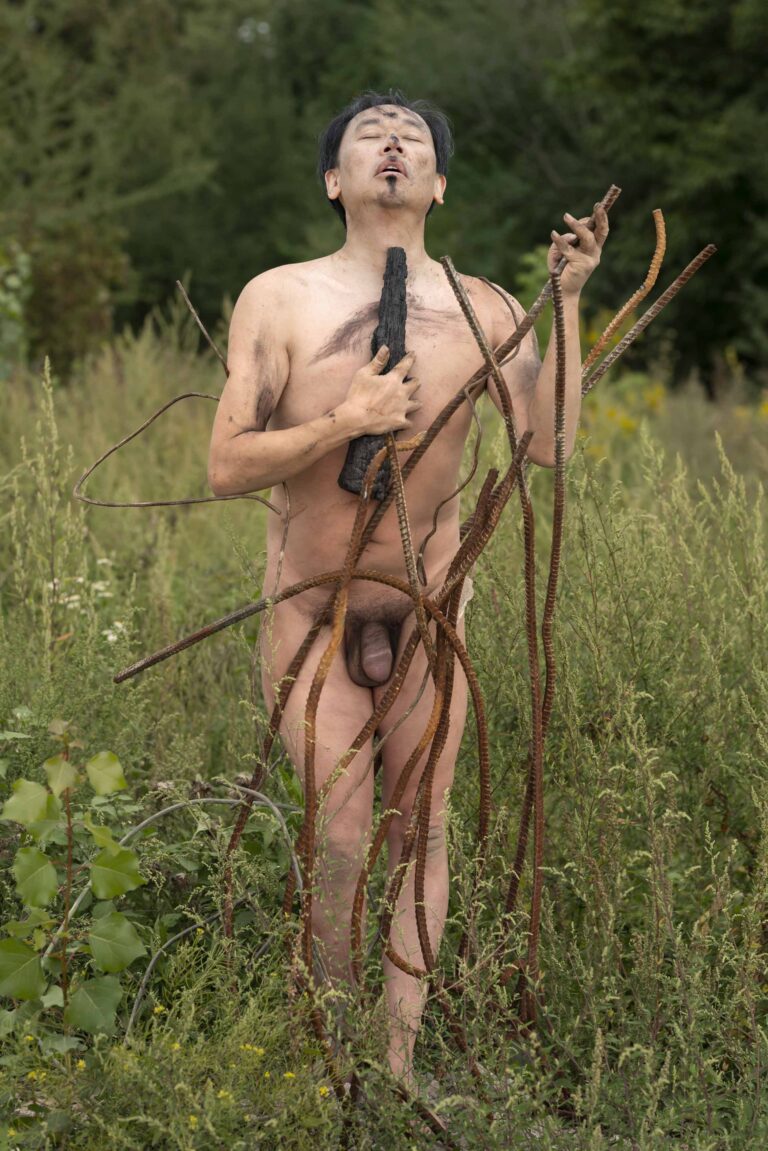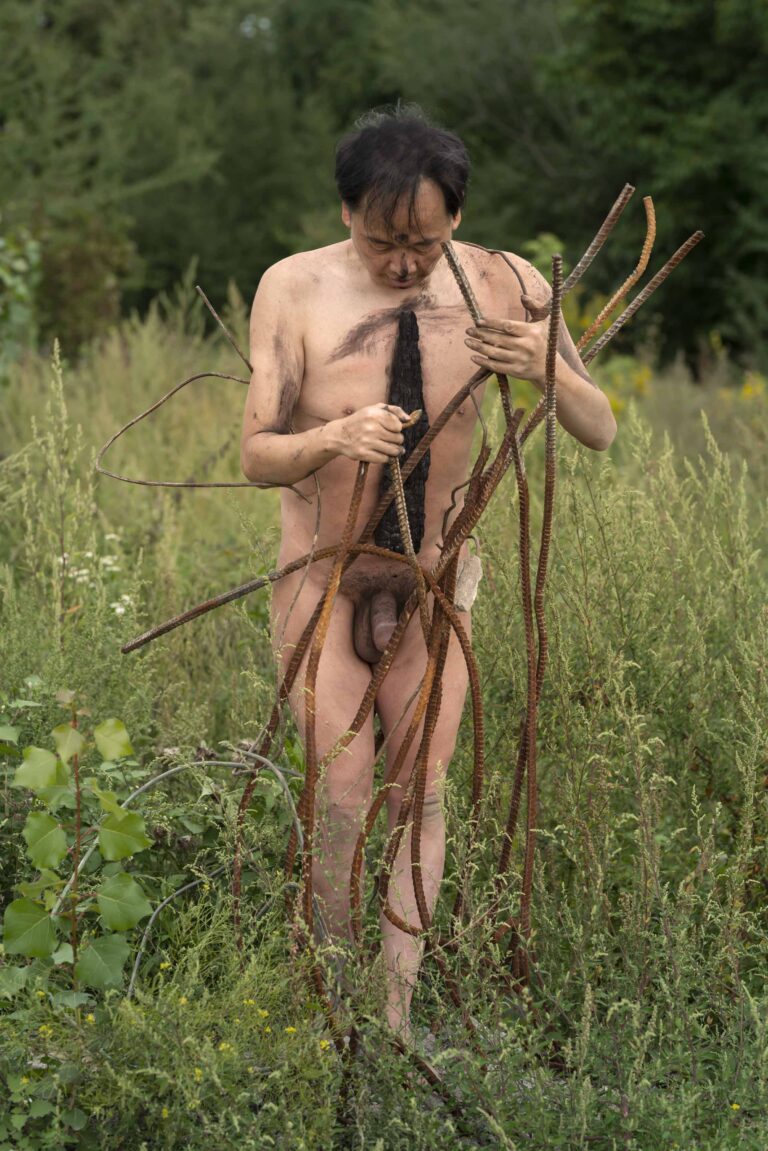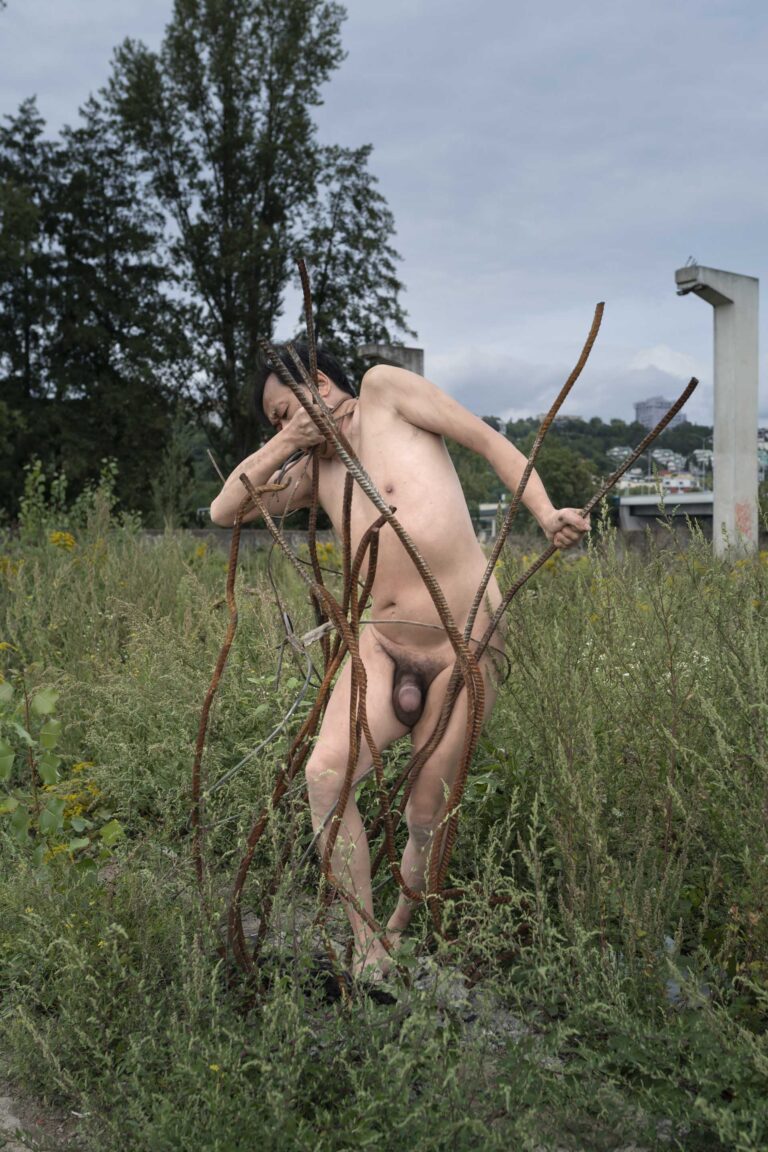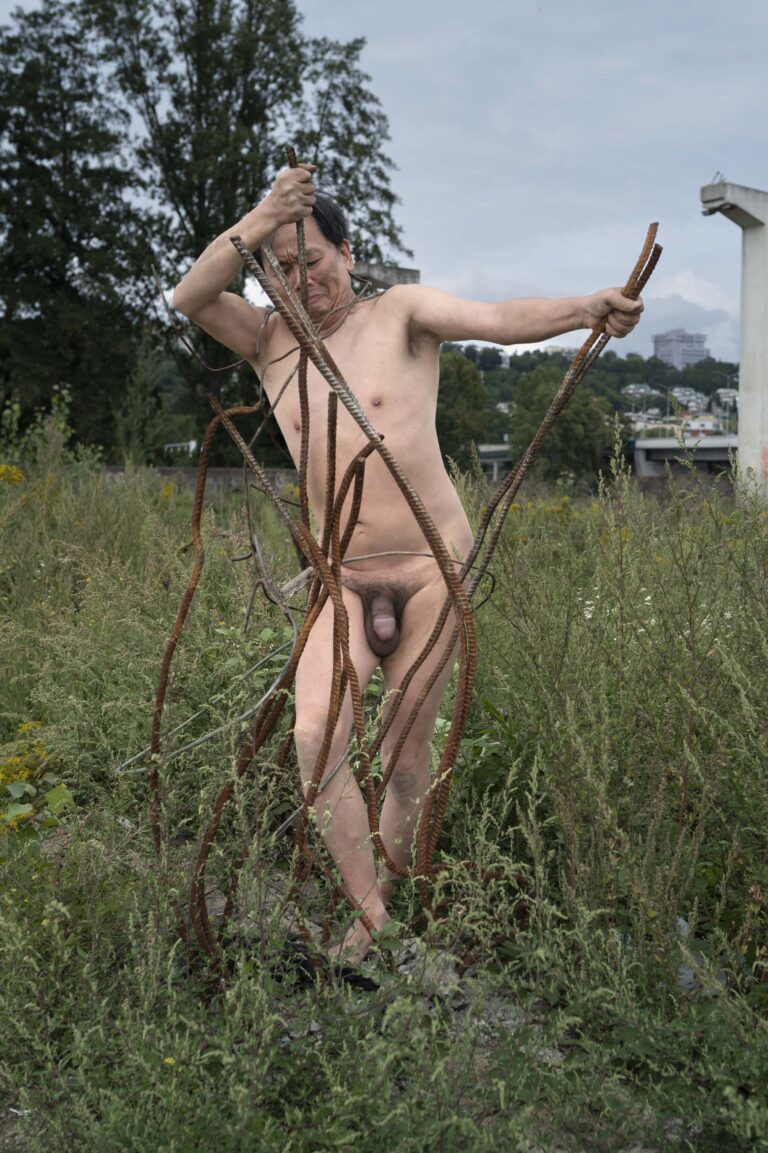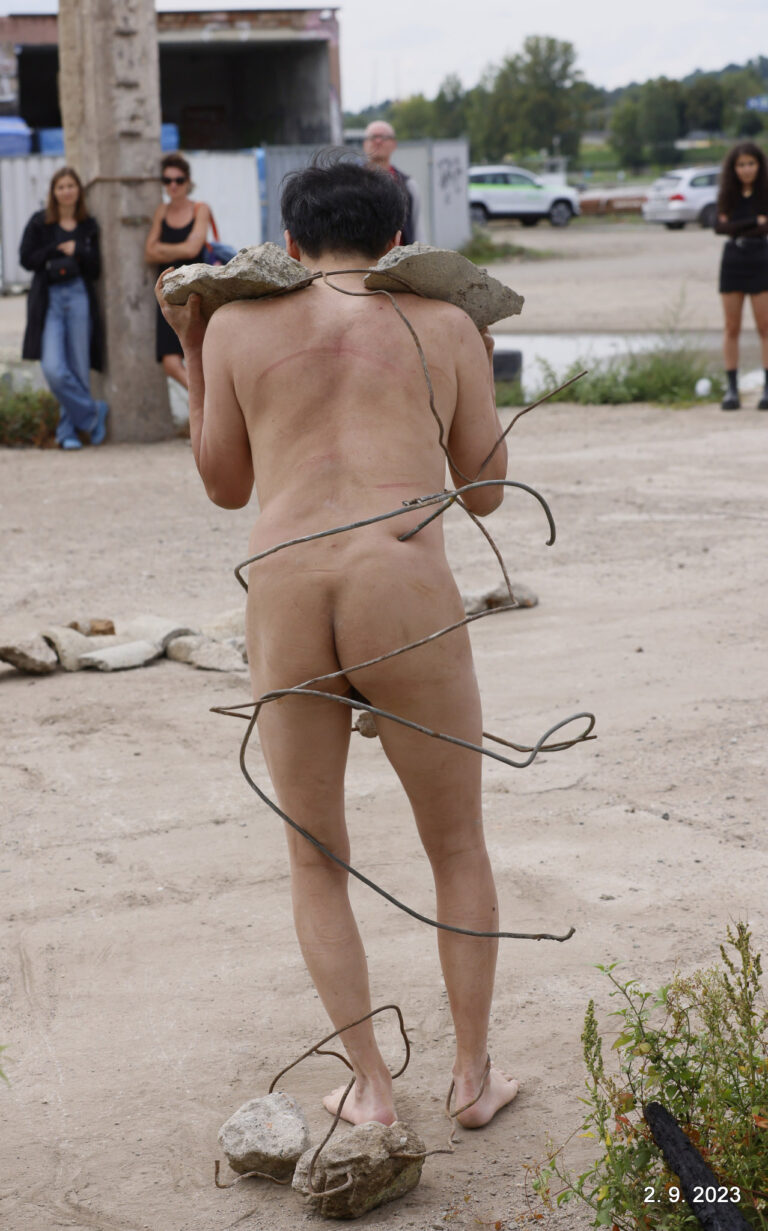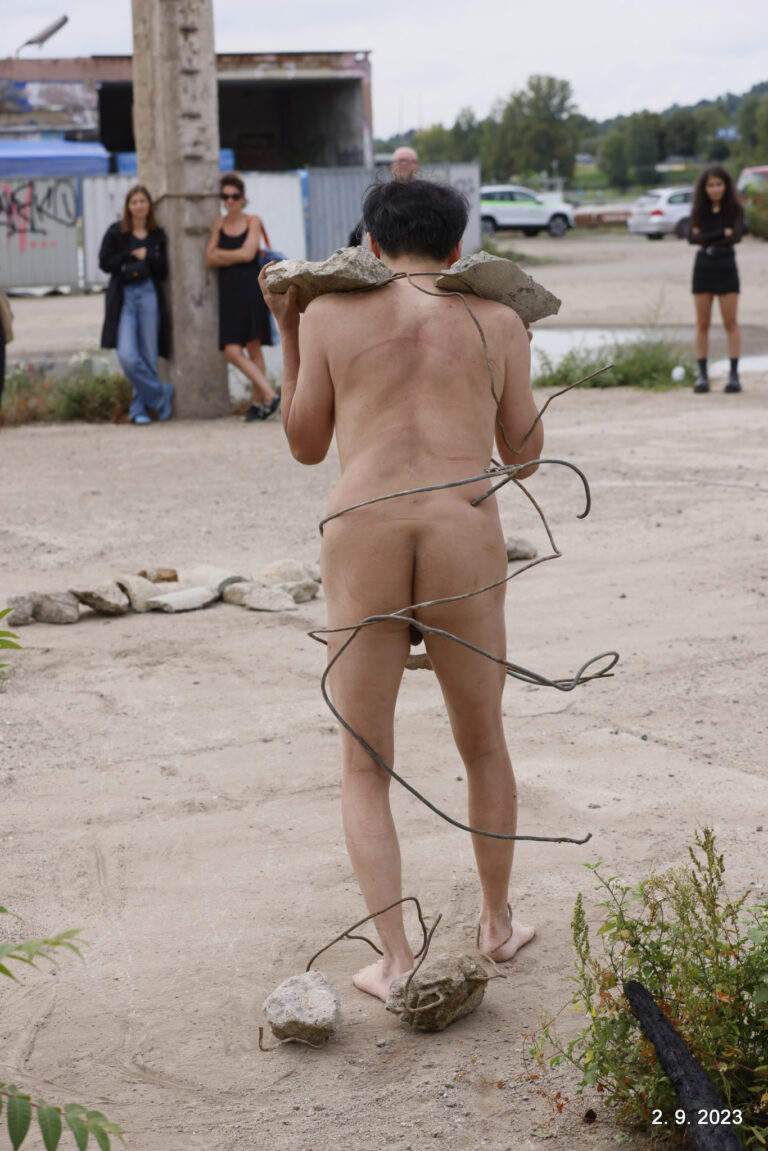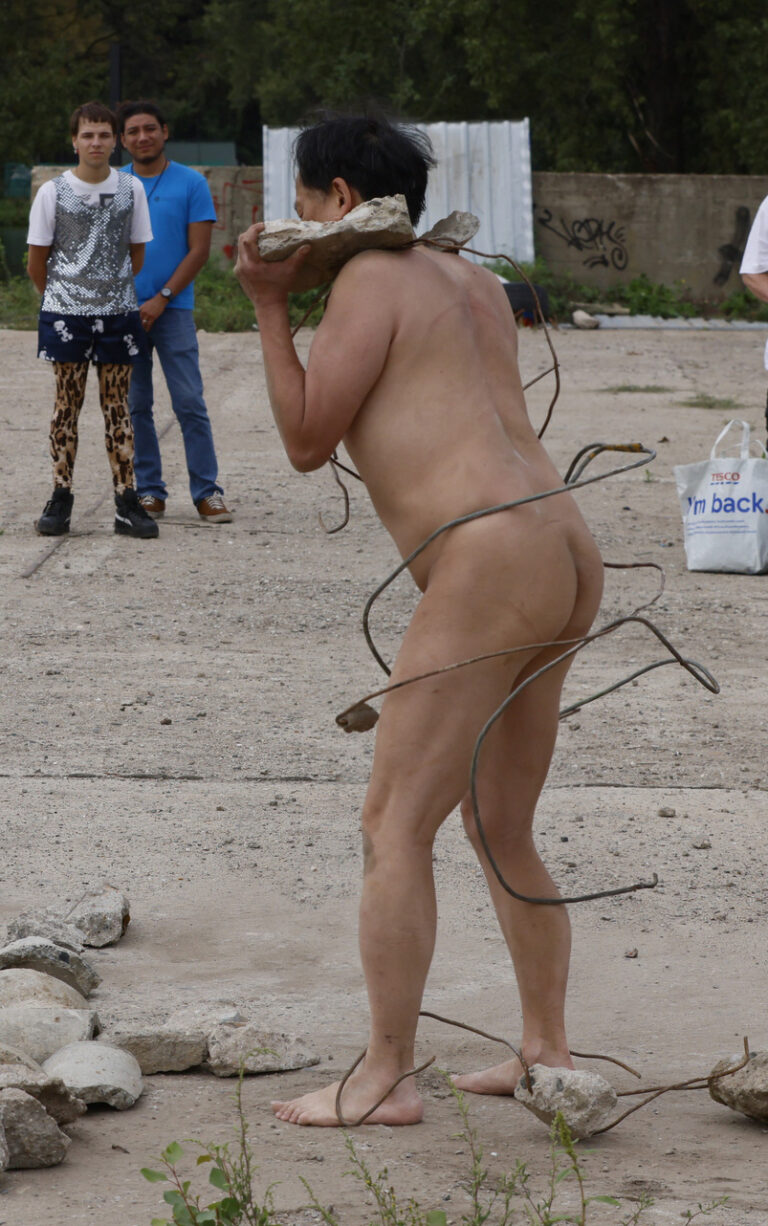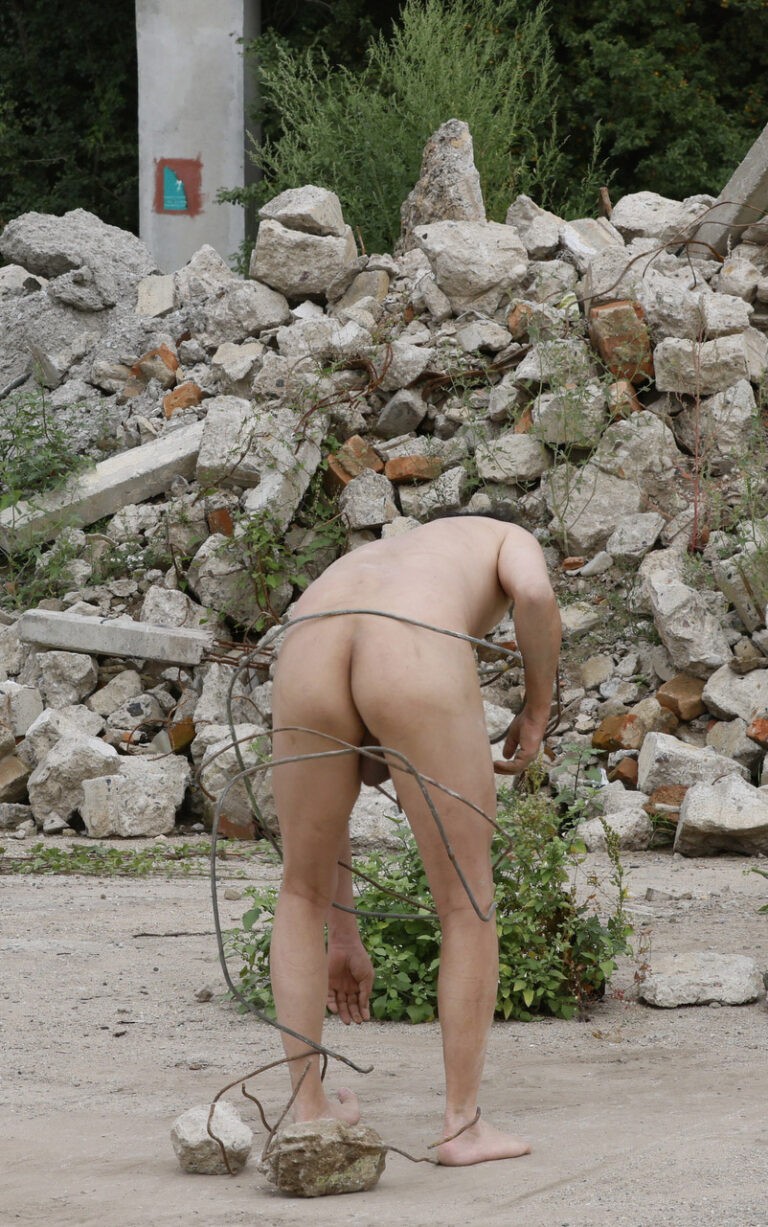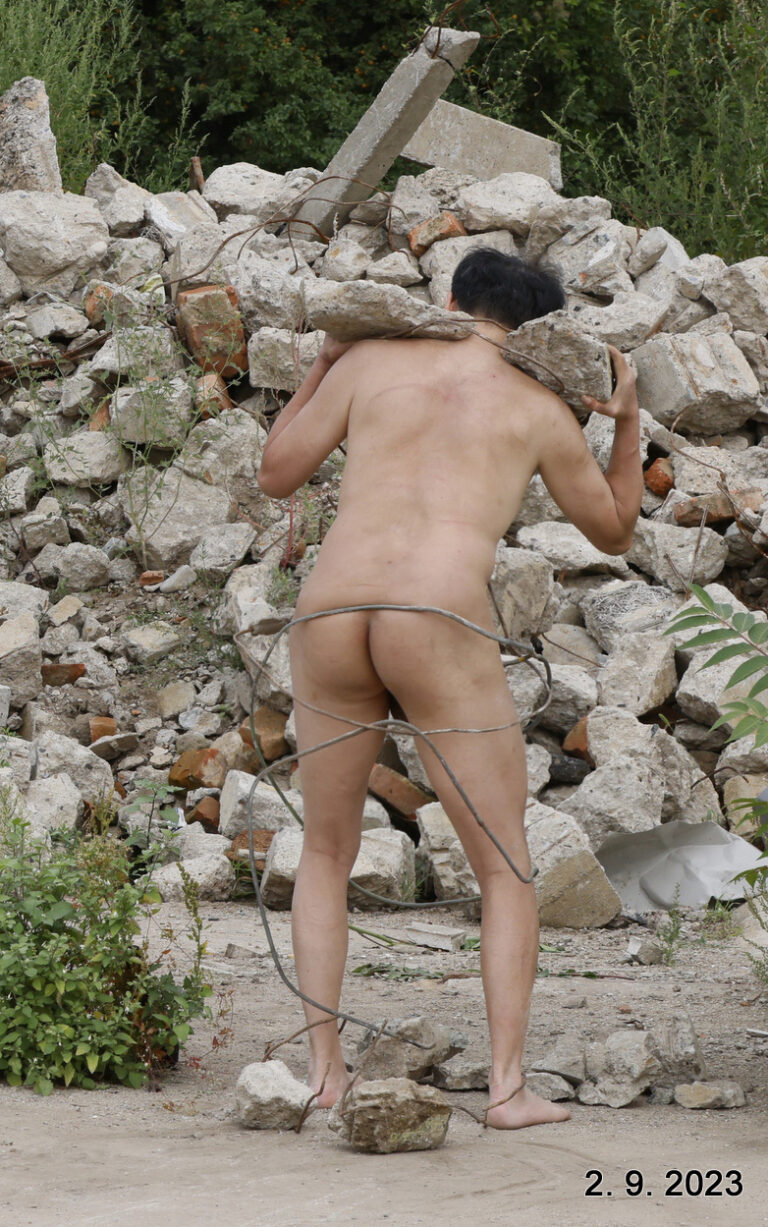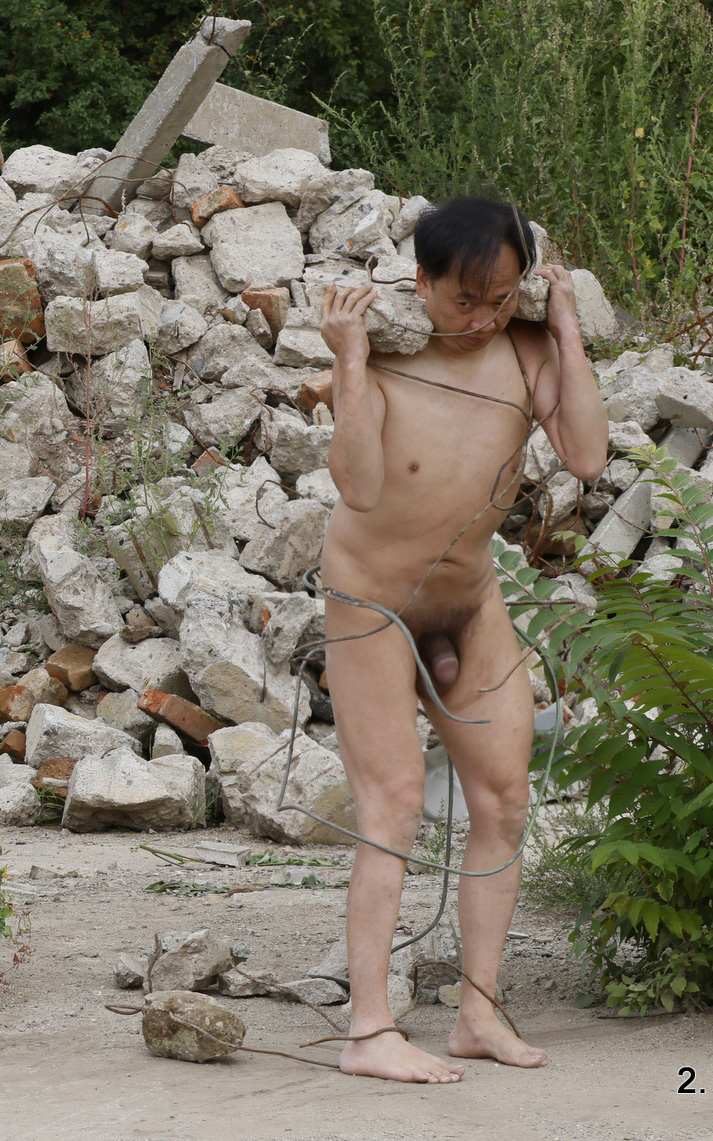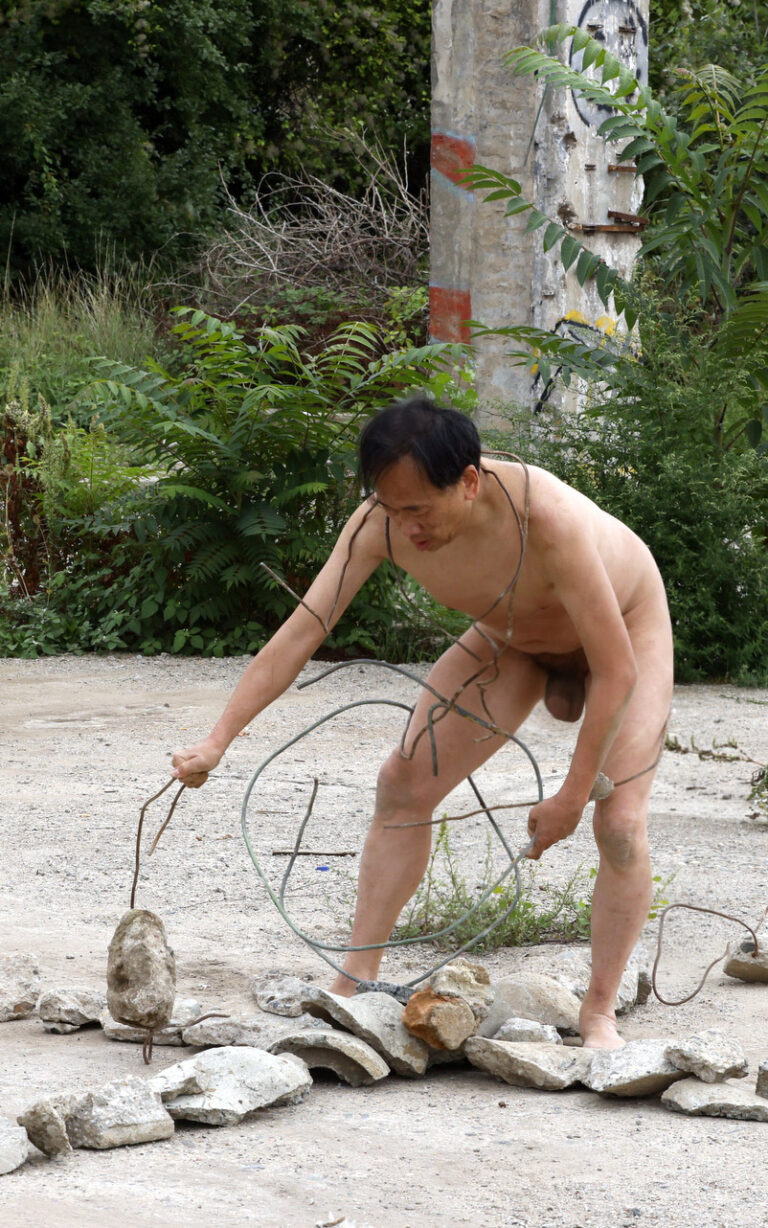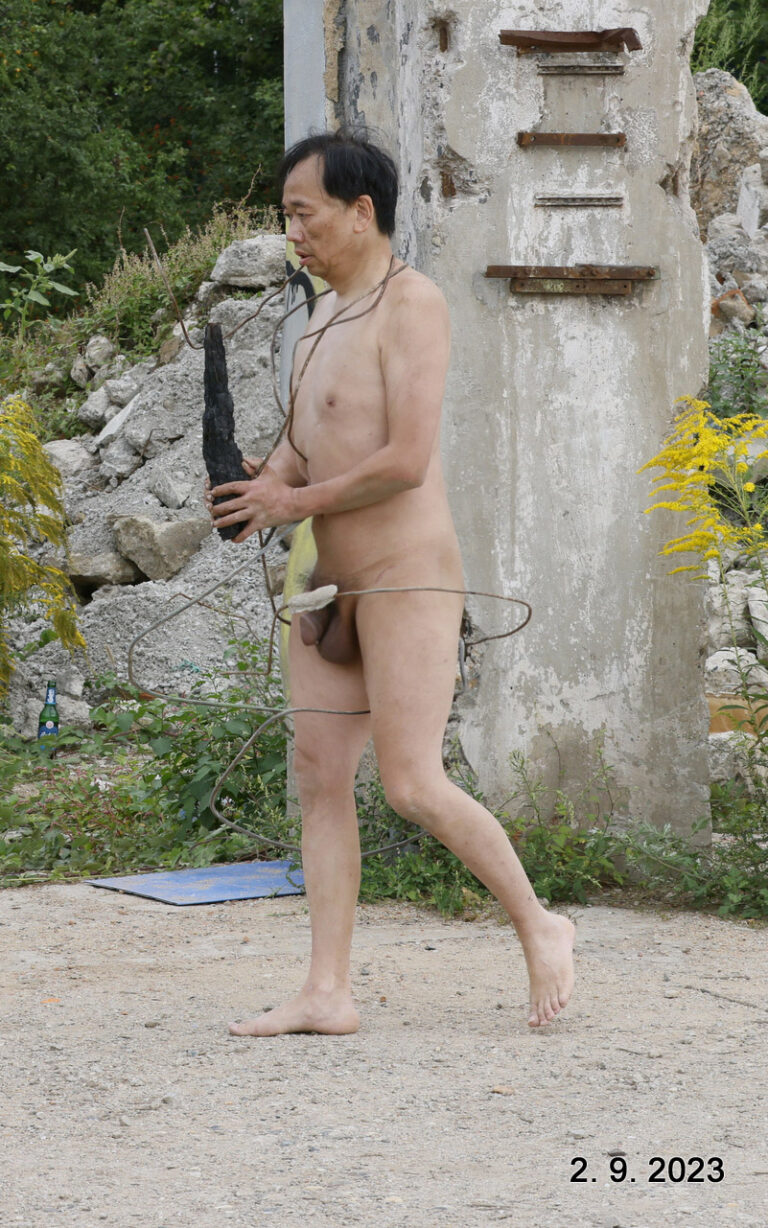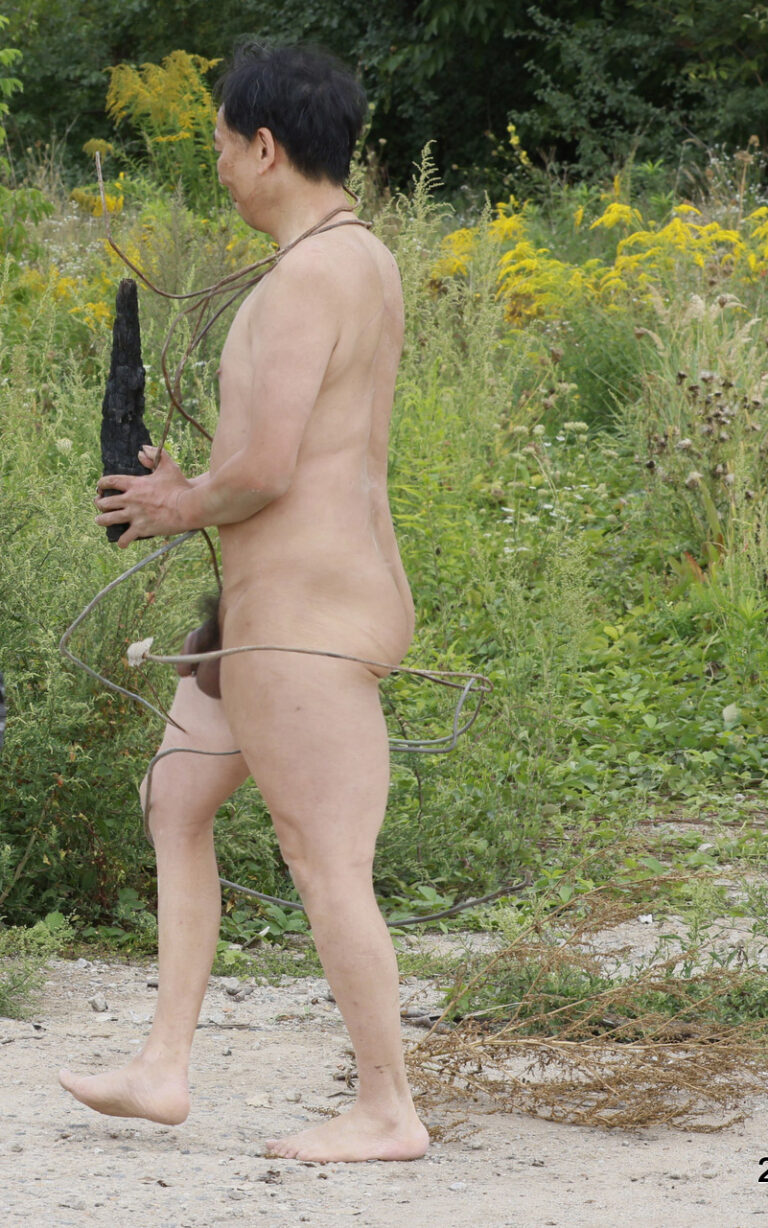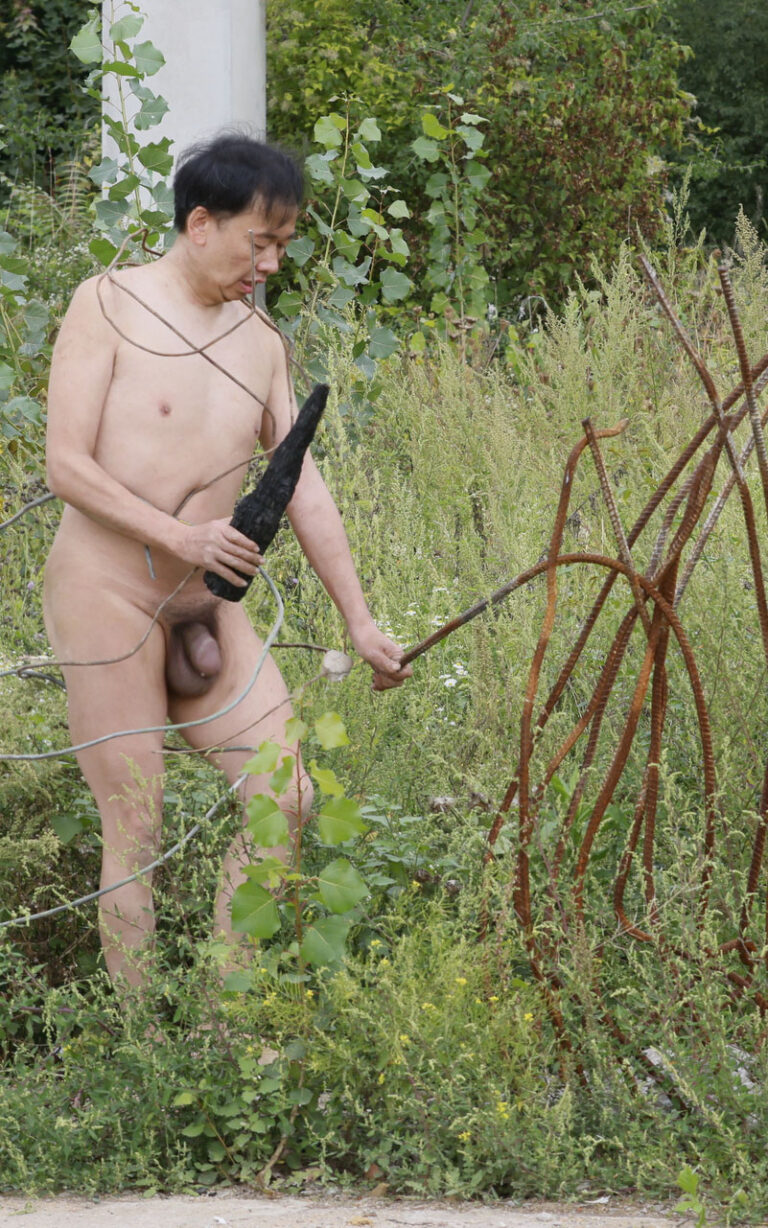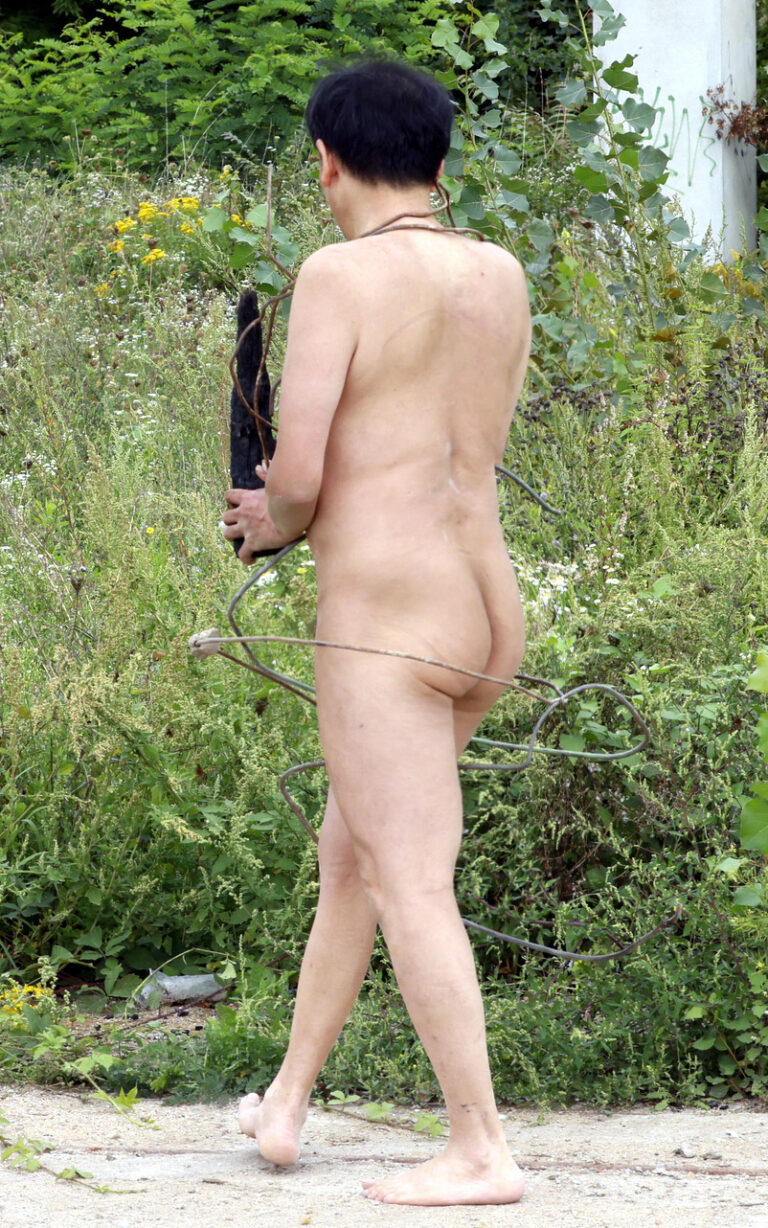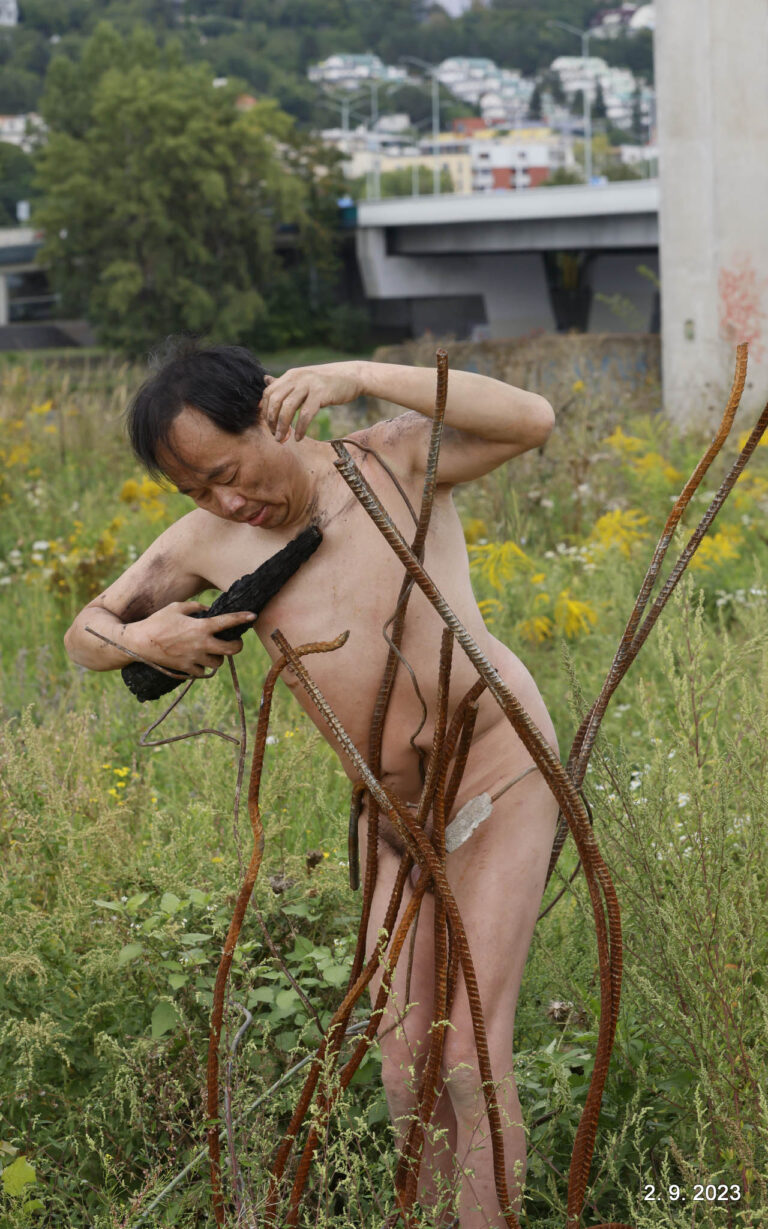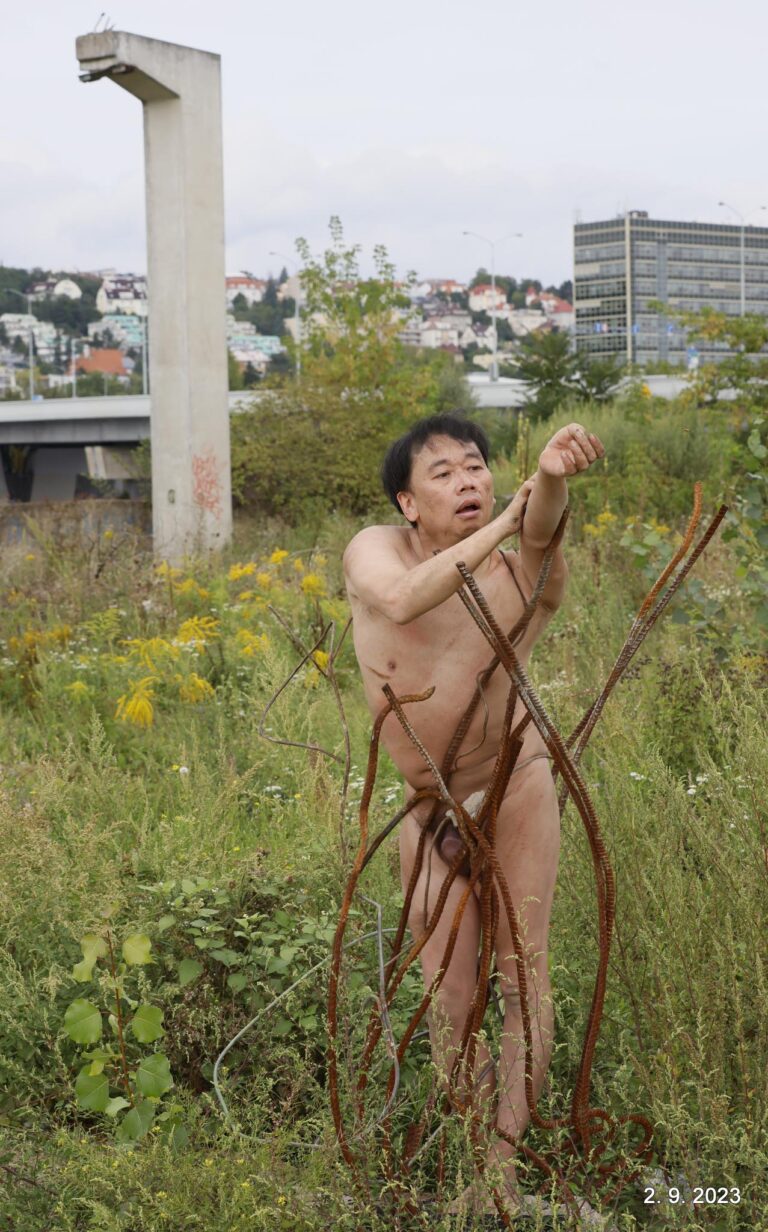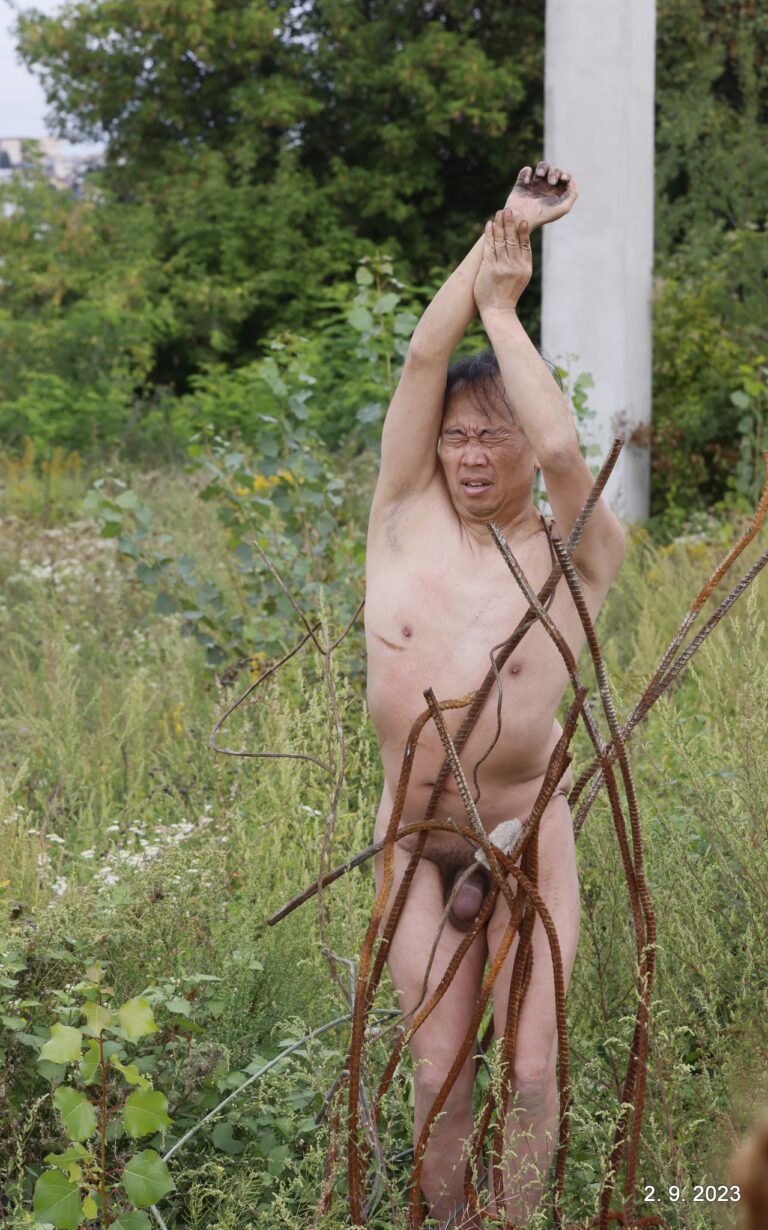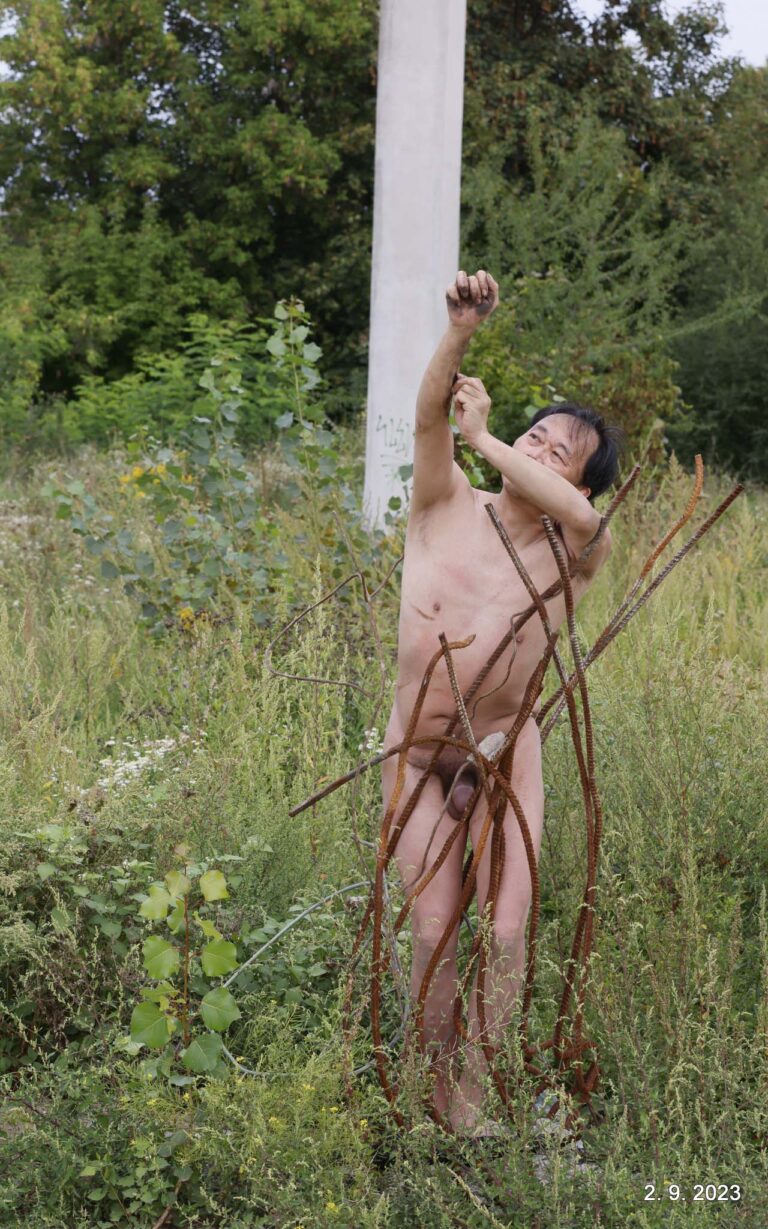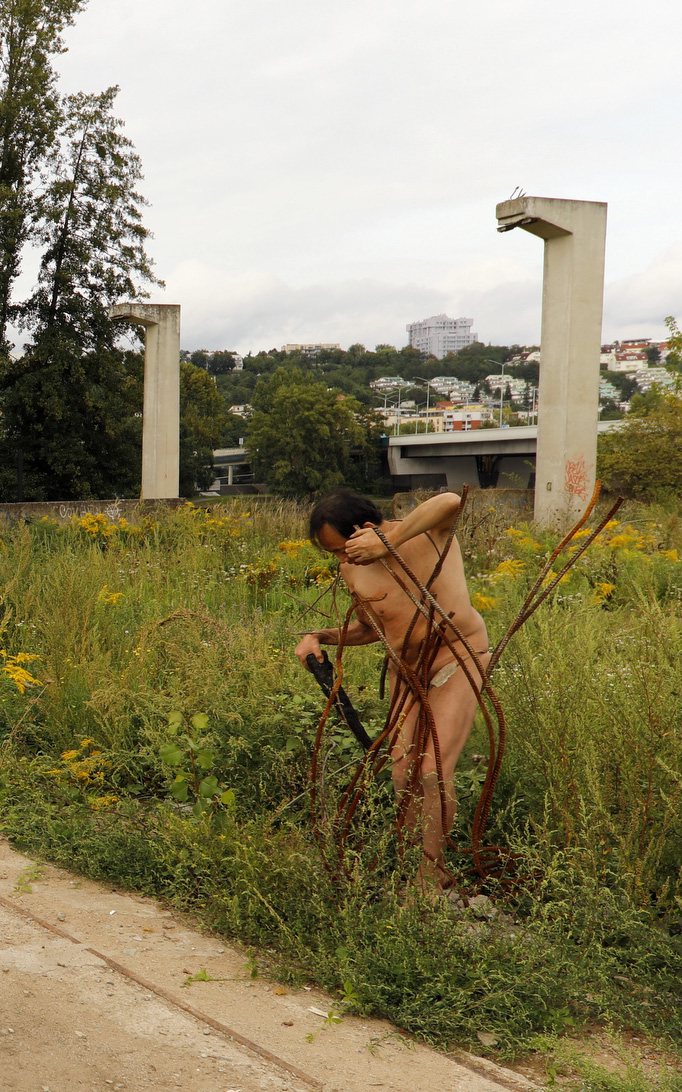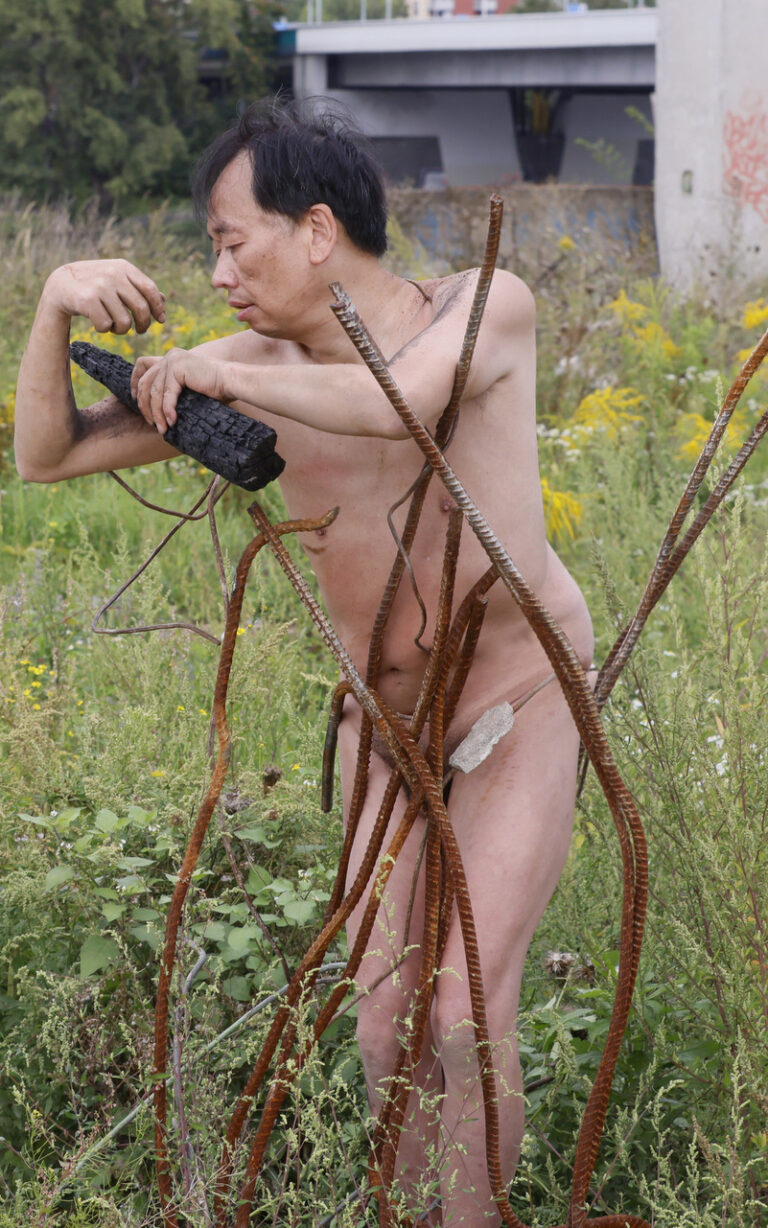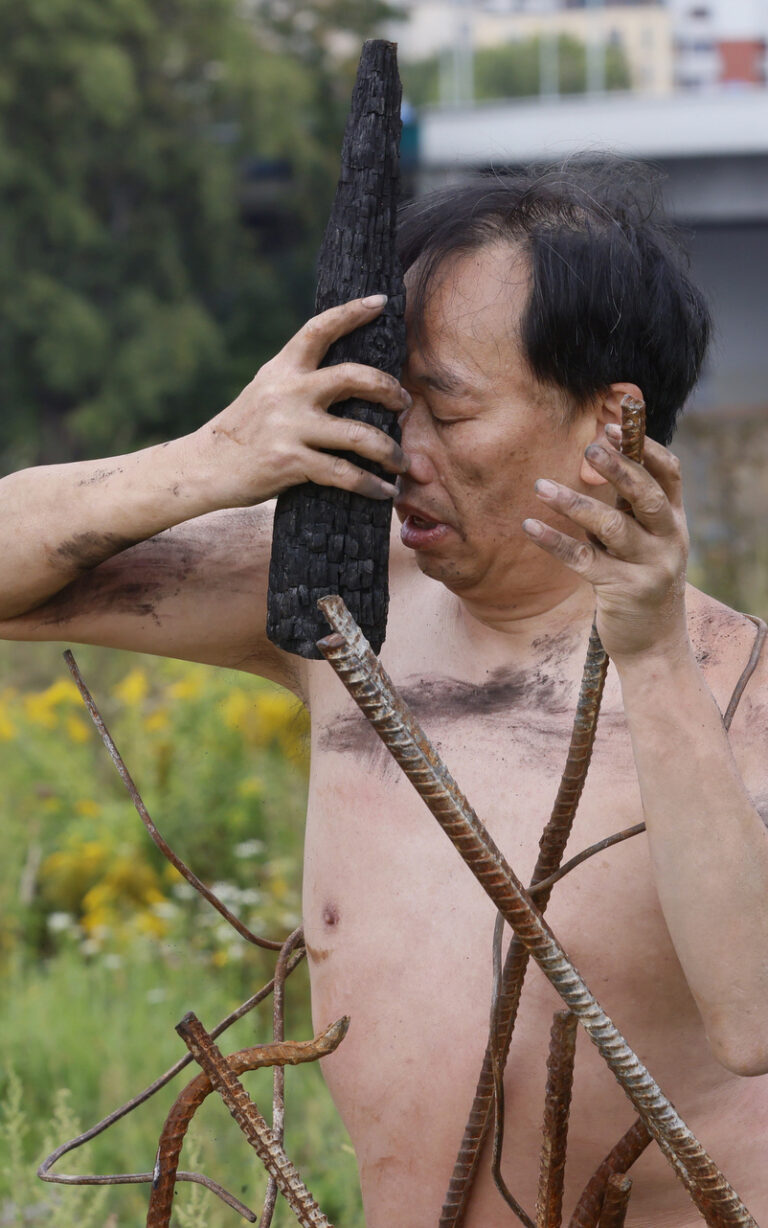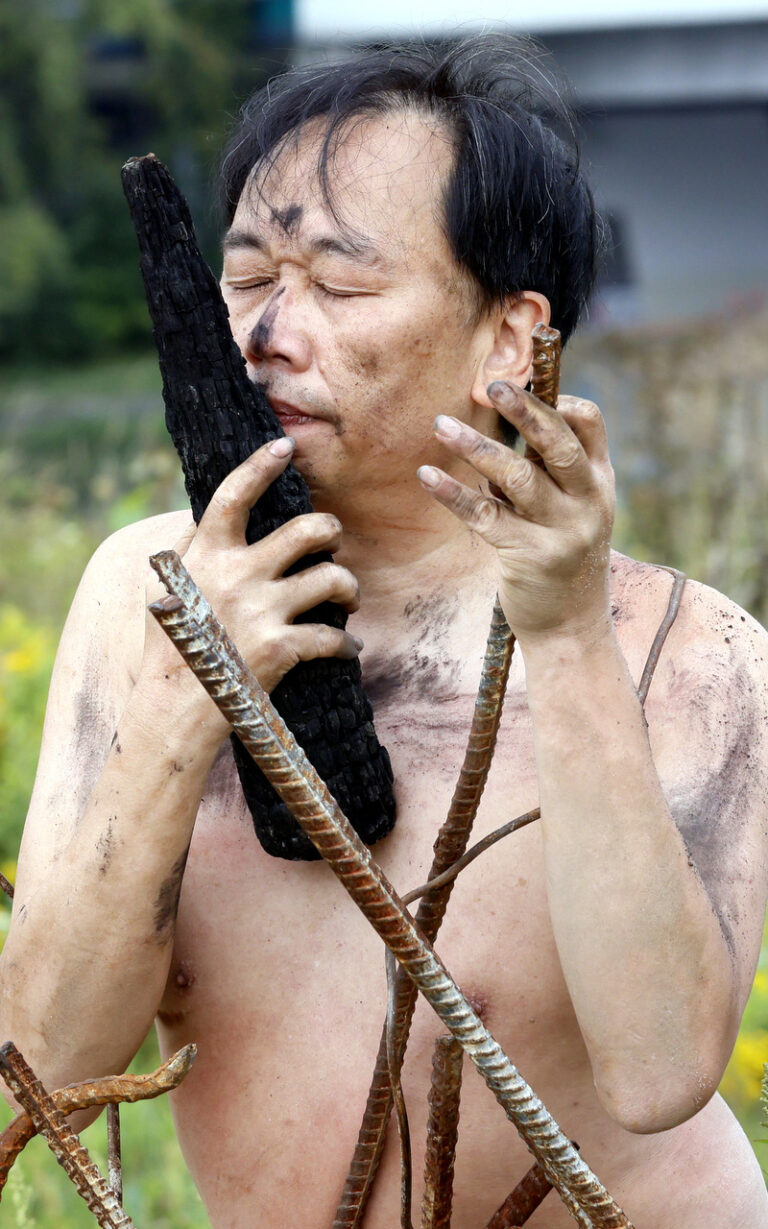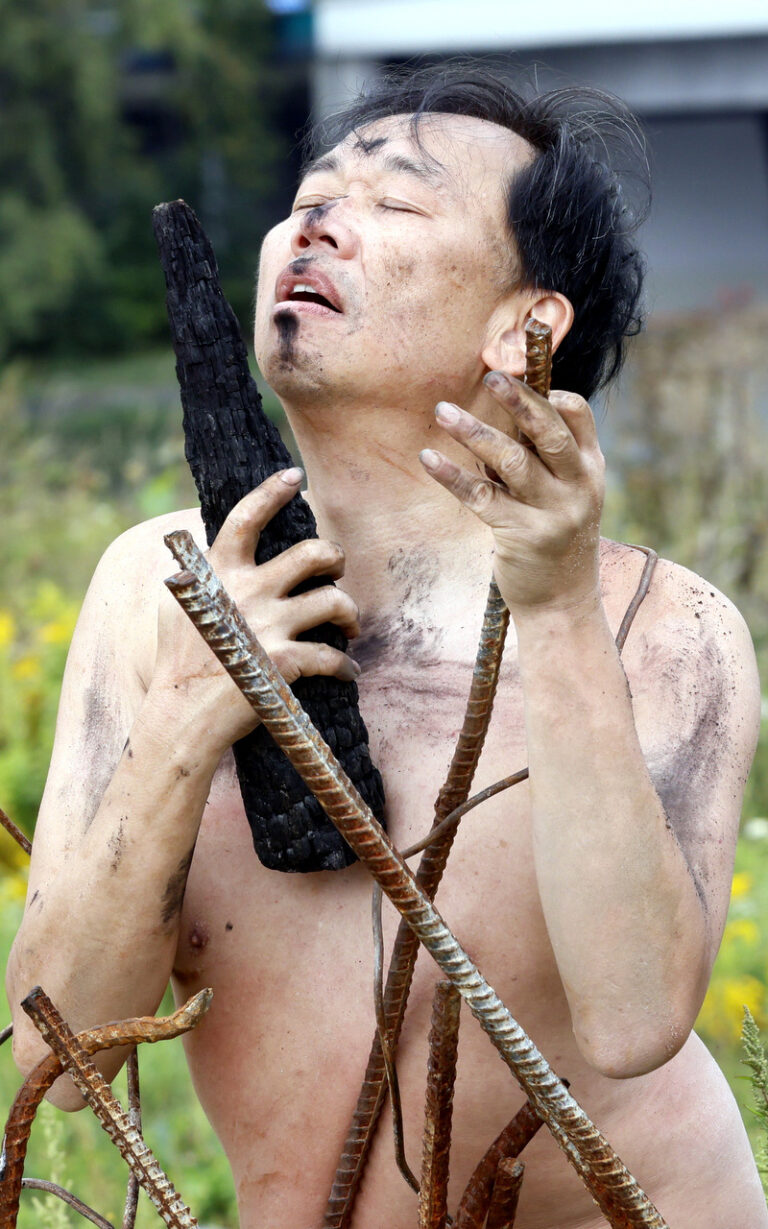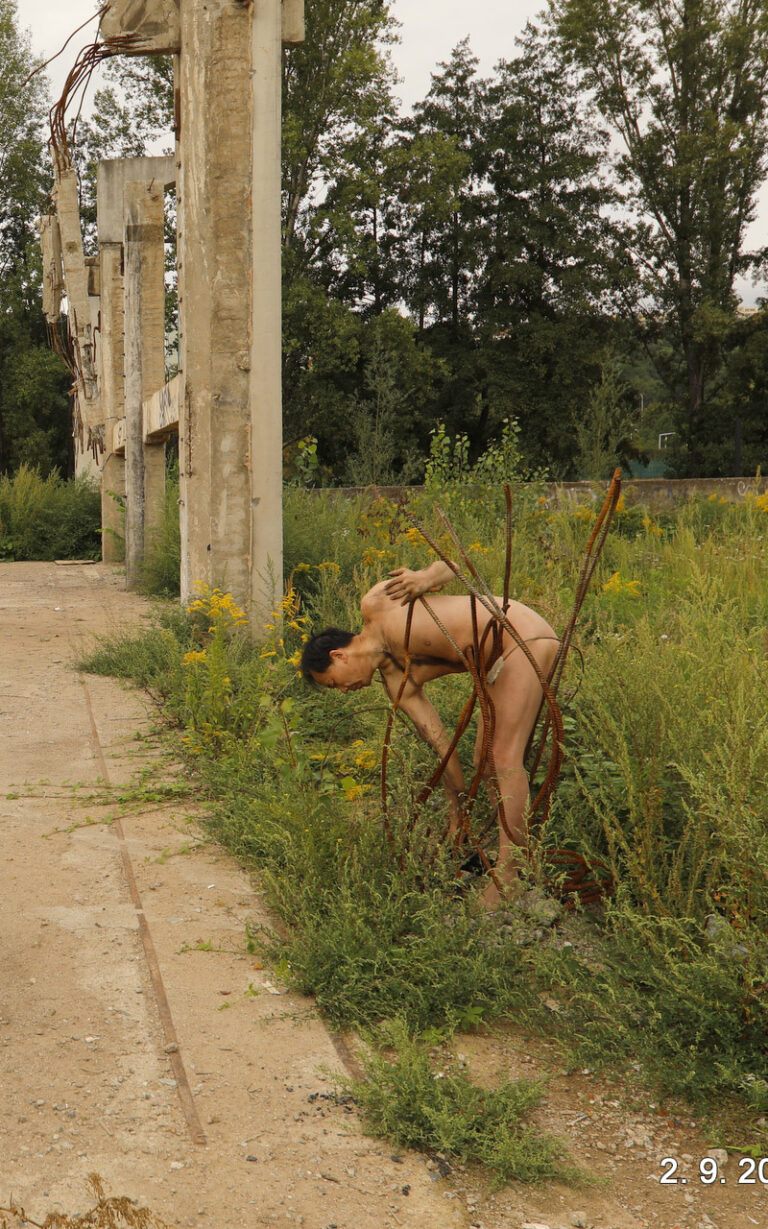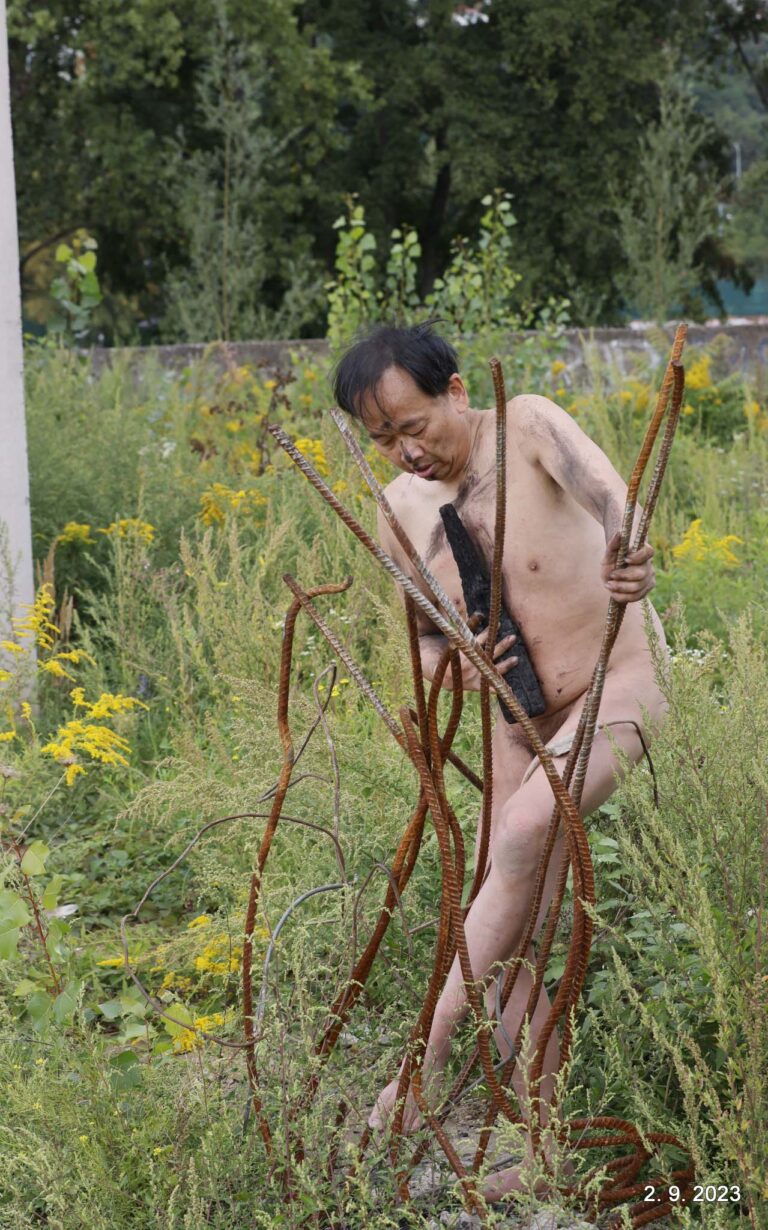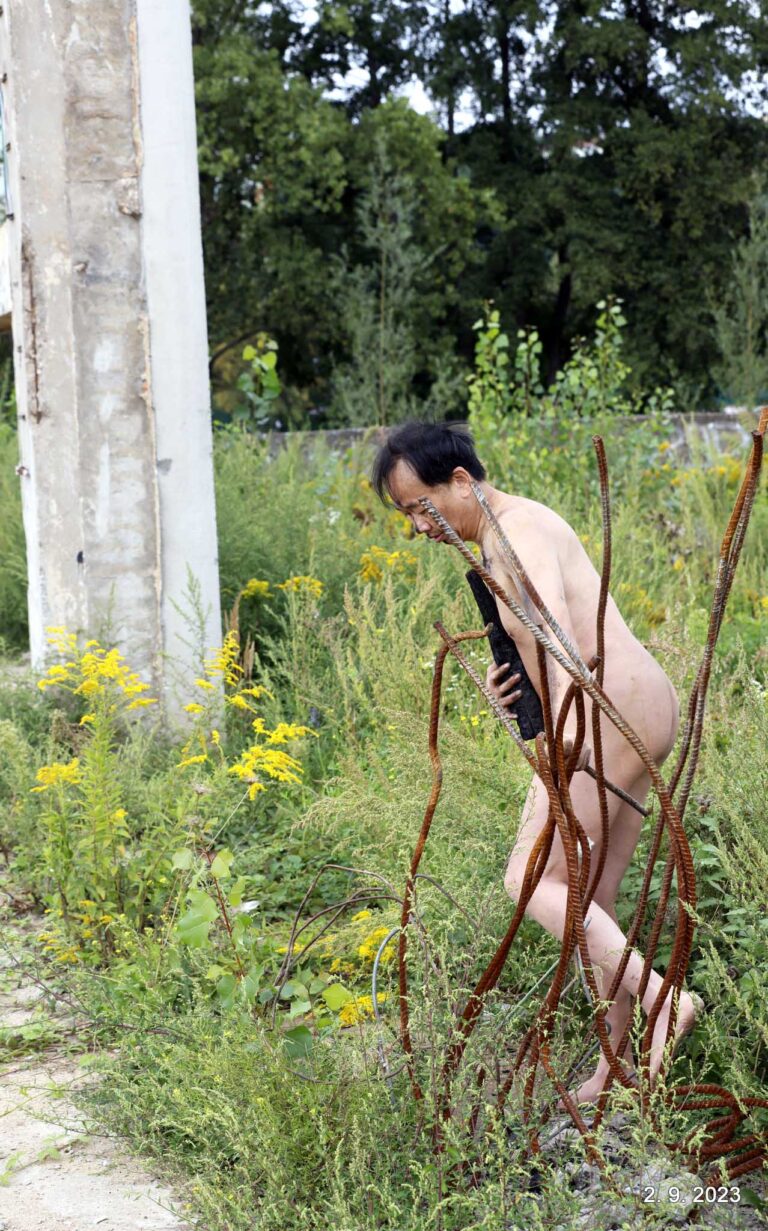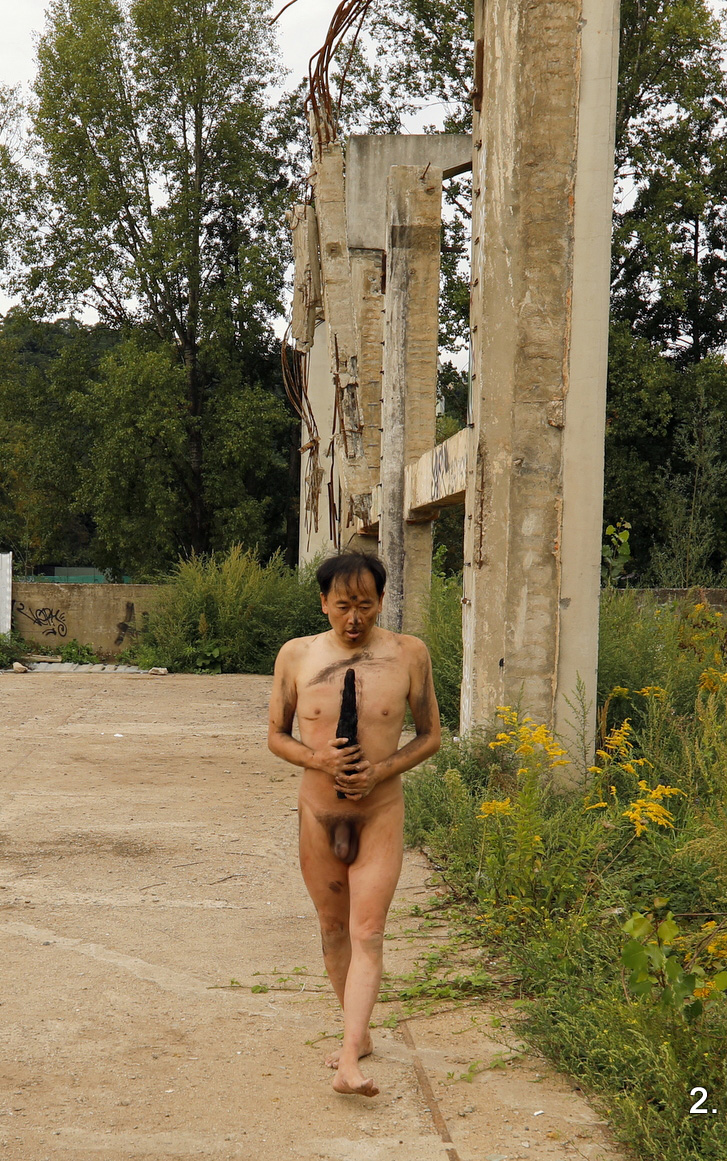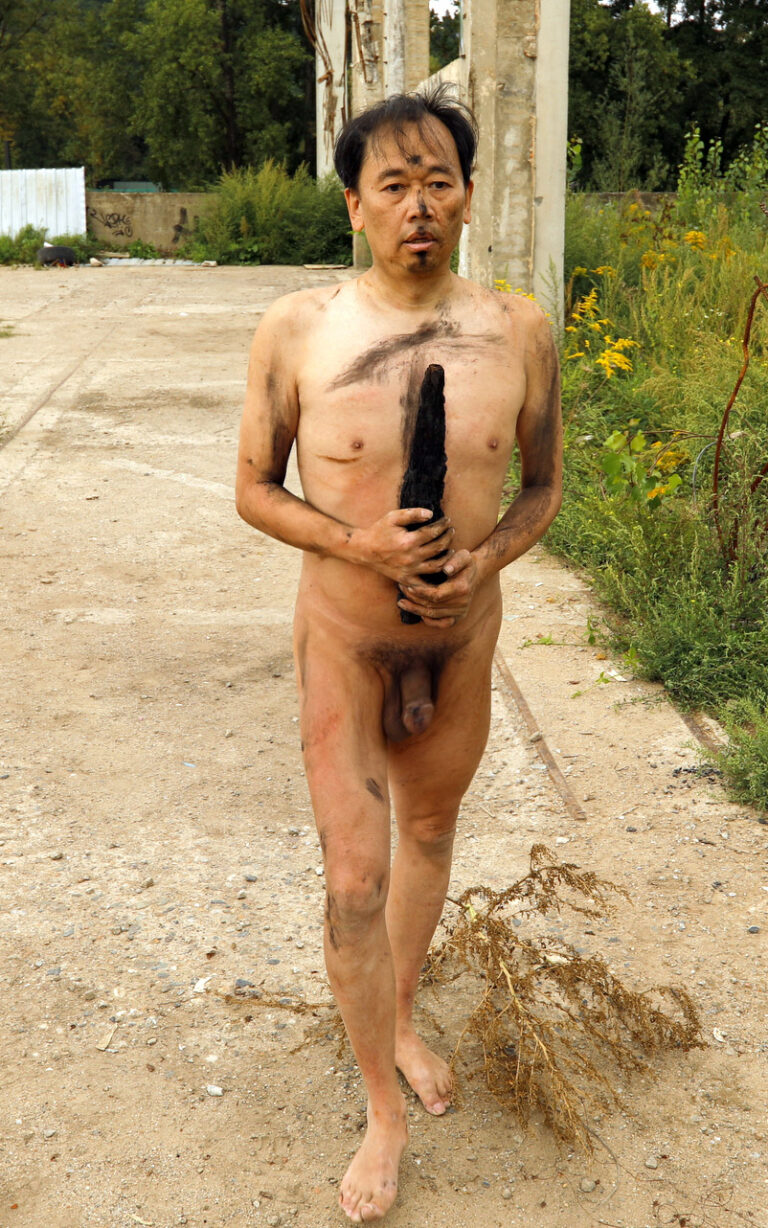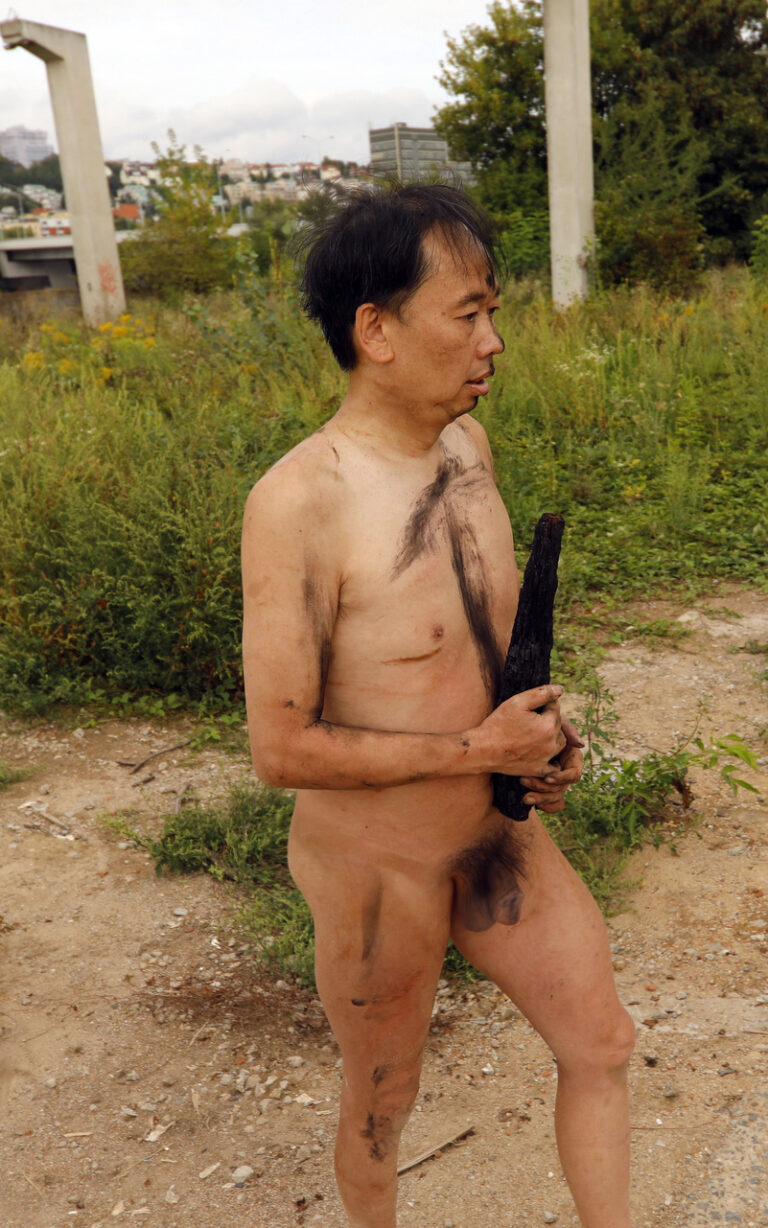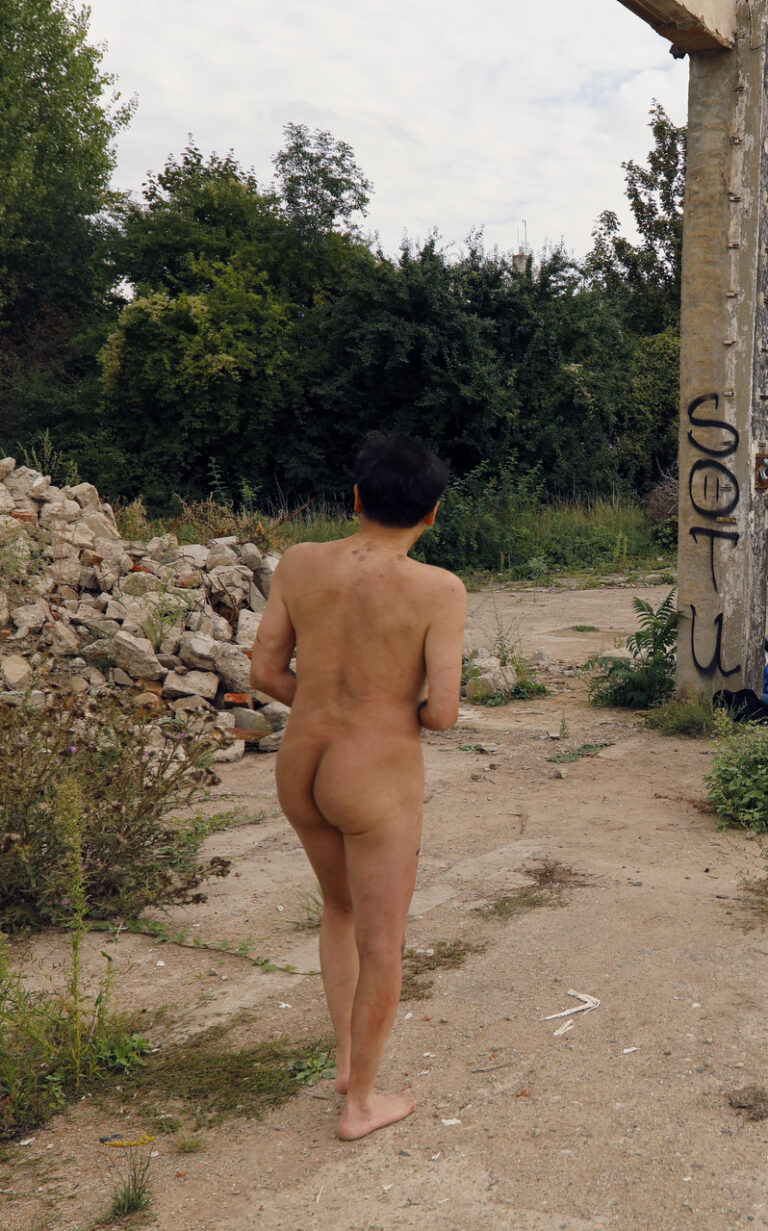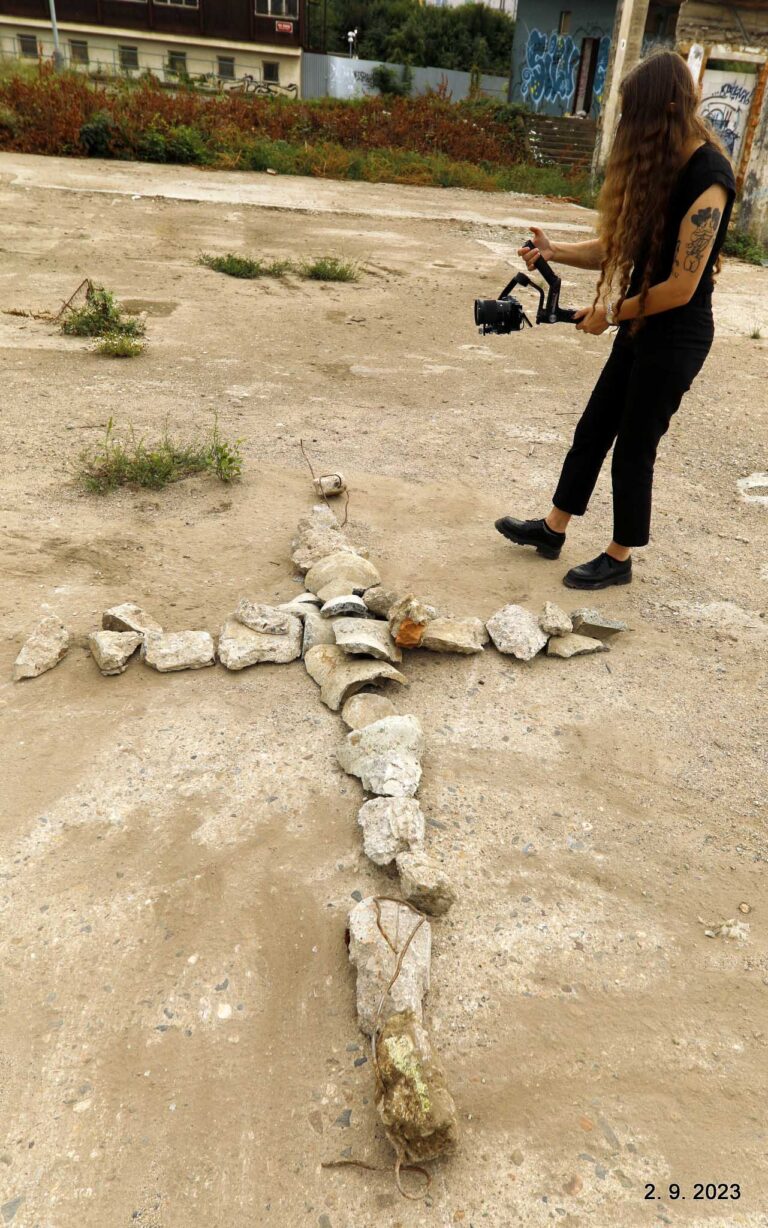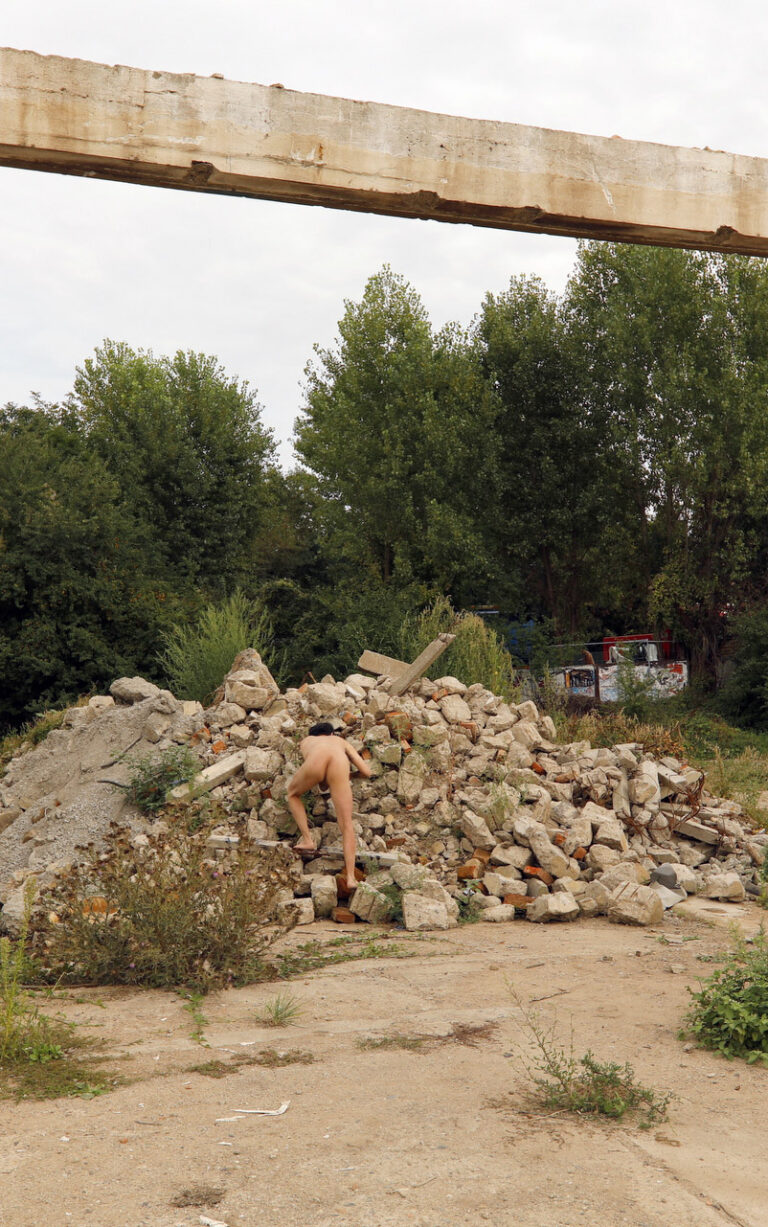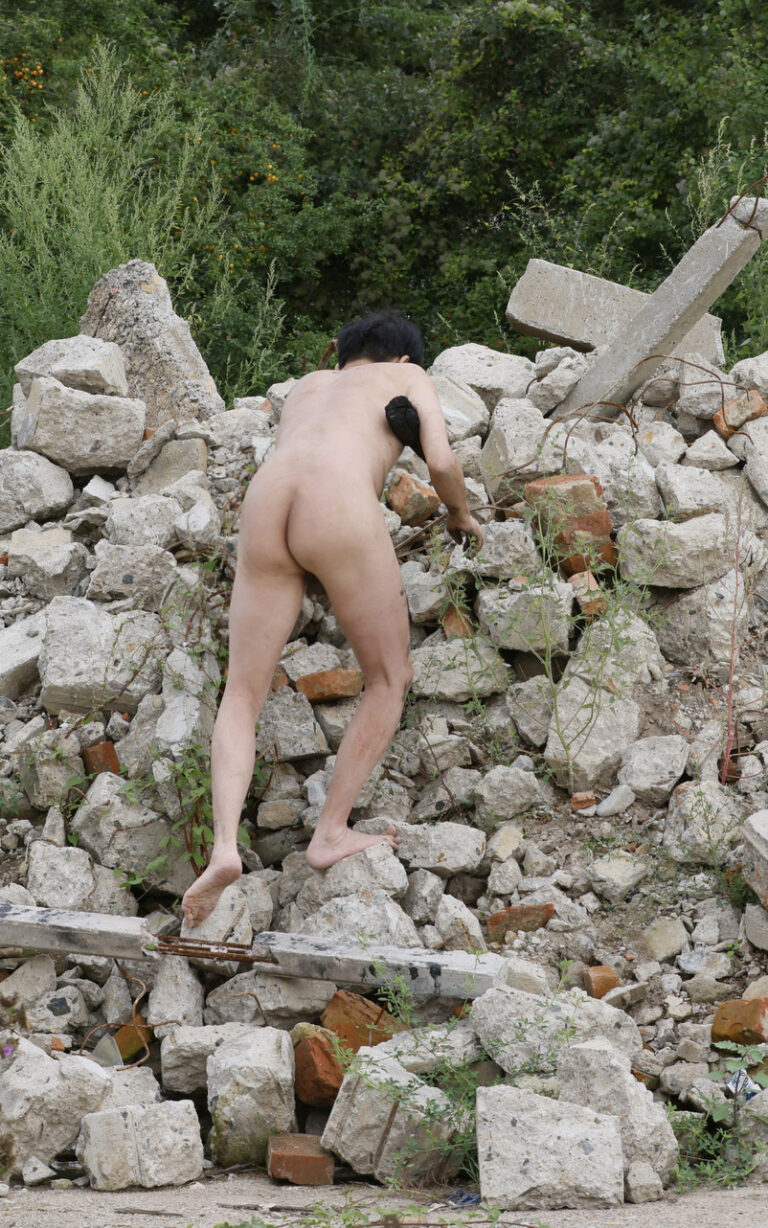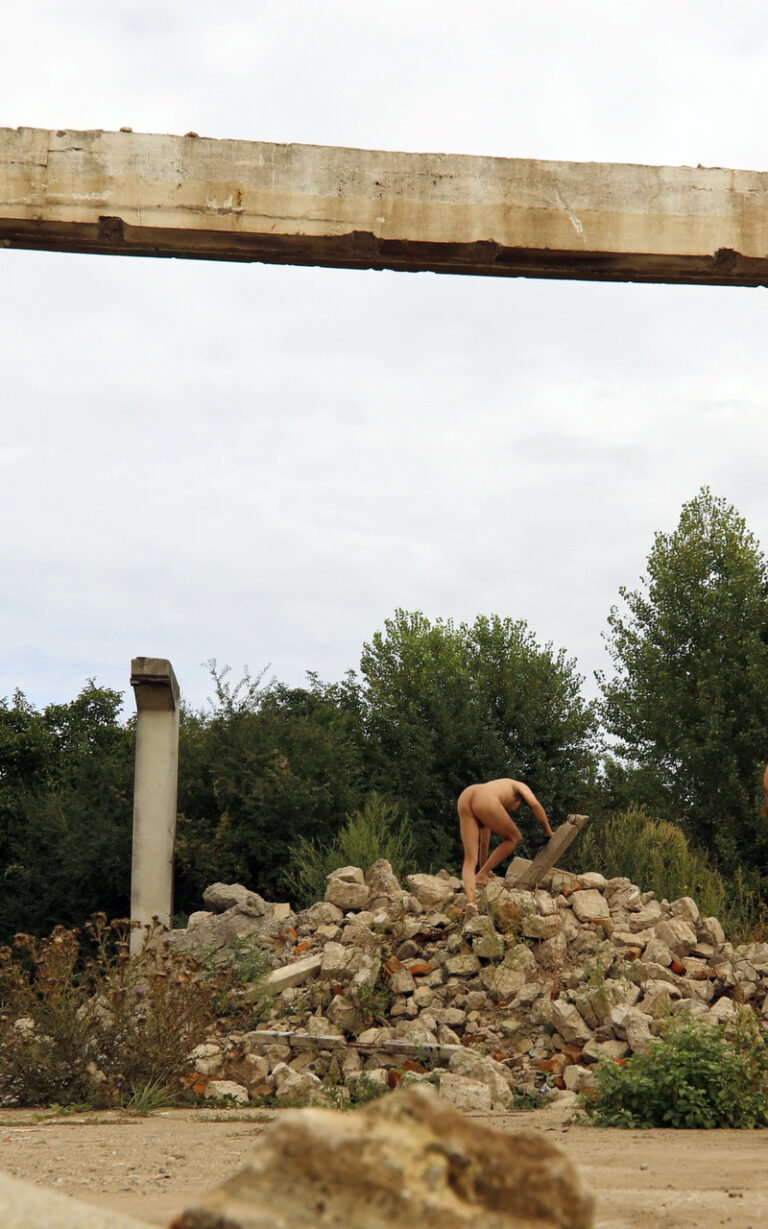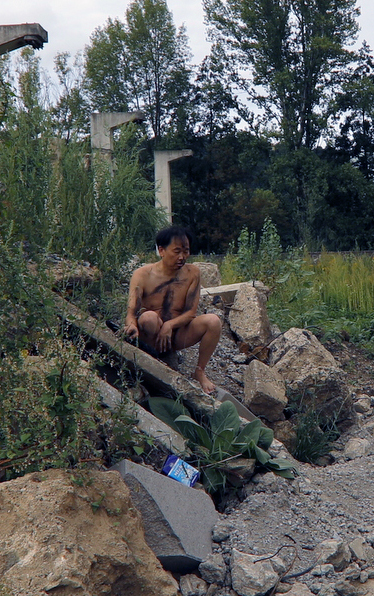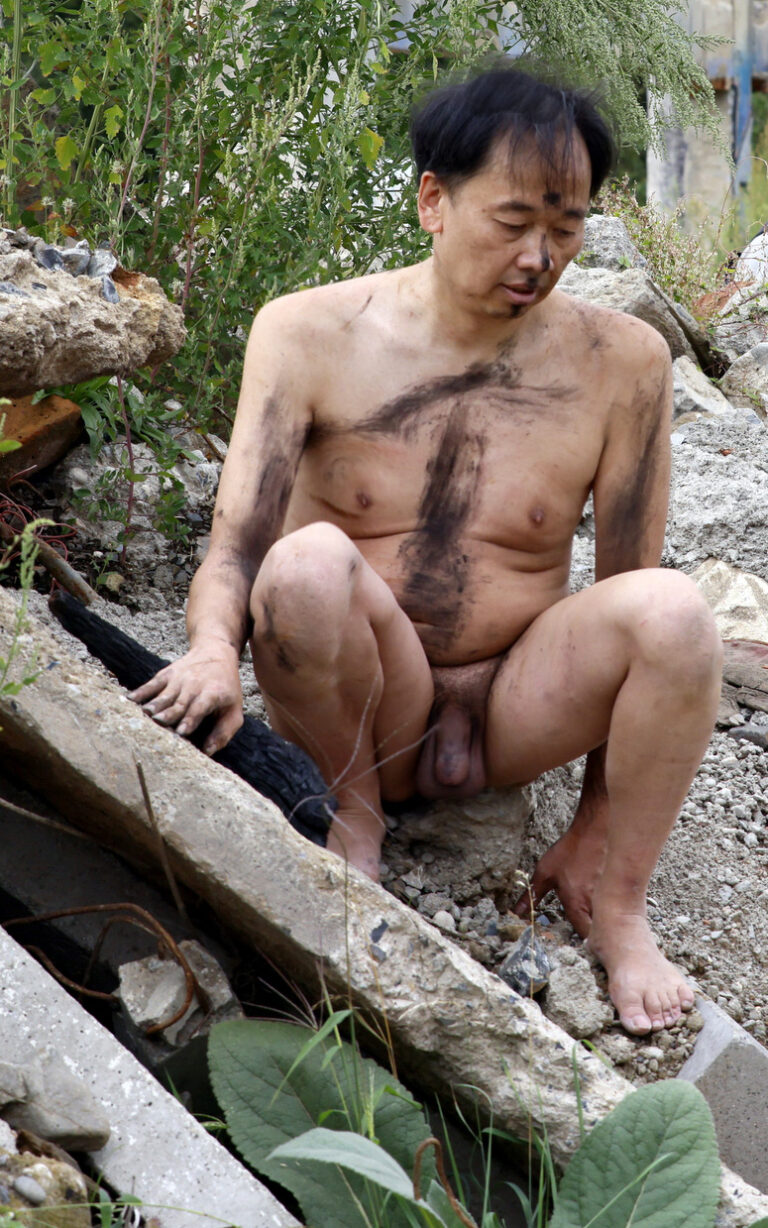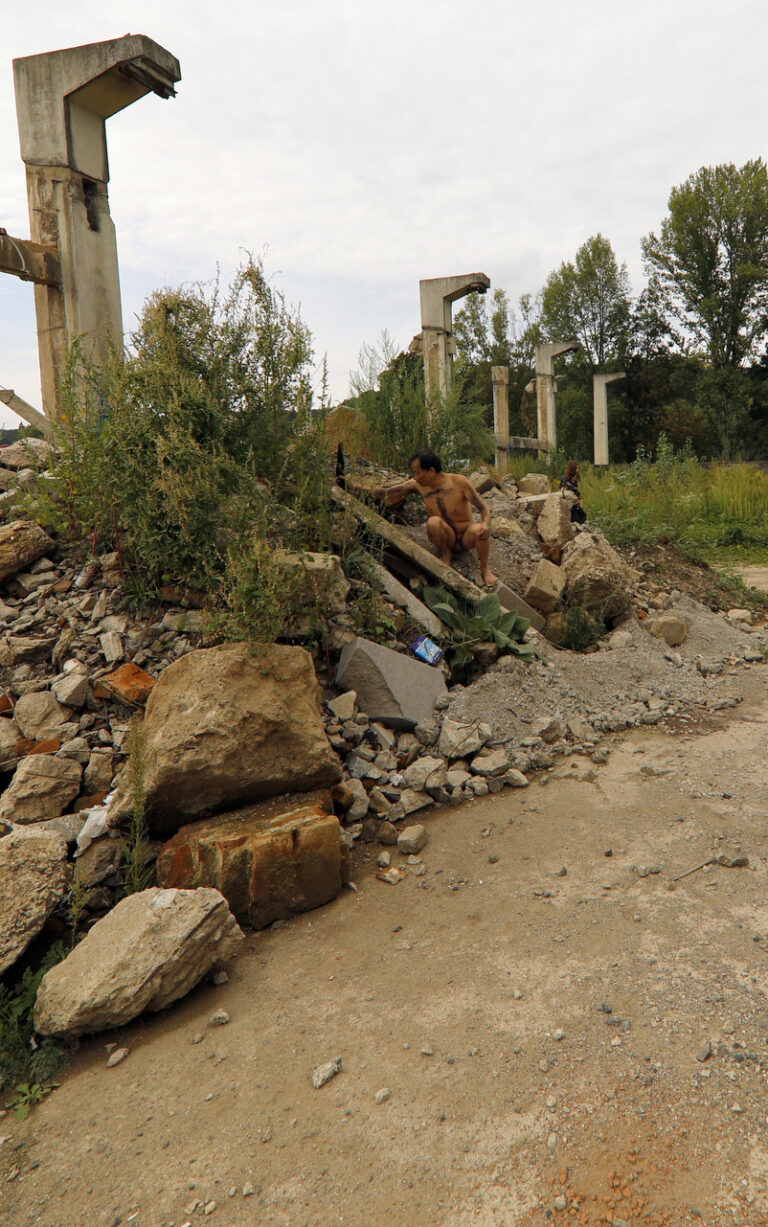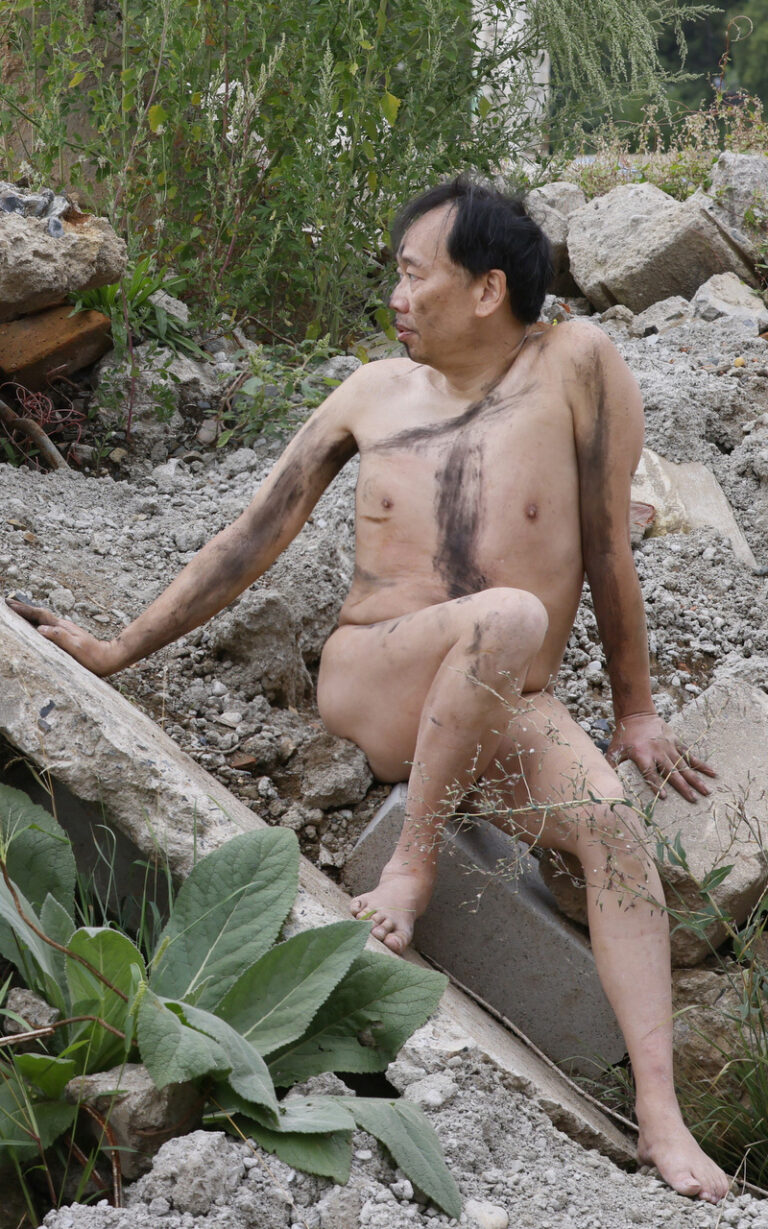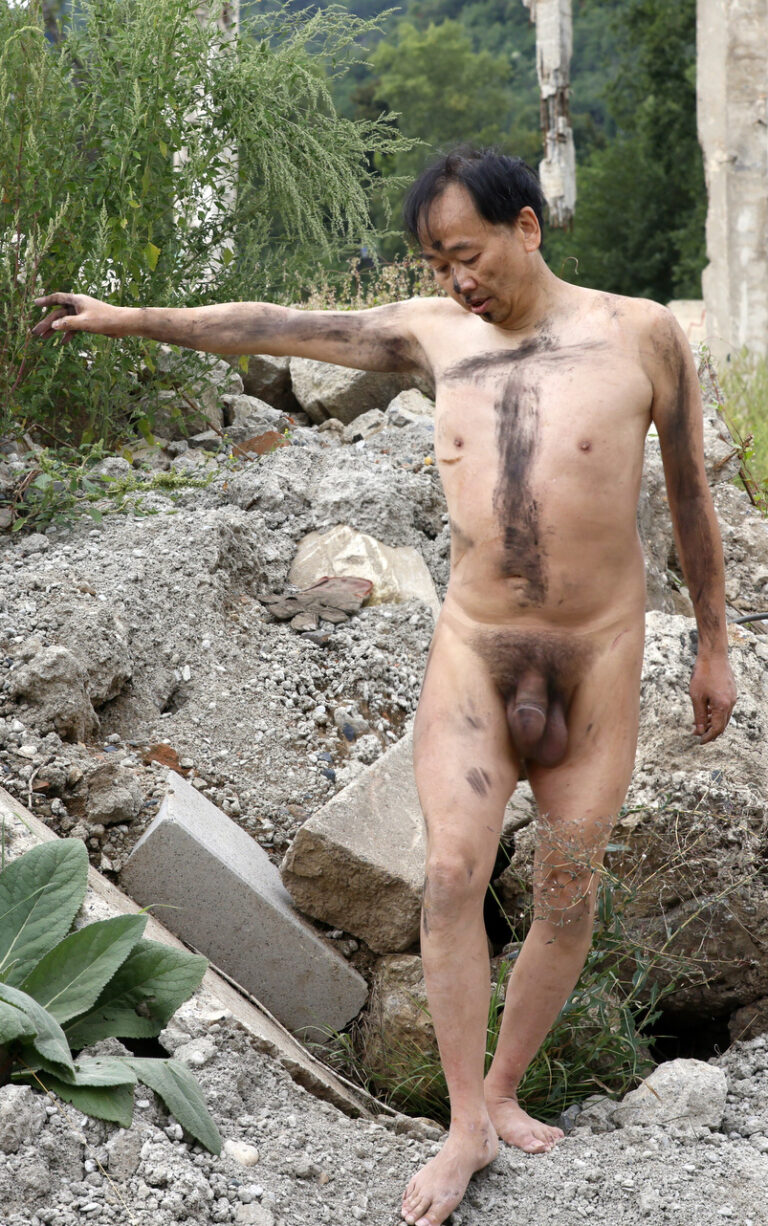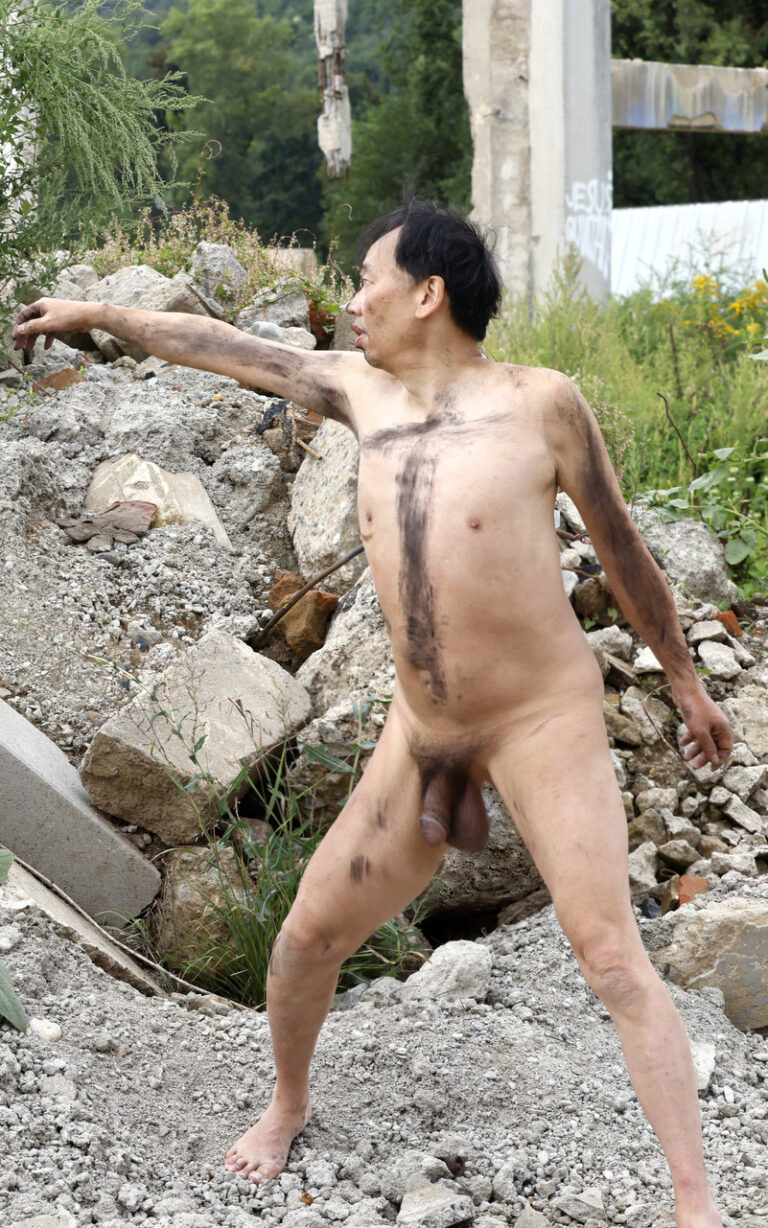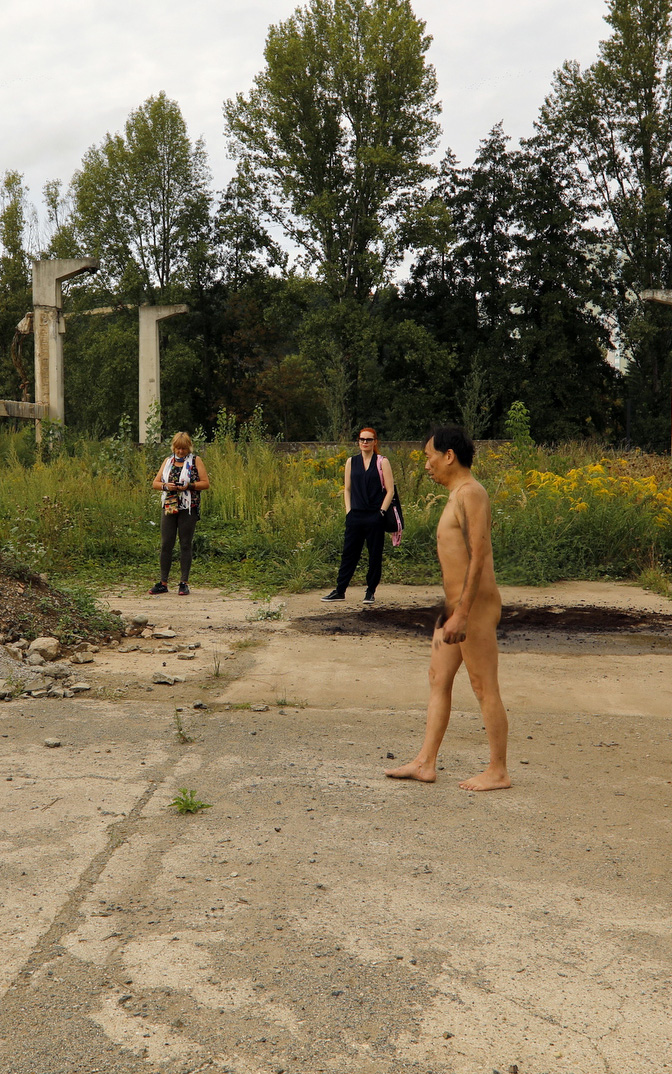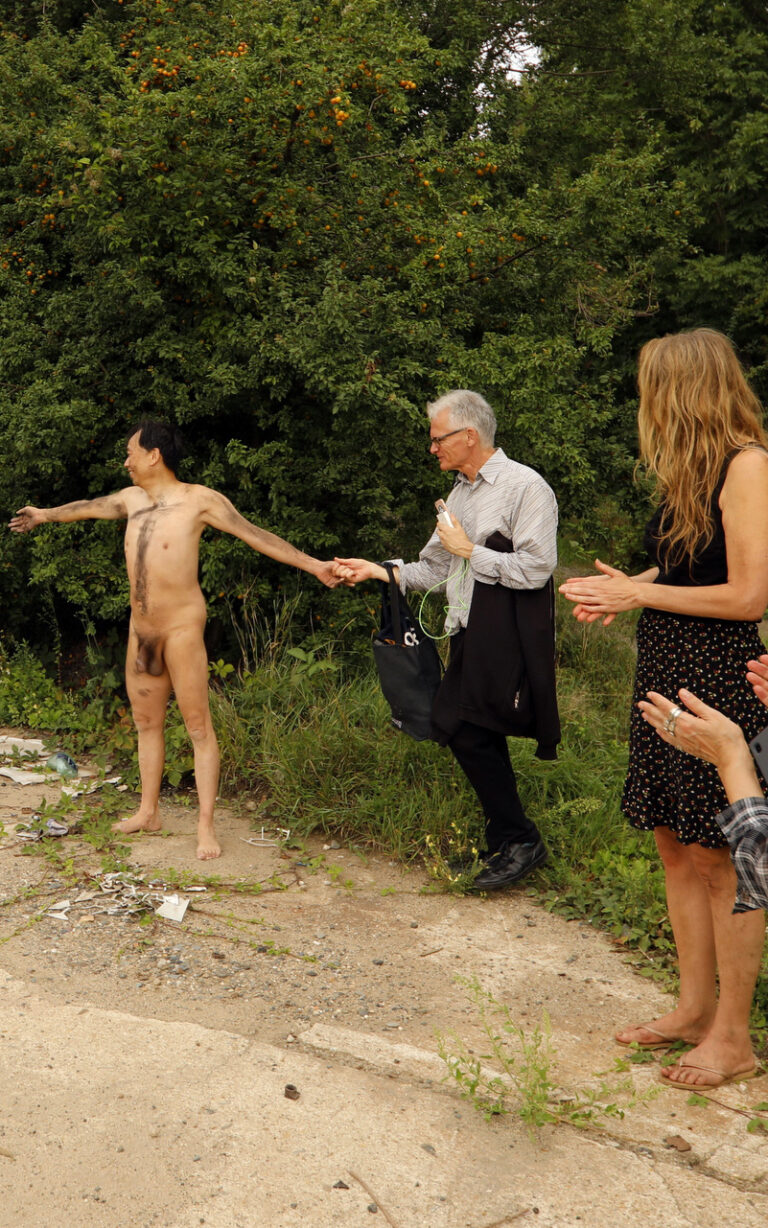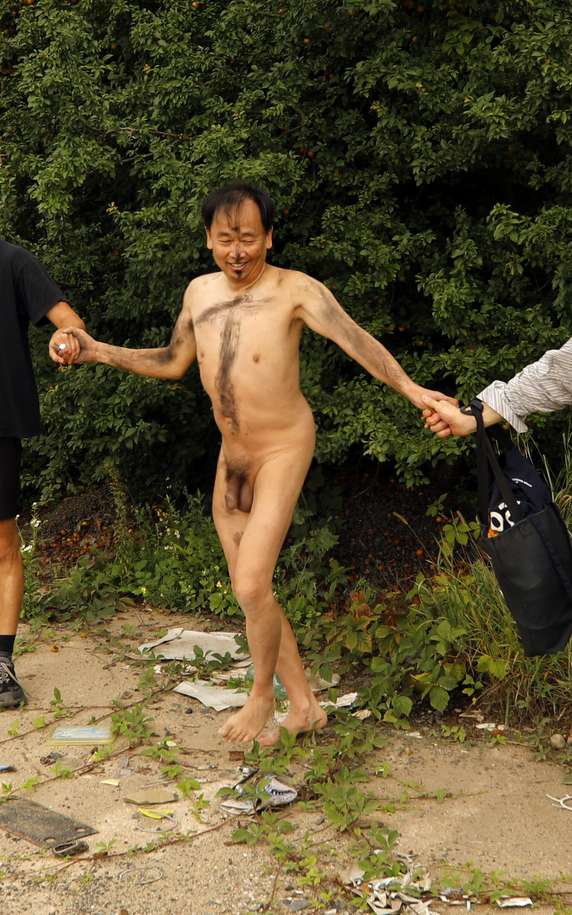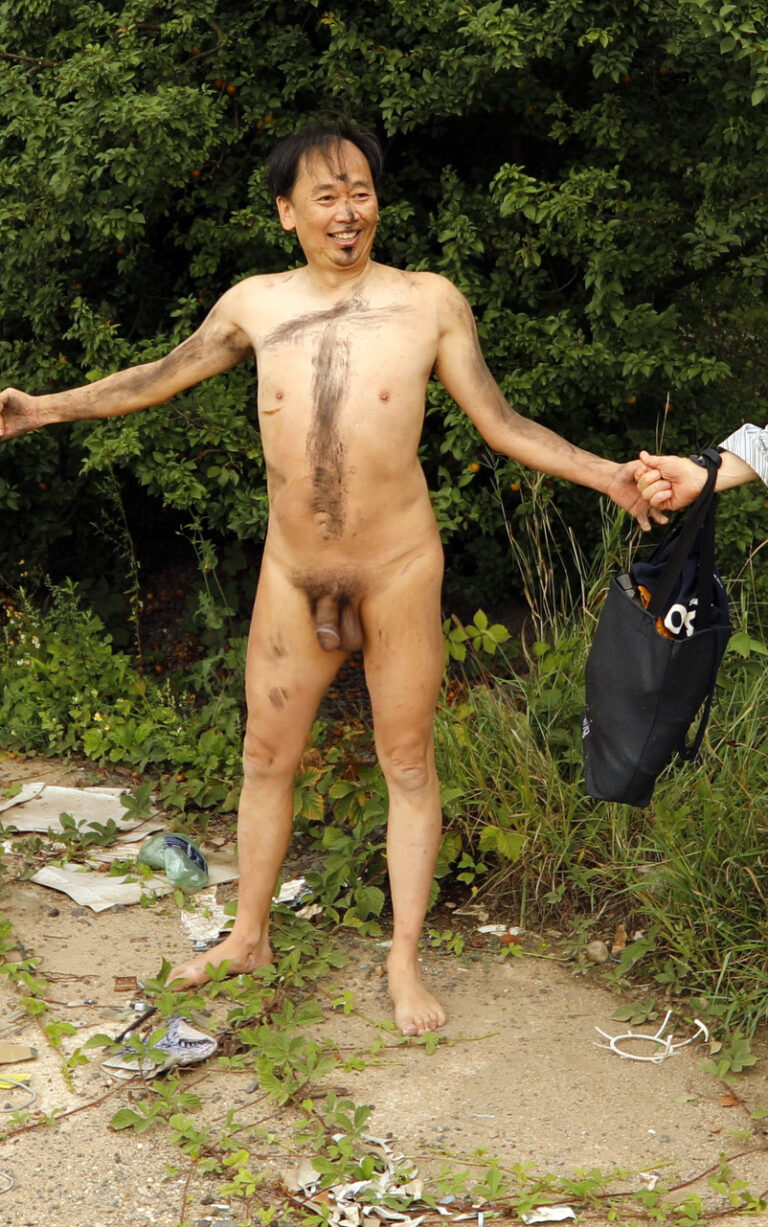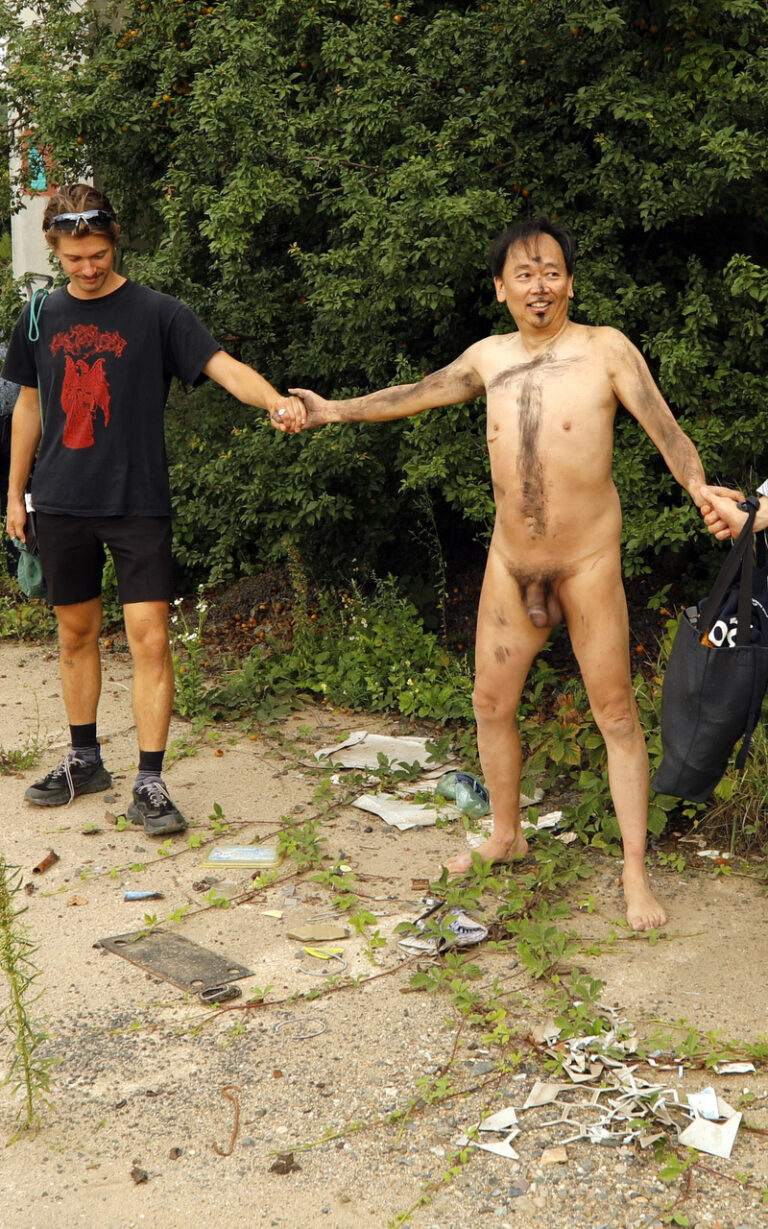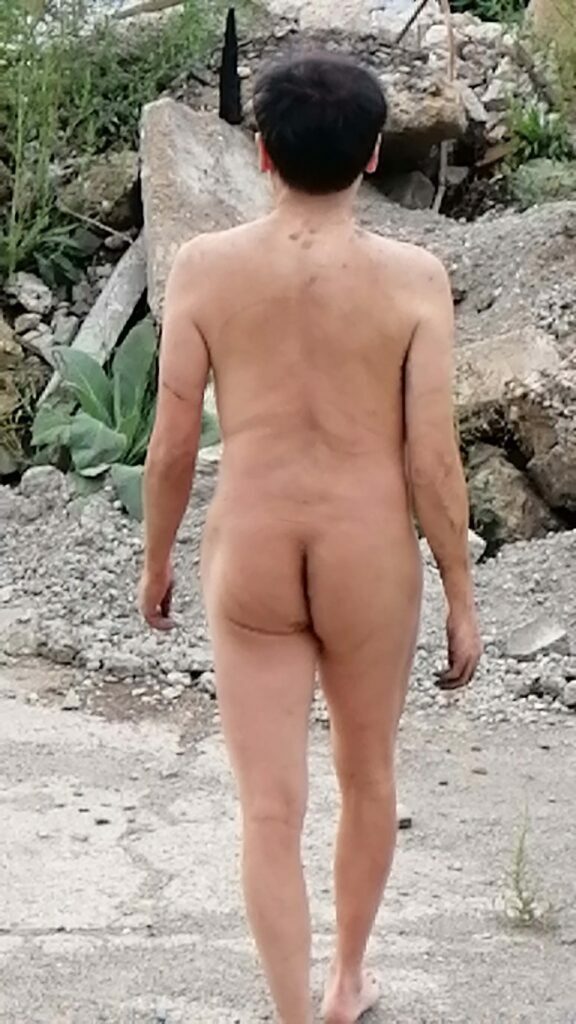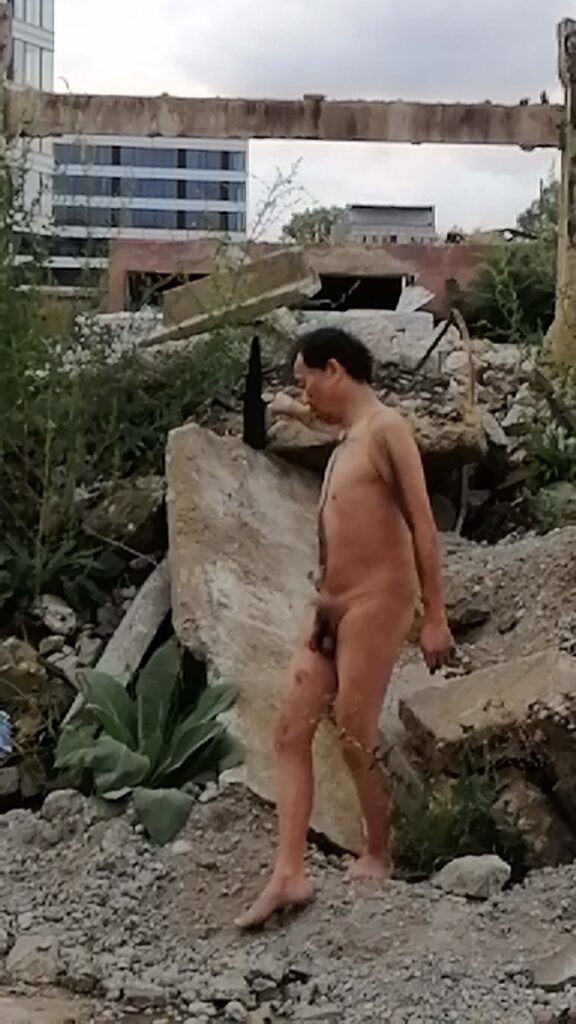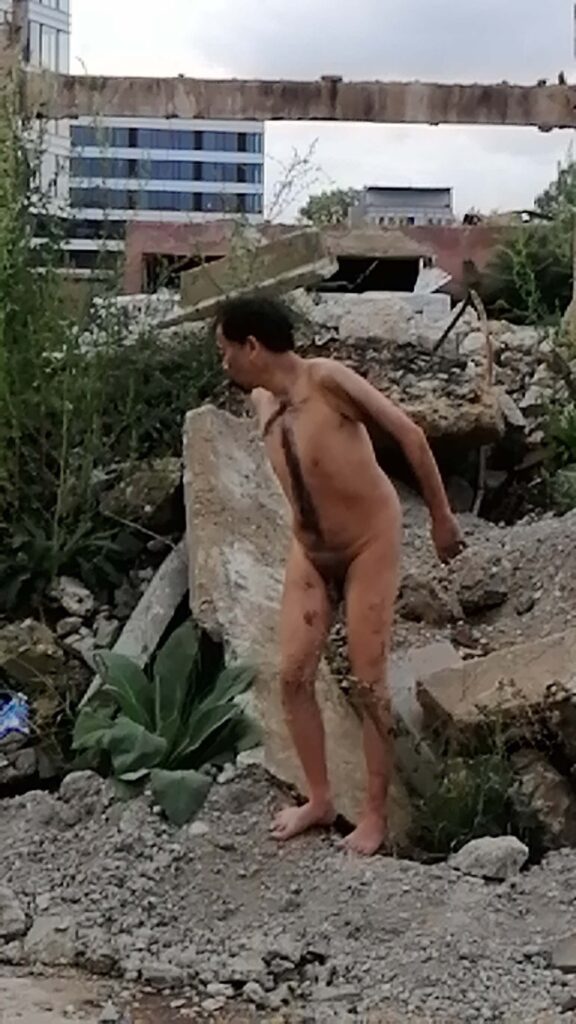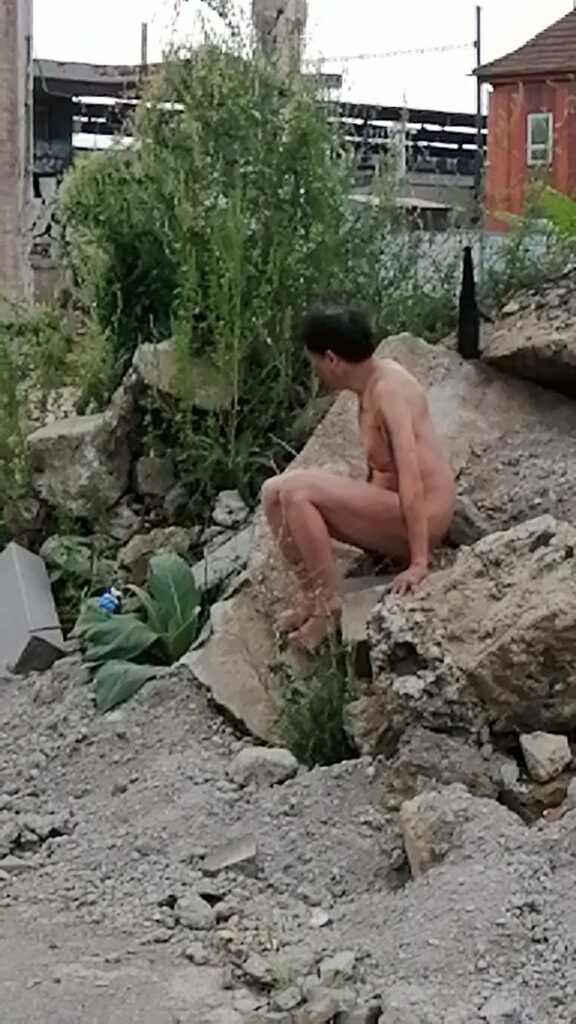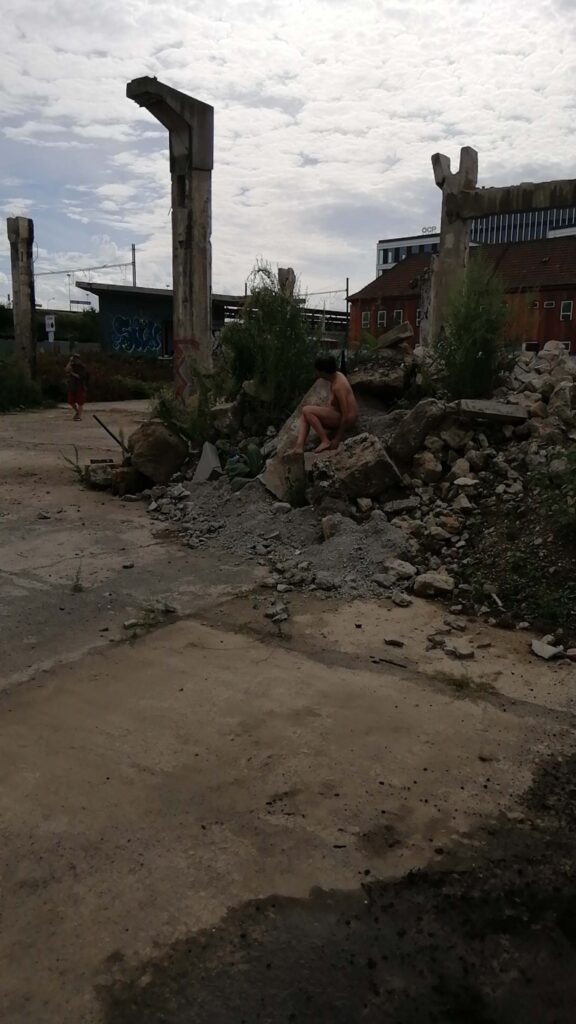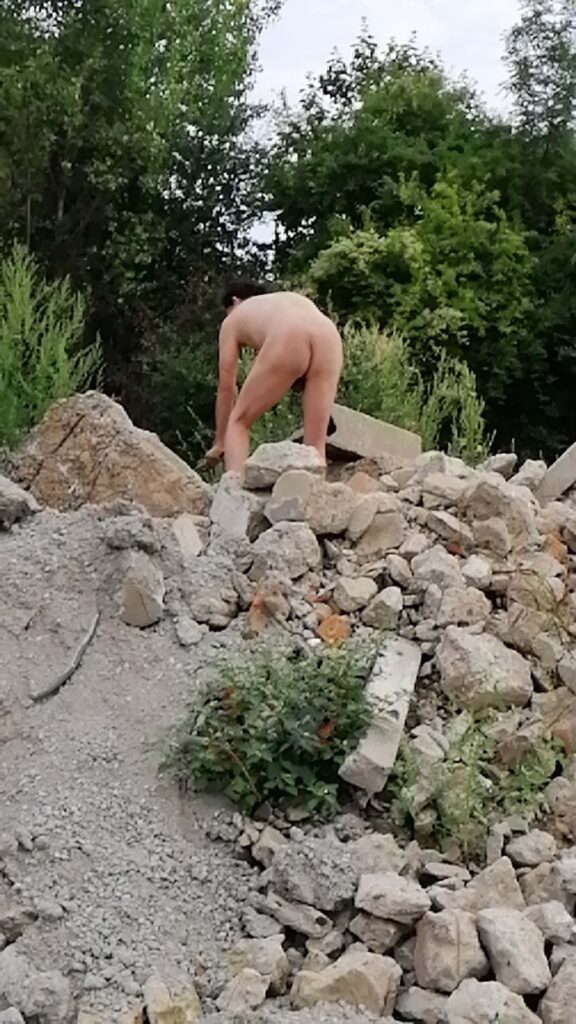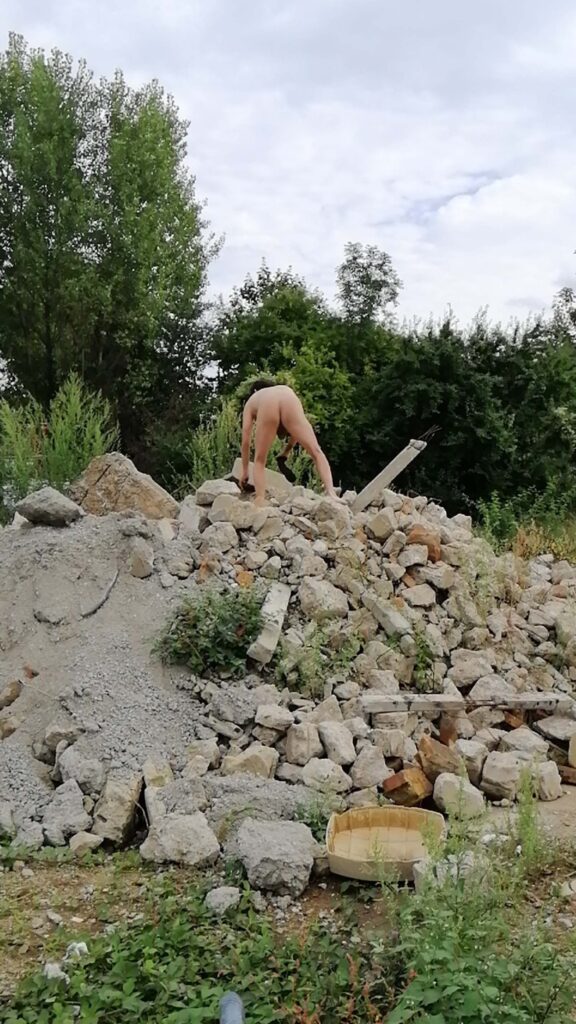Naked as Trans (2023) '45
9th Festival of Naked Forms (FNAF)
Philemon Mukarno is a renowned performance artist who explores the themes of identity, culture, and spirituality. He was invited to participate in the 9th Festival of Naked Forms (FNAF) in Prague, a monothematic and naked-genre festival that focuses on how human nakedness and nudity are perceived. The festival took place on the 1st of September – 3rd of September 2023 at cultural boat Altenburg 1964, a former cargo ship that is now a cultural club. The festival consisted of two days of art performances, lectures, workshops, and spatial events.
Participants:
Philemon Mukarno, Fausto Grossi Terenzio, Jolanda Jansen, Kača Olivová ,Alois Stratil, Pascale Ciapp, Olha Skliarska, Darina Alster, Alexandra Holownia, Remi Voché, Ewa Rybska, Wladyslaw Kazmierczak, Anastasiia Prozora, Julia Kurek, Emilie Franceschin, Barbara Le Beguec, Dariusz Fodczuk, Eliza Mamardashvili, Saadat Aitalieva, Vlodko Kaufman, Martin Zet, Tina Hrevušová and Natalia Sara Skorupa.

The concept
The concept of the festival was Nudity as trans, which aimed to support all beings who have gone through any transition. The curator of the festival, Lenka Klodová, explained that the moment of transition is a moment of pure nudity in the sense of the requirement of absolute honesty with oneself. Nudity is also a transition since the biblical interpretation, where the recognition of one’s own nakedness is the moment of departure from the heavenly state to the human destiny. Nudity as a reference to an extraordinary personal relationship with God is also part of the religious trance, whether in the Eastern tradition of the Jurodivis or the Czech tradition of the Hussite Adamites. Trance also means a state where the state of consciousness changes, which is close to the definition of performance art.
The performance location
The performance location was on an abandoned industrial site near the boat Altenburg 1964. The site offered a contrast between nature and industry, as well as a variety of materials and objects that could be used for the performances. The site also provided a sense of isolation and intimacy, as well as a challenge for the performers and the audience.
The performance ‘Nudity as trans’
Mukarno’s performance ‘Nudity as trans’ was one of the most striking and memorable performances of the festival. He used his naked body as a tool to create a powerful live art and symbolic expression of his personal journey and transformation. He collected all the materials for his performance at the location, such as thick iron wires, stones, black soot, and iron rods.
He started his performance by entangling his body with thick iron wires, which felt very oppressive and heavy. Every movement caused pain due to the iron wires. He then tried to make a Christian cross out of the stones that were piled up there and then lay on the cross. This gesture evoked the image of crucifixion and sacrifice, as well as the idea of death and rebirth.
He then moved to an altar made of thick iron rods that protruded upwards. He tried to wriggle into the altar, which looked like a cage or a trap. In the altar, he underwent a transformation by smearing black soot on his body. The black soot covered his skin and gave him a new appearance and identity. He then moved to the holy mountain, which was a mountain of piled stones, and he disappeared into the mountain. This gesture suggested a final ascension and transcendence, as well as a connection with nature and spirituality.
Impact of the performance
The performance Nudity as Trans by Mukarno was a remarkable example of how nudity can be used as a medium and a message in performance art. He showed how nudity can express vulnerability, pain, struggle, courage, change, and liberation. He also showed how nudity can be related to religion, culture, and history. His performance was an emotional and aesthetic experience that touched and inspired many viewers. His performance was also a testament to his artistic vision and skill, as he created a complex and meaningful narrative with minimal resources and maximum creativity.
Nudity
He believes that nudity is a natural and honest state of being that reveals the essence of a person without any masks or pretenses. The performance explores the spiritual significance of nudity in performance art, where vulnerability is used to reveal divinity, challenge separation, and awaken spiritual connections.
The performance ‘Nudity as trans’ is a powerful symbol of transformation and spiritual awakening. The act of going nude on stage holds deep spiritual connotations, purity, truth, and the unification of body, mind, and spirit. By shedding societal constructs and materiality, performers embark on a journey to reveal the divine essence within themselves and others, seeking to access heightened states of consciousness.
Social
The artist has often played a key role in social movements, addressing issues ranging from immigration to sexism to gun violence. Through their expressive talents, artists can challenge cultural narratives, shift imagery, and inspire emotions in a way that traditional political methods alone rarely do. The ability to craft a compelling story that engages and captivates readers is essential. Advanced creative writing techniques can help take your writing to the next level.
The presence of arts is linked to increased neighborhood livability, community identity, and social well-being. Research ties the benefits of arts participation to better health outcomes, including lower rates of depression and anxiety, improved cognitive function, and better overall quality of life. Engagement with the arts can also lead to greater prosocial behaviors within communities, including volunteering and charitable giving, and can enhance social consciousness.
Power
Art can be a powerful tool for addressing oppression and violence in religious communities. Philemon Mukarno’s performance ‘Nudity as trans’ is a thought-provoking exploration of the spiritual significance of nudity in performance art, challenging the audience to embrace their authentic selves and dismantling barriers that separate them from the divine. The act of nudity on stage becomes a conduit for shared spiritual experiences, fostering social change and promoting a more inclusive and accepting society.
FNAF 9 – TRANS
Praha – Holešovice, culture boat Altenburg 1964, boulevards on the Vltava river, September 1-3, 2023
Lenka Klodová, curator and inventor of FNAF, organizes the festival every year under a leading slogan. But that’s not what’s original about her concept, because many festivals have more or less metaphorical titles, but the fact that she takes the topic seriously. The festival is usually accompanied by discussion panels and conferences. Thus, she gives this artistic project a scholarly character. The FNAF Festival, in Klodová’s assumption, is a research and artistic project, so it has been included in a relatively new, contemporary area of research, which, however, has already developed its own methodology and is a well-established way of creating in art, both in terms of the content of the works and their visual forms. FNAF 9 in 2023 also has a FNAF EDU component related to the issue of nudity in the art teaching process. Nudity, as a nude study, has been the basis of academic teaching since the beginning of the history of the Academy. In turn, actionism is a relatively new field in artistic education, seeking its place at art academies. The combination of these two factors, tradition, and modernity, creates the ground on which a contemporary Academy can be built.
Klodová, via FNAF, placed performance in a new artistic field. At the same time, she gave performance art itself a new character, adapting this type of artistic practice to the lines of development of contemporary art. So far, in the history of art, performance art has been present as one, homogeneous trend, distinguished from other artistic practices, or art media. Performance art, when it was created in the 1970s, was new compared to traditional media such as painting or sculpture. Today, it has lost its novelty status and has become one of the equal media of art. And this is how it works in the Academies. Therefore, in the unified field of performance art, distinguishing subcategories is a task that specifies performance practices by indicating a specific workshop and contextual practice, socially located in art discourses. In this way, subtrends are created within performance, with their own theoretical background. Just like in the history of science, distinguishing new fields leads to specifications that prove the development of science, its vitality, and its openness to new things (unlike religion based on dogmas).
Distinguishing works of art based on the naked body in the field of performance is such a classifying and pro-development measure, ensuring a place for performance in the art created today. In this way, FNAF provides performance art with vitality and the possibility of creating new forms of art. There are probably other performance subcategories that can be distinguished today. However, the category of nudity is basic and essential, i.e. it encompasses the essential character of works of performance art, thanks to the fact that they are based on the somatic and mental condition of a person. It is also historically grounded in works of body art. Therefore, it has artistic continuity, which ensures that the works being created today are grounded in the field of art. The FNAF festival is therefore of great importance for the construction of contemporary art. It is a continuation of its development lines and at the same time a new position ensuring the place of performance within its contemporary trends.
So FNAF is not one of the festivals with a traditional formula, where artists present various forms of this art – the more individual the solutions, the better. During this type of festivals, the most important thing was not to repeat a form already invented by someone, in order to be original. This means that the presented art was governed by the main principle of the avant-garde – originality. Referring to the text by Rosalind Krauss – the basis, i.e. the equivalent of the grid, was the individual psychophysical condition. This approach, practiced for decades, allowed performance to crystallize as a separate art discipline. Performance artists could circulate in a network of festivals taking place around the world. However, this was the situation in the 1990s and the first decade of the 2000s. Then the movement of performance festivals as a distinguished field of art fades out and festivals are organized less frequently, which is due to the generational change in the performance art scene, but also to changes in the art itself. Today, we see it clearly, the generation of pioneers is leaving the stage and is not being replaced by young people who no longer see themselves as performers, but just as artists. It is the result of the success of performance art, which has gained an equal position with other artistic disciplines with a much longer history. But at the same time it ceased to be the avant-garde of art. This also forced it to be placed in post-avant-garde and post-modern art discourses.
FNAF is a young festival and Klodová is an artist belonging to the generation for which performance is one of the possibilities. As an artist, she uses all techniques and creates videos, paintings, installations, and photographs (see my text from her cross-sectional solo exhibition in Ostrava at https://www.midart.eu/body-fiesta-or-we-all-are-animals/.
Art for her is postmodern ‘anything goes’, not avant-garde militancy in favor of any new form of art. She is therefore perfectly prepared to give a new role to performance art and she does it by dealing with nudity in performance, or as she calls it – body design.
Within FNAF, there are various attitudes towards nudity. Sometimes it happens that artists ignore the festival’s theme, although Klodová emphasizes its monothematic nature. The curator is tolerant here and does not apply dogmatic rules – this is one of the post-avant-garde and post-modernist features that contrasts with the modernist avant-gardes which very sharply set the boundaries of their concepts and fought against any deviations. But at the same time, this attitude of the curator means that the responsibility for tackling the topic falls on the artists themselves. Everyone needs to consider the topic of nudity. Take it – or not. And most importantly – how to do it. Klodová experiments with the possibilities of artists, inviting to FNAF also those who have never done nude performances before or dealt with the body. Here they can open up to new possibilities – or not. This is a certain problem for older artists who are used to the unifying definition of performance, which ensures that any form could be included in the festival.
Video long version
As a teacher at Brno University of Technology, Faculty of Fine Arts, Klodová runs the Body Design studio, which deals with the subject of the body in various aspects, located in various contexts, both historical and in contemporary mass culture. The naked body is an accessible and handy artistic material. Its direct live presence in art eliminates the distance between the work and reality, unlike in the case of pictures made in traditional media which always create such a distance. At the same time, nudity has a critical power, it makes art radical and groundbreaking. This is an unusual program for art education. Klodová’s studio is probably the only place in the world where the artists are trained, paying no attention to compromises with the market or institutions.
FNAF in 2023 was the ninth edition. This is a long enough period of time to consolidate its position on the performance art scene, as well as to consolidate its topic as an important part of the performance art discourse. Below I present briefly examples of works of performance art by artists who took up the topic of nude action and created new formal and artistic solutions.
Below is the curator’s statement:
“FNAF is a monothematic and multi-genre festival. As you can see from the title, the festival focuses on how human nakedness is perceived. The festival consists of two days of art performances, lectures, workshops, and spatial events.
The topic of the 9th issue of FNAF is Nudity as trans:
The meaning that we would like to bring to the fore is support for all beings who have gone through any transition. The moment of transition is a moment of pure nudity in the sense of the requirement of absolute honesty with himself/herself. At the same time, trance means a state where the state of our consciousness changes, no matter what we support it with. It has to do with subjective transformations of time, space, and perception. And this is already close to the definition of performance art.”
Performance Art trans-forms
Let’s list some possible ways of understanding the key term trans in many senses, such as transition, change, transformation, gender change, personality change, identity change, psychic trance, change of state of consciousness, translation, technology transfer and between various old and new technologies.
NUDE FORMS IN THE PRESENTED PERFORMANCES (categorised)
Creation of a living sculpture (during or as the finale of a performance). Trance here consisted in persistence, for a longer or shorter period of time, or in slight movement.
Camera: Natalia Sara Skorupa
Lenka Klodová, as always, opened the festival with her performance. FNAF is political, so its performance also refers to current politics. She appeared naked, with yellow flowers on her breasts, blue on her crotch, and red on her ass. In this way, she welcomed especially artists from Ukraine on the Vltava boulevard, next to the culture boat Altenburg 1964.
Olha Skliarska performed next to the boulevard. Initially, she appears static to the audience – she stands with permanent sculptural elements made of plaster, placed on her head, hands, and feet in such a way as to prevent movement. Apart from these, she is naked. When these elements are removed, it covers the body, including the face, with green paint, as if with camouflage, and “disappears” in the grass. Then she takes another action to prevent movement – she wraps a bandage around her hips and breasts. Finally, she puts the sculptural elements back on, creating a unified form out of herself.
Vlodko Kaufman performed next to the boulevard. The final sequence was breaking the glass windows suspended in the space of the ruined structures of the demolished building with a throw of a stone. He then lay naked on the glass in a fetal position and stayed that way.
Philemon Mukarno incorporated his naked body into iron rods – the remains of the building’s structure, in the same place.
Anastasia Prozora, performing naked on the bank of Vltava, used water from the river to mix with sand and build towers, presenting as if a memory of her childhood and fun on vacation, then she lay down on the sand and stayed like that.
Alexandra Holownia, on the boulevard, starts dressed in props, doing a fashion show from a sex shop (performance of too many gadgets). She ended up doing a striptease.
Fausto Grossi, performed in the hold of the ship Altenburg 1964. In his individual performance, he first shaved his body hair and then covered it with gold, metallic pigment, presenting himself as a visual form – a living sculpture.
Darina Alster promenaded along the Vltava boulevard. Her naked body was covered with a tight-fitting pinkish mesh that did not cover her nakedness, but turned the surface of her body into sculptural matter, like a living statue. Her face was covered with an ornament of “precious stones.”During the performance, she read a text of a poetic nature, the ambiguity of which belongs to the style and privilege of the goddesses’ expression.
Dariusz Fodczuk invited his student, Natalia Sara Skorupa, to participate in his performance, and she outshone his performance because her performance was so individual and visually strong. The artist, at first as a model, stood naked on a platform on wheels and was moved by Fodczuk along the path on the boulevard. However, at some point, she started hitting her nose with her fist, causing it to bleed heavily. In the final, she entered Vltava and lay motionless on her back – she looked like a victim of a brutal crime. This nose trick was already used by her, but here it gained power. The blood is real, but the artist knows how to tune her body to make it flow spectacularly. Nudity and blood create a very suggestive combination because they suspend us between extremes such as life and death, eros, and Thanatos.
Martin Zet also created a suggestive image in his performance. He swam at night, in the dark Vltava, in a silver, shiny suit illuminated from the shore by onlookers with flashlights, looking like a ghost against the water.
A type of performance using a form of interpersonal transfers
Kaca Olivova performed with her husband on the boulevard, they were both naked and created a performance about their mutual relationship. First, she paints him and turns him into a woman – this is a phase of mutual tenderness, and then they throw paper plates with whipped cream at each other like in a slapstick comedy – this is a phase of conflict.
Fausto Grossi and Jolanda Jansen (on the boulevard) in a collaborative performance depicted relationships by swapping clothes – a trans vest fashion show – which looked comical. But in the next part, it turns into a wrestling match that ends with a long-lasting hug gesture.
Jolanda Jansen’s solo performance was also about building relationships. She appears naked, and as props, she has two naked men tied with a rope. But at the end, she frees them and runs naked somewhere ahead along Vltava Boulevard.
Vladimir Havlik, in the hold of Altenburg 1964, adopted in his performance the form of a parascientific experiment, involving the body understood as an organism and not as an appearance. A group of half-naked people stood together and measured the impact of each other using heart rate measuring devices. The mutual influence caused the participants’ heart rates to even out.
The form of performance that forced us to shift our attention to world problems was explicitly political in nature
Barbara Le Beguec, in her performance in the ship’s hold, referred to the rape victims of Russian soldiers on Ukrainian women. It was a kind of tribute to these women, and it did not allow us to forget that at the time of the FNAF festival, a brutal war was taking place in Ukraine and Ukraine was repelling the Russian attack. Everyone now understands that this is also an attack on Europe and this would also be the fate of women in other countries. The artist knows this problem because she participated as a volunteer helping women in Ukraine. In the beginning, the artist told us a story about elephants that undergo an evolution that reduces their tusks, which allows them to avoid being killed to obtain them. It reminded her of images of the Ukrainian women she helped – almost all of them lost their teeth as a result of violence. Her action was a simple gesture – she stood naked in front of the audience, ground her baby teeth in a mortar, collected as a souvenir of her childhood, and immersed her mouth in it. Trance here had the meaning of identification.
Pascale Ciapp, started her performance in the hold of the ship Altenburg 1964. She based the structure of her performance on the story of an albino gorilla from Italo Calvino’s book Mr. Palomar. First, she read the passage, but backward. Then she put prints on her face, like a gorilla mask, and continued the performance in it. She undressed and dyed the hair on her head and chest gray. She continued to perform with props such as tires, which are supposed to bring to mind associations with an animal cage and to enhance this effect, she asks the audience to look at her actions through a sheet of paper with stripes cut out – as if through bars. She gilded her face – mask and ran until exhaustion, repeating “I can’t explain to you what…” Trance was achieved here by physical action.
One performance that particularly moved the audience
Emilie Franceschin, performing in the hold of the ship Altenburg 1964, started by throwing her clothes into a bucket and continued her actions naked. She tied a towel around her head, large enough to use its end to wipe the floor in the hold like a mop. It required effort and took a long time. When the task was finished, she tied a towel around her head and stepped outside, as if from a bath. However, this was not the end, but the beginning of the most important part of the action. Suddenly, the lids of the hold opened above the heads of the spectators, but at the same time, the exit from the ship’s hold was closed, making everyone feel trapped. The artist reappeared above the heads of the gathered audience and started singing Édith Piaf’s song Non, je ne regrette rien. We were transported for a moment to another reality.
Lenka Klodová, as always, opened the festival with her performance. FNAF is political, so its performance also refers to current politics. She appeared naked, with yellow flowers on her breasts, blue on her crotch, and red on her ass. In this way, she welcomed especially artists from Ukraine on the Vltava boulevard, next to the culture boat Altenburg 1964.
Dariusz Fodczuk invited his student, Natalia Sara Skorupa, to participate in his performance, and she outshone his performance because her performance was so individual and visually strong. The artist, at first as a model, stood naked on a platform on wheels and was moved by Fodczuk along the path on the boulevard. However, at some point, she started hitting her nose with her fist, causing it to bleed heavily. In the final, she entered Vltava and lay motionless on her back – she looked like a victim of a brutal crime. This nose trick was already used by her, but here it gained power. The blood is real, but the artist knows how to tune her body to make it flow spectacularly. Nudity and blood create a very suggestive combination because they suspend us between extremes such as life and death, eros, and Thanatos.
Jolanda Jansen’s solo performance was also about building relationships. She appears naked, and as props, she has two naked men tied with a rope. But in the end, she frees them and runs naked somewhere ahead along Vltava Boulevard.
Barbara Le Béguec Friedman
In her performance in the ship’s hold, referred to the rape victims of Russian soldiers on Ukrainian women. It was a kind of tribute to these women, and it did not allow us to forget that at the time of the FNAF festival, a brutal war was taking place in Ukraine and Ukraine was repelling the Russian attack. Everyone now understands that this is also an attack on Europe and this would also be the fate of women in other countries. The artist knows this problem because she participated as a volunteer helping women in Ukraine. In the beginning, the artist told us a story about elephants that undergo an evolution that reduces their tusks, which allows them to avoid being killed to obtain them. It reminded her of images of the Ukrainian women she helped – almost all of them lost their teeth as a result of violence. Her action was a simple gesture – she stood naked in front of the audience, ground her baby teeth in a mortar, collected as a souvenir of her childhood, and immersed her mouth in it. Trance here had the meaning of identification.

